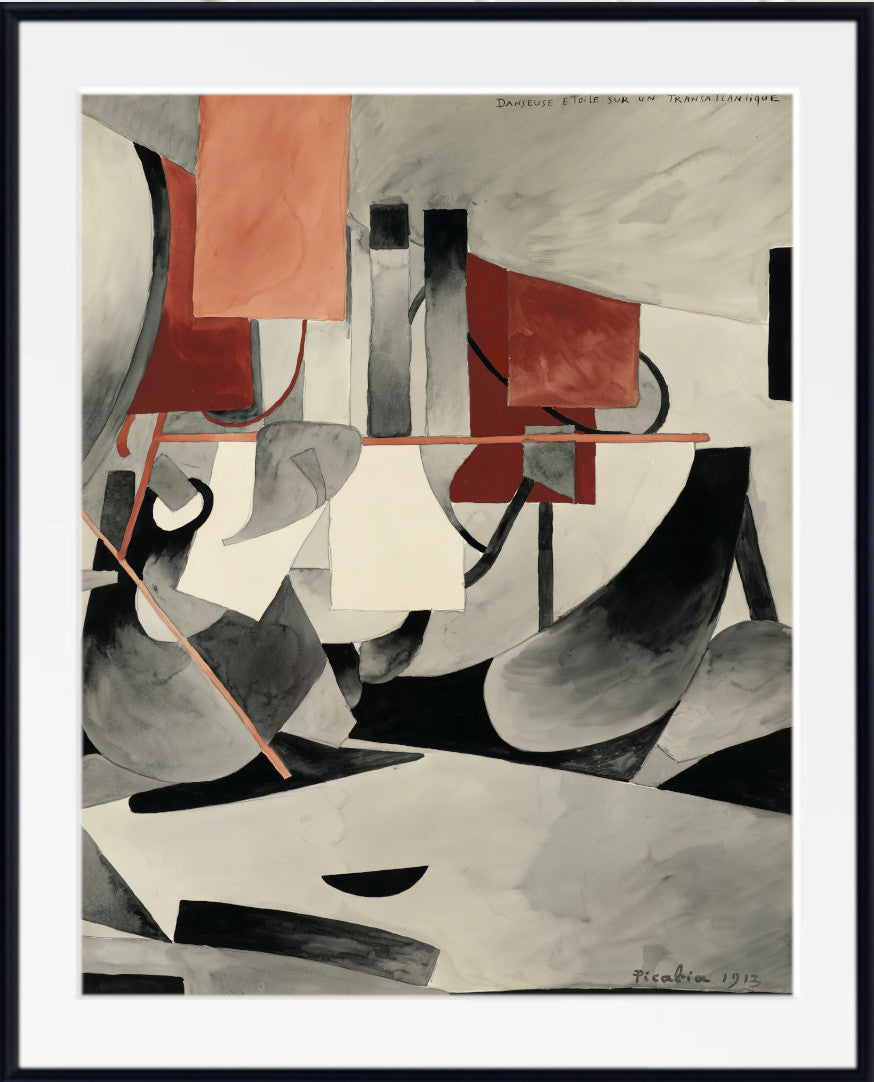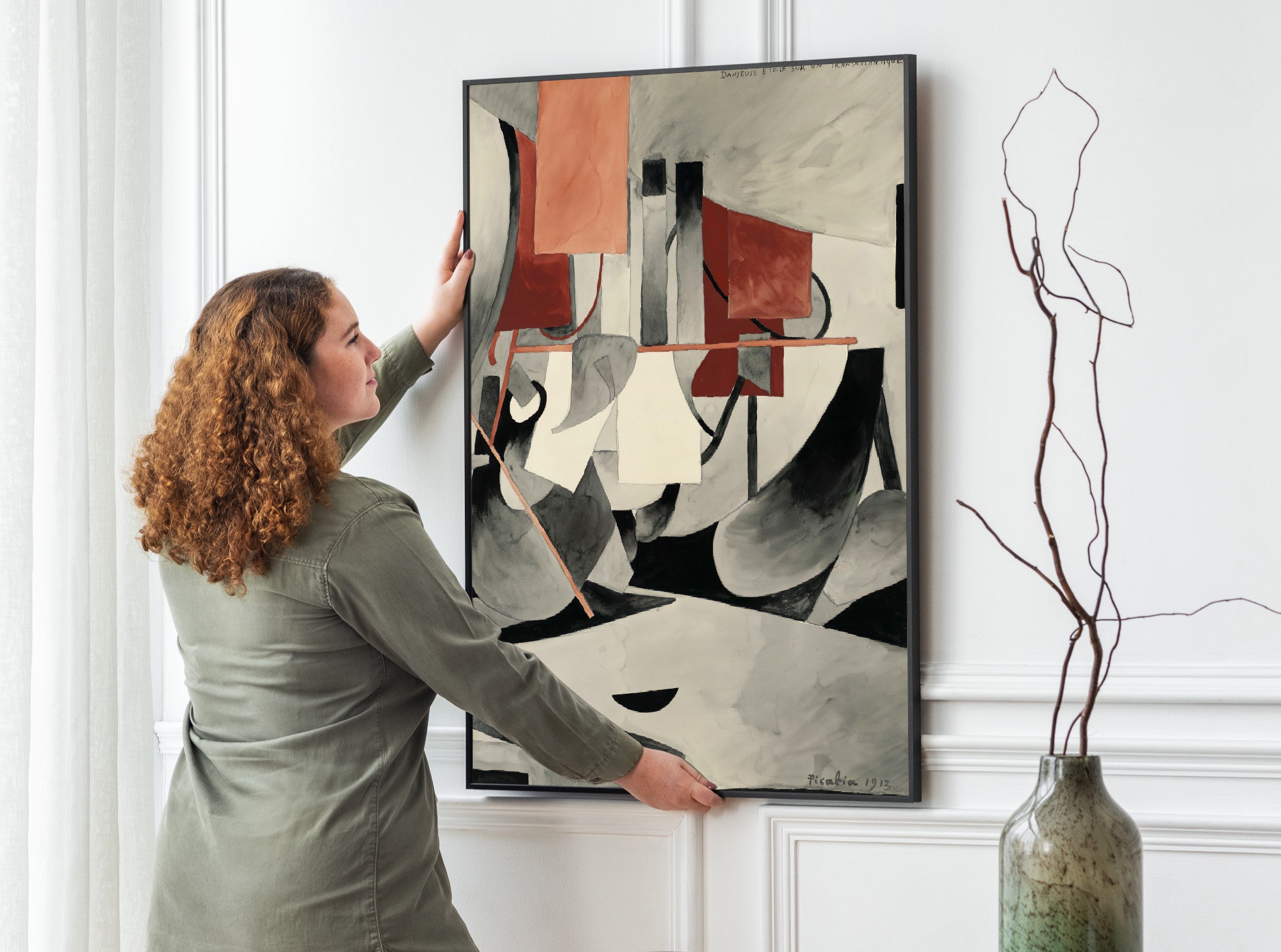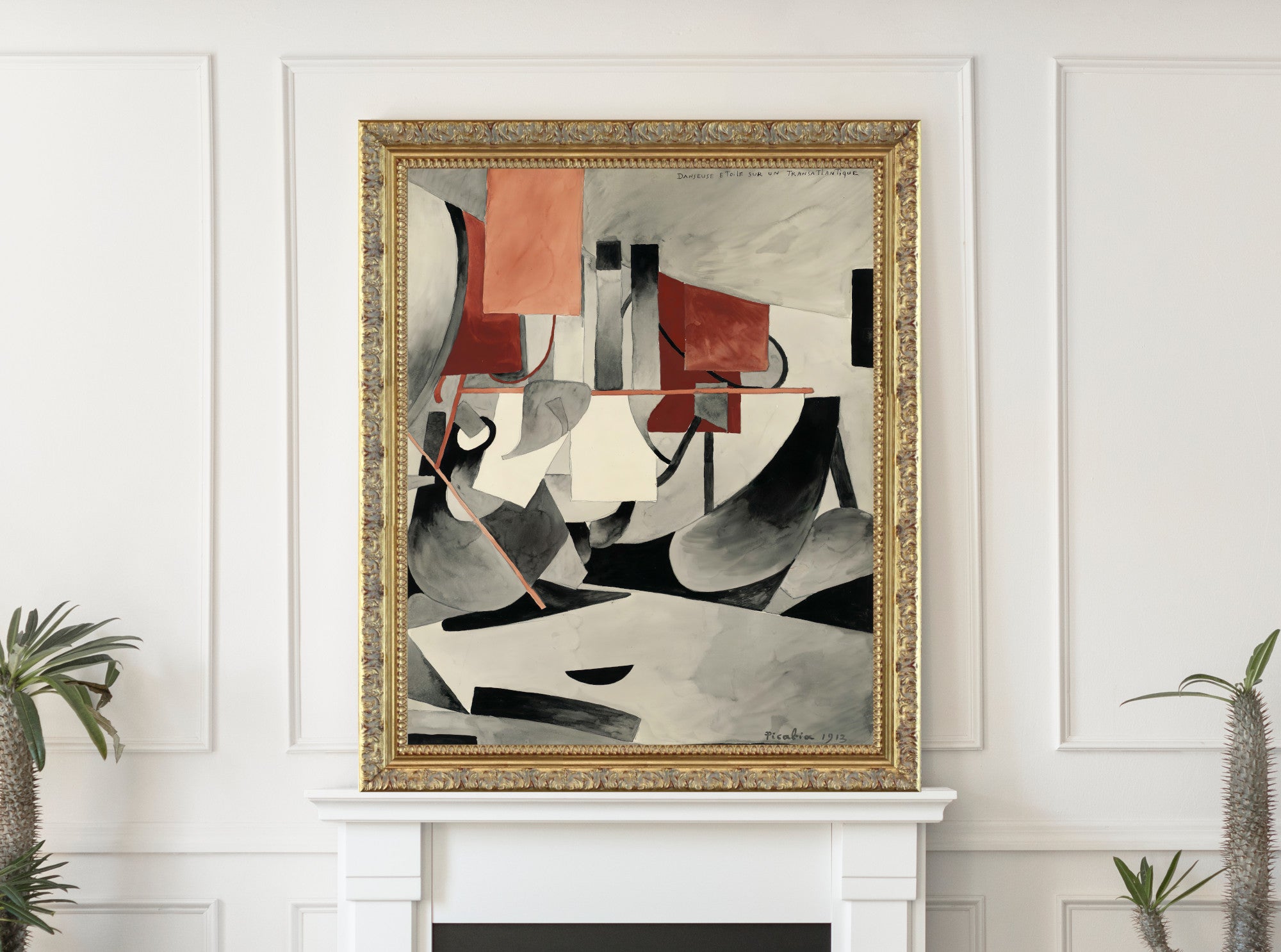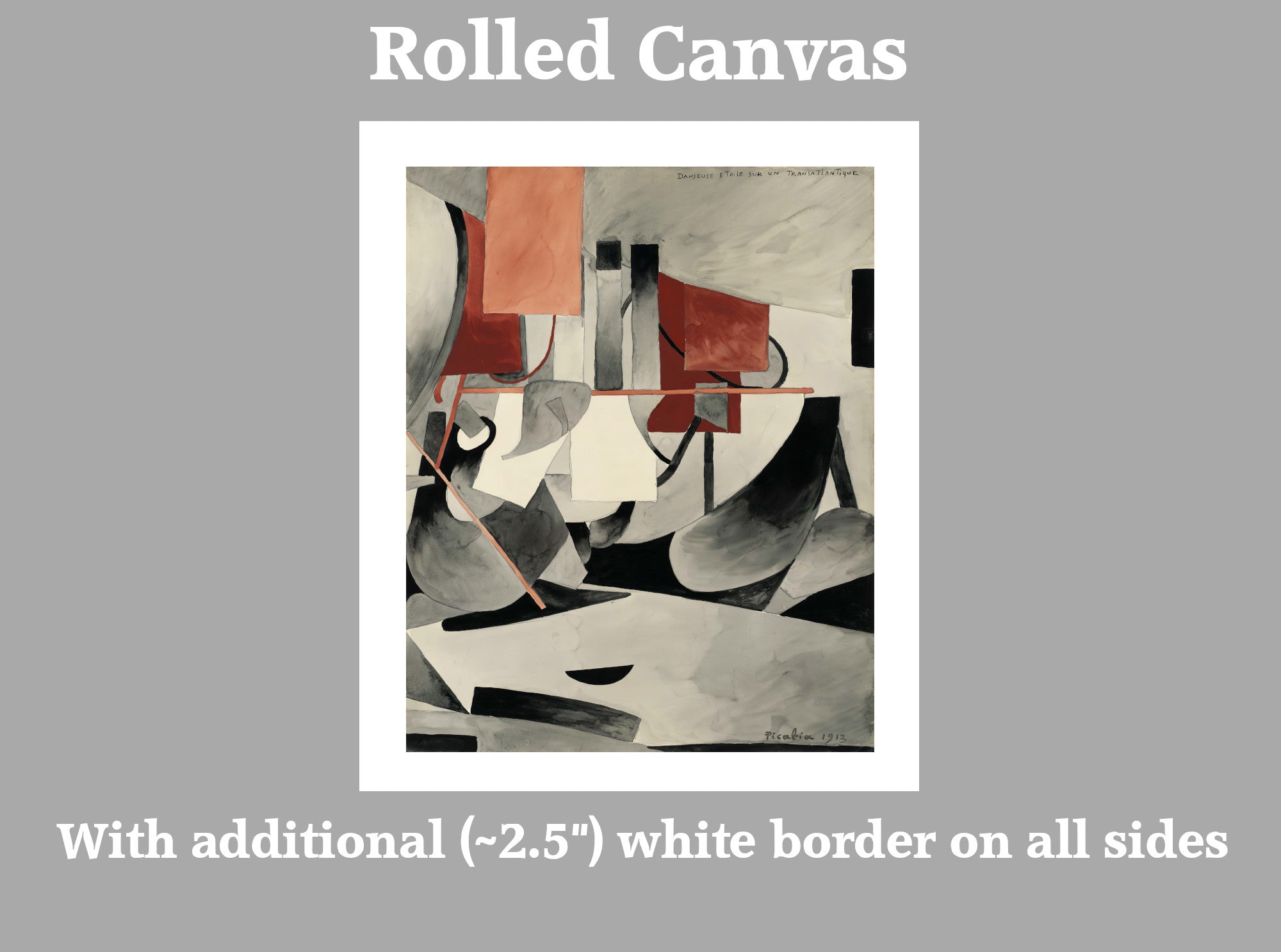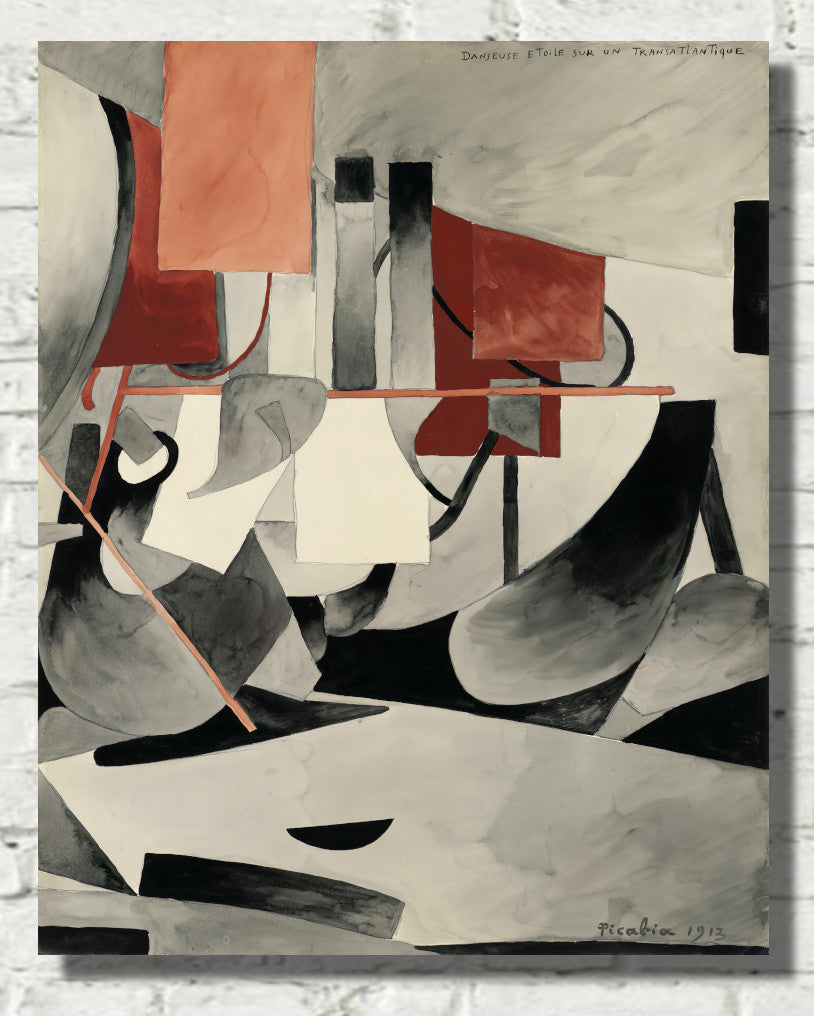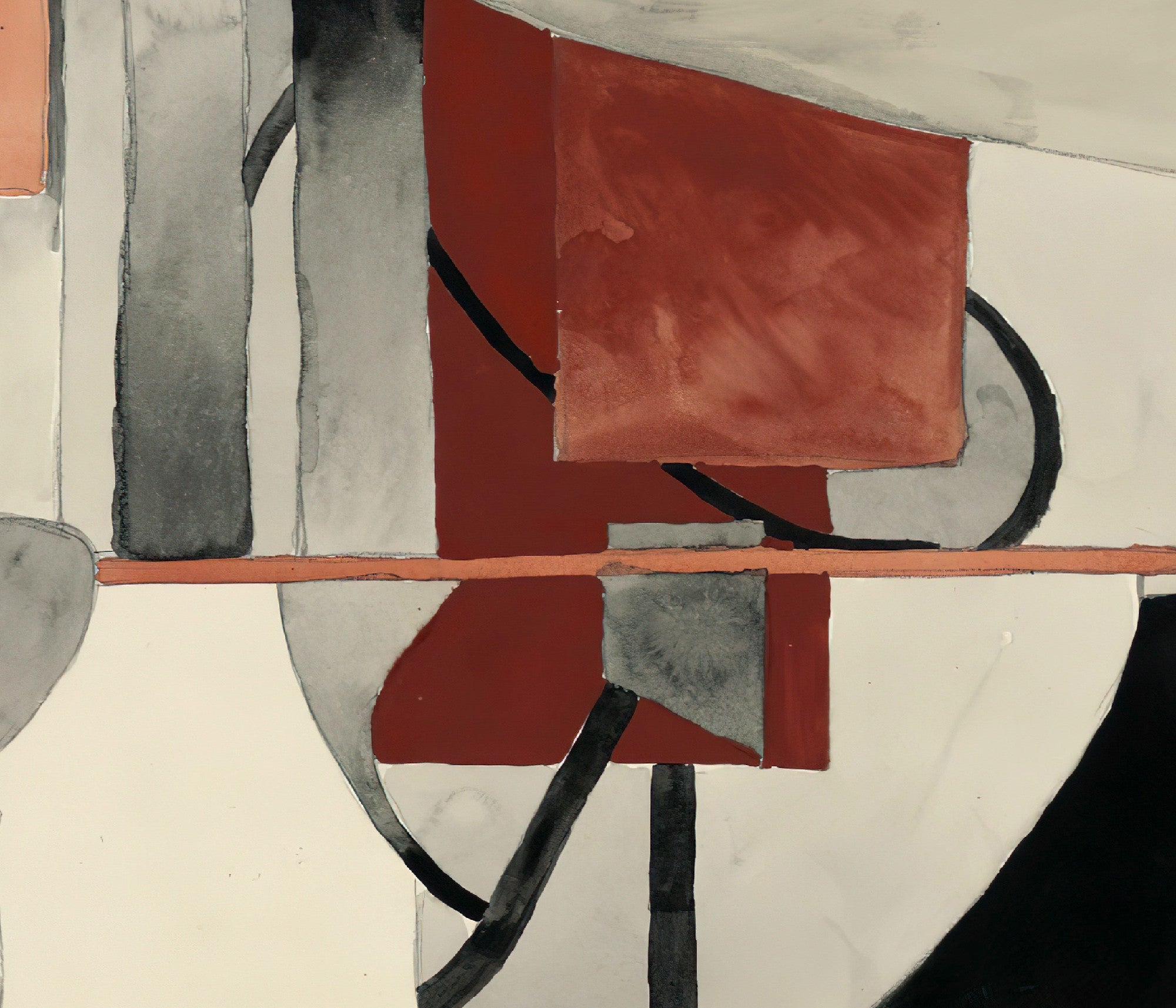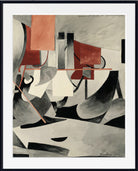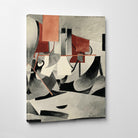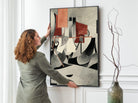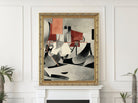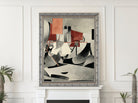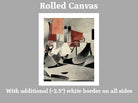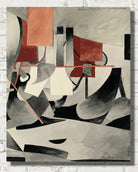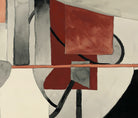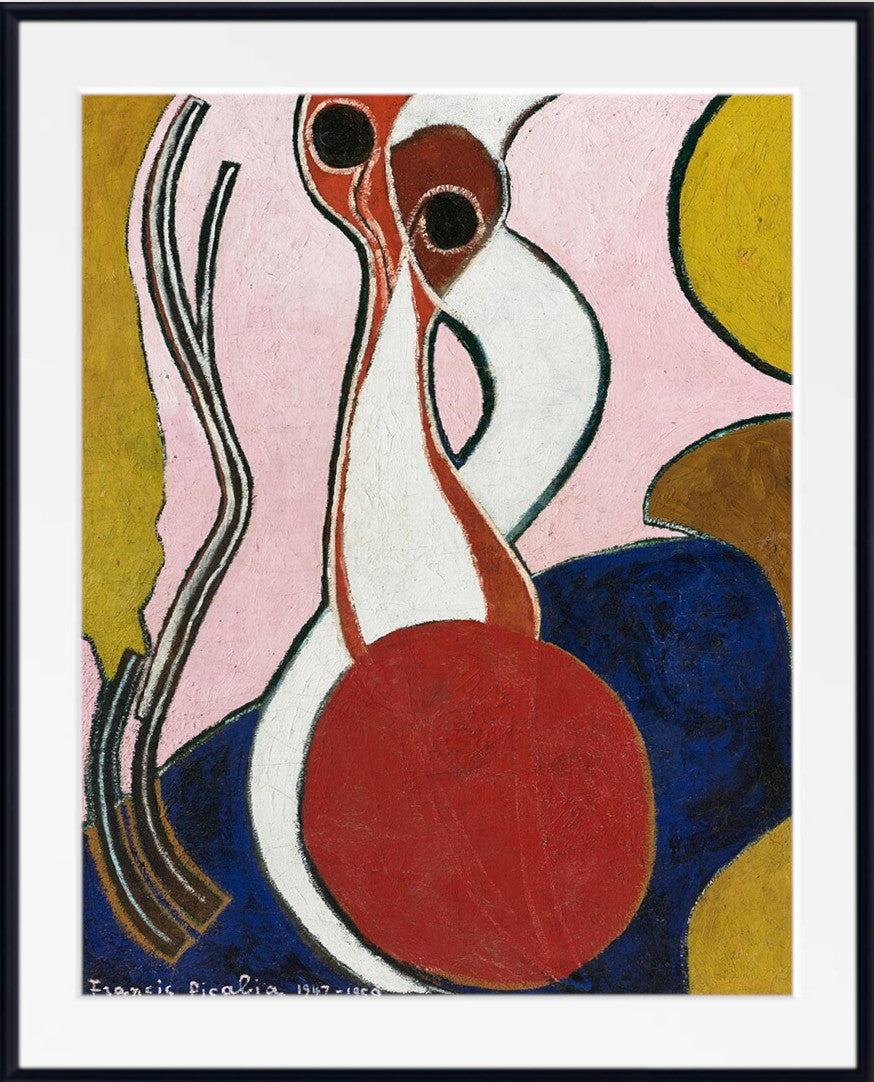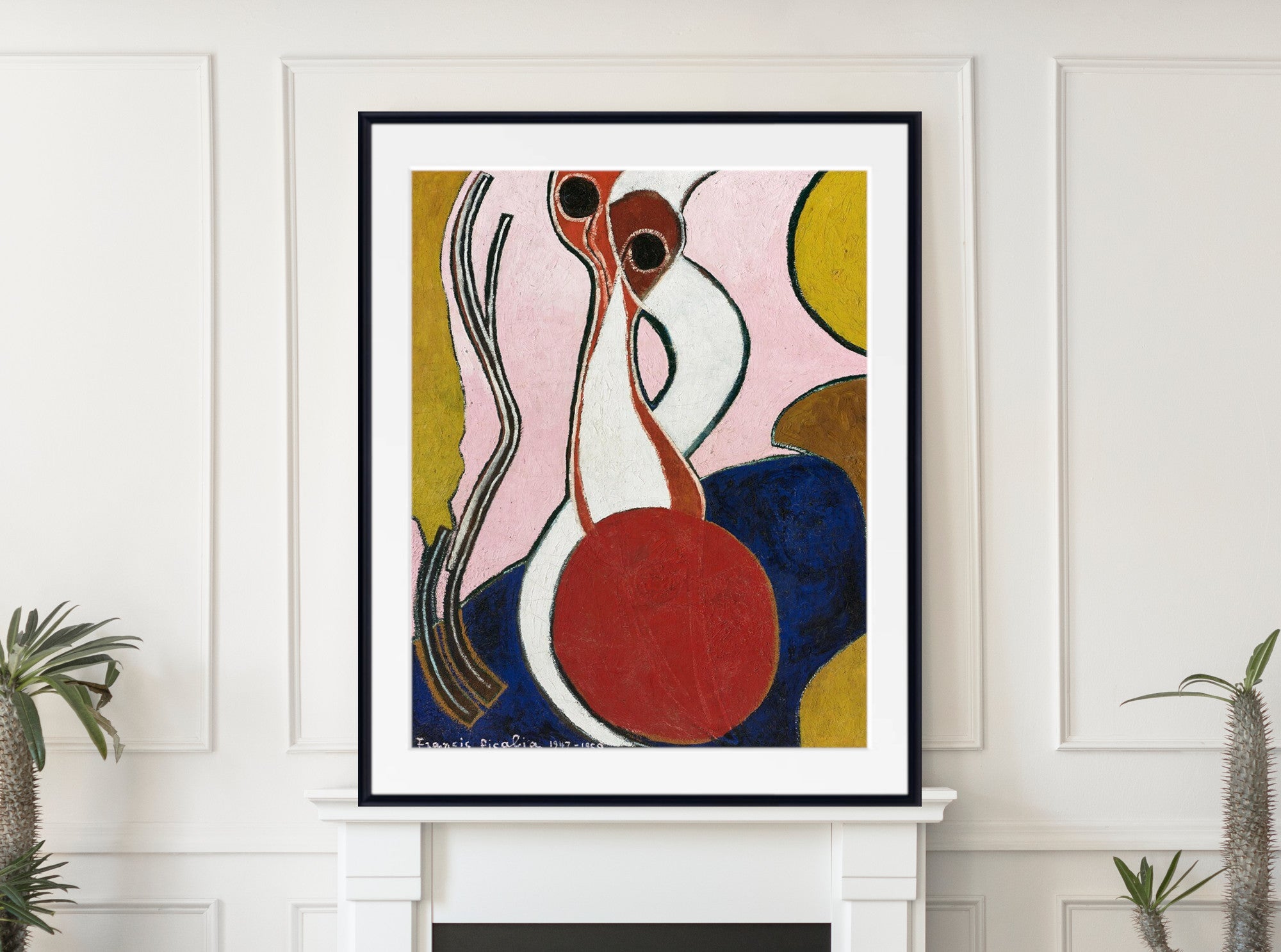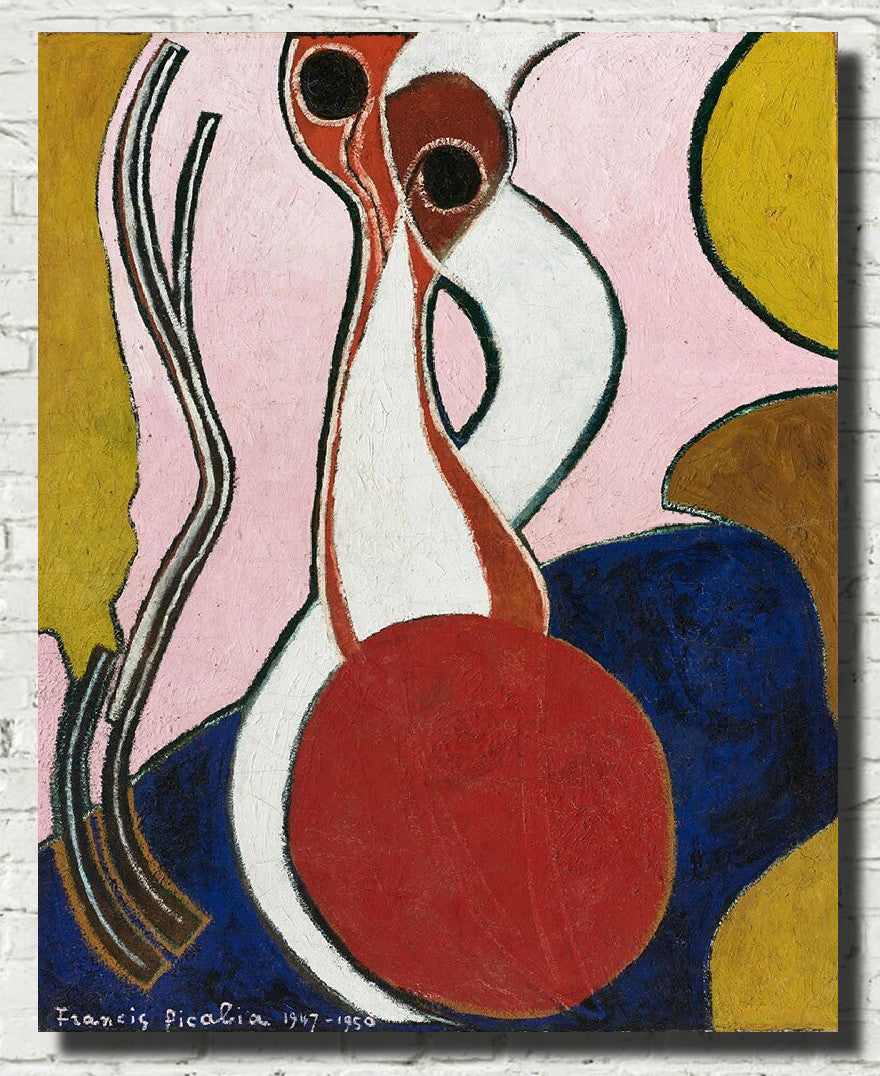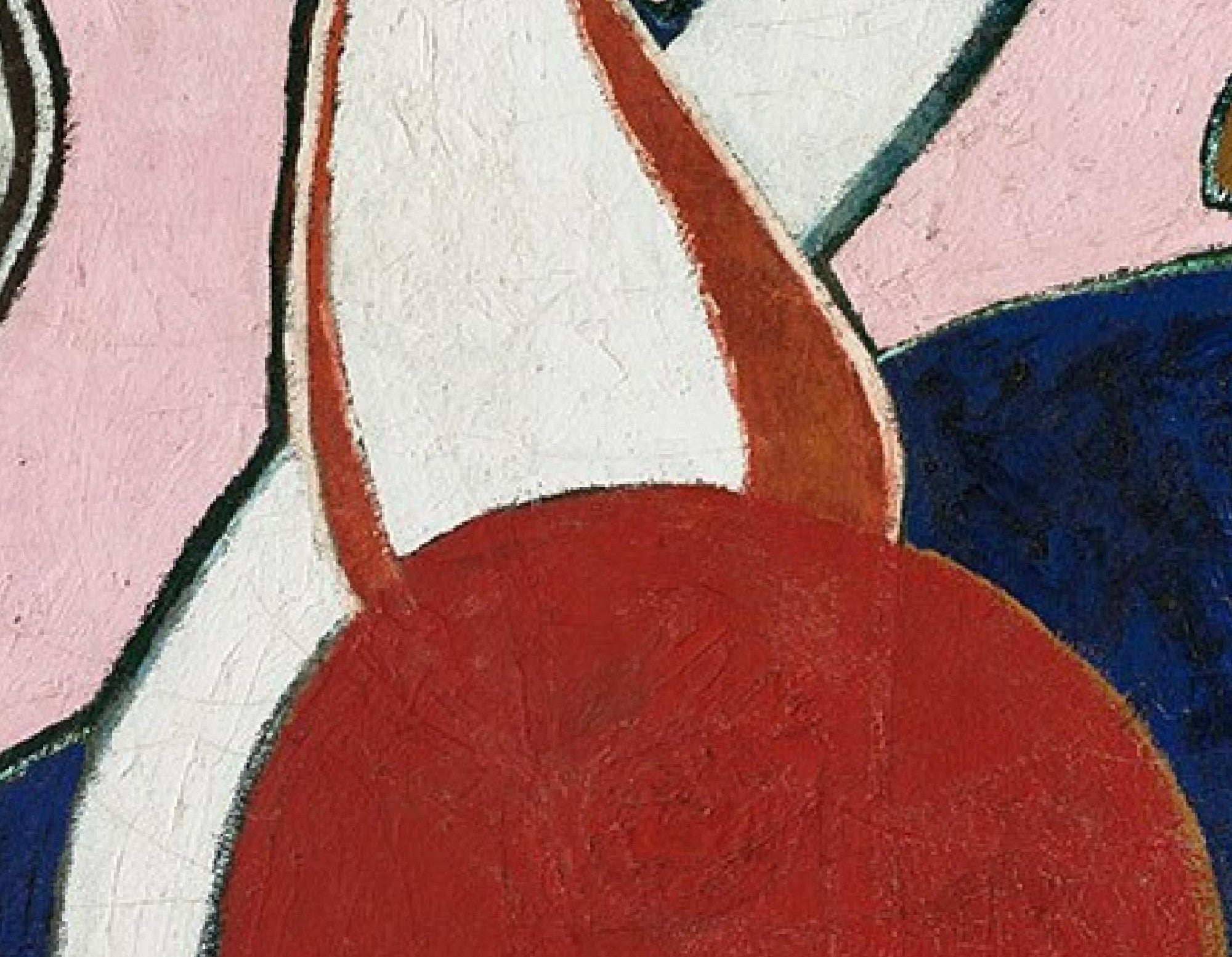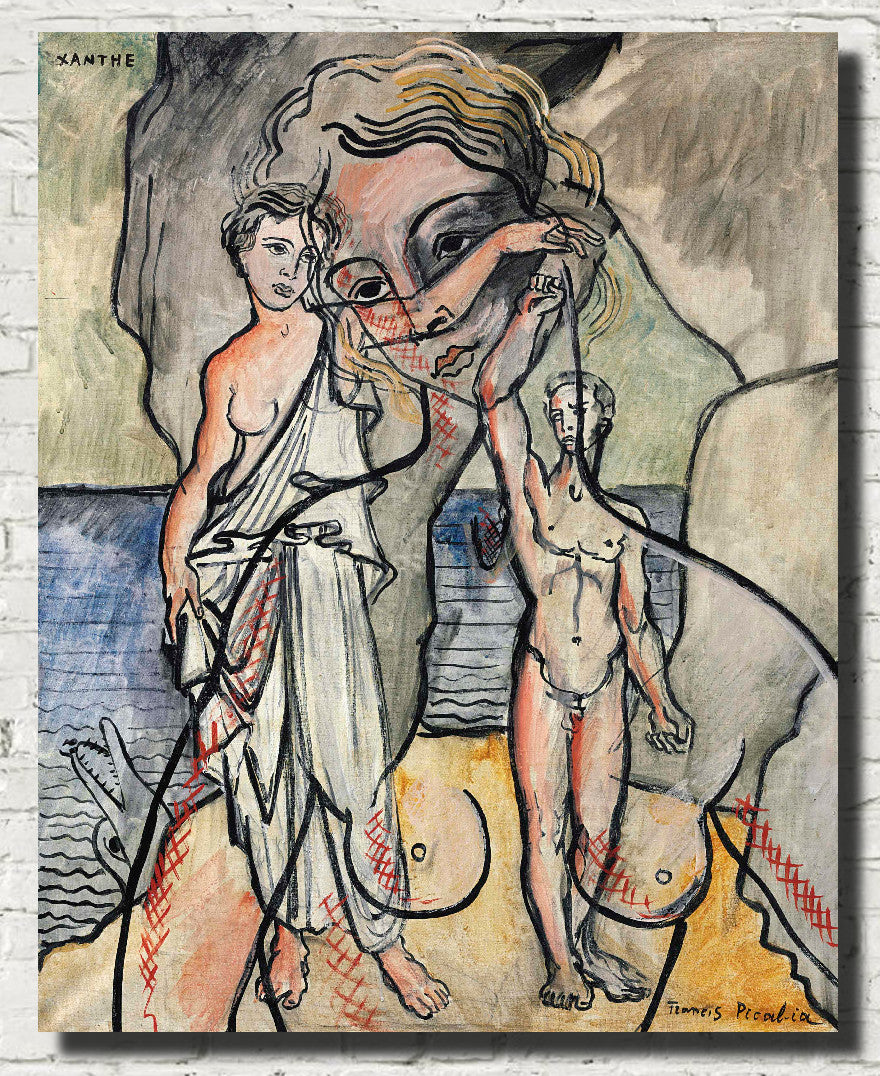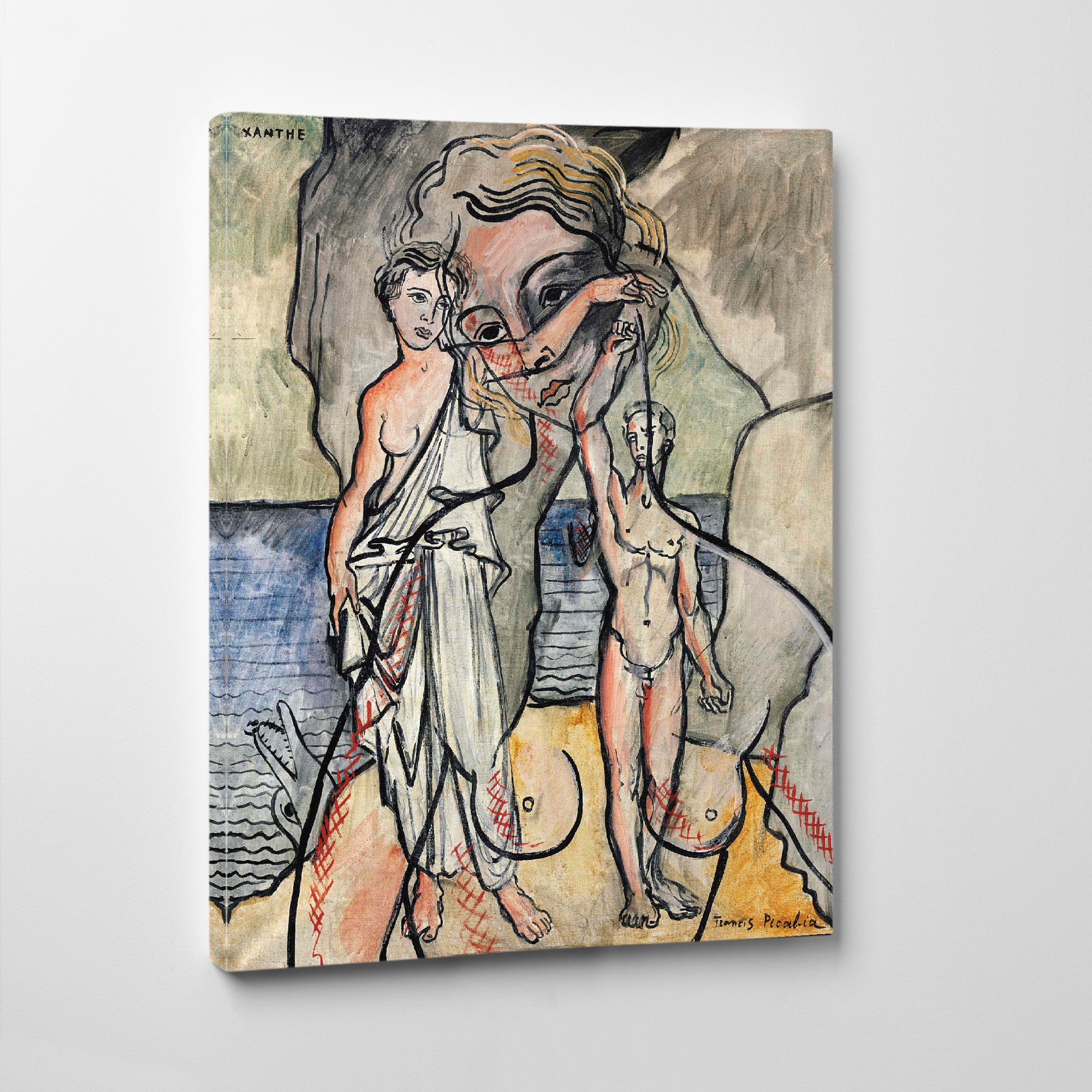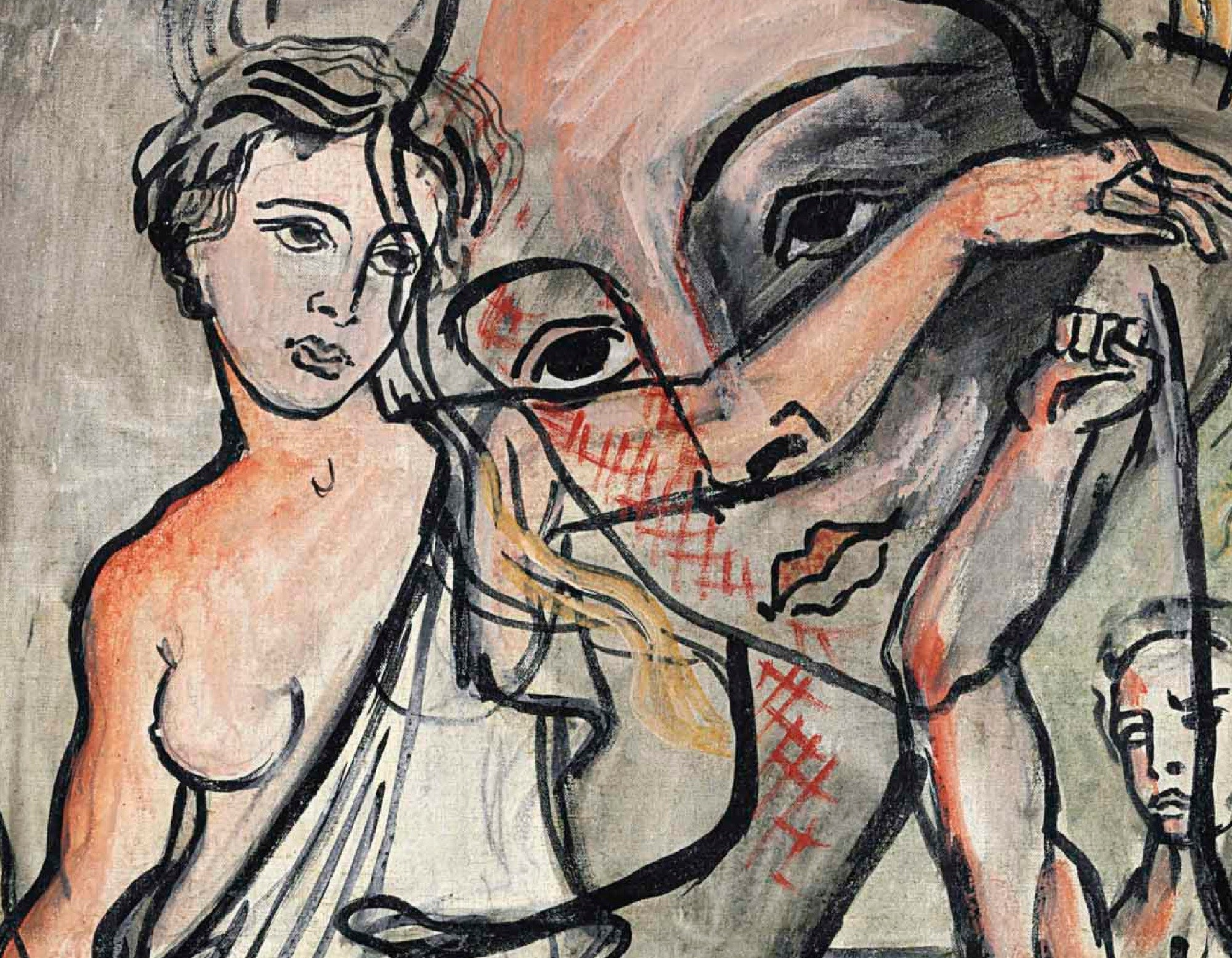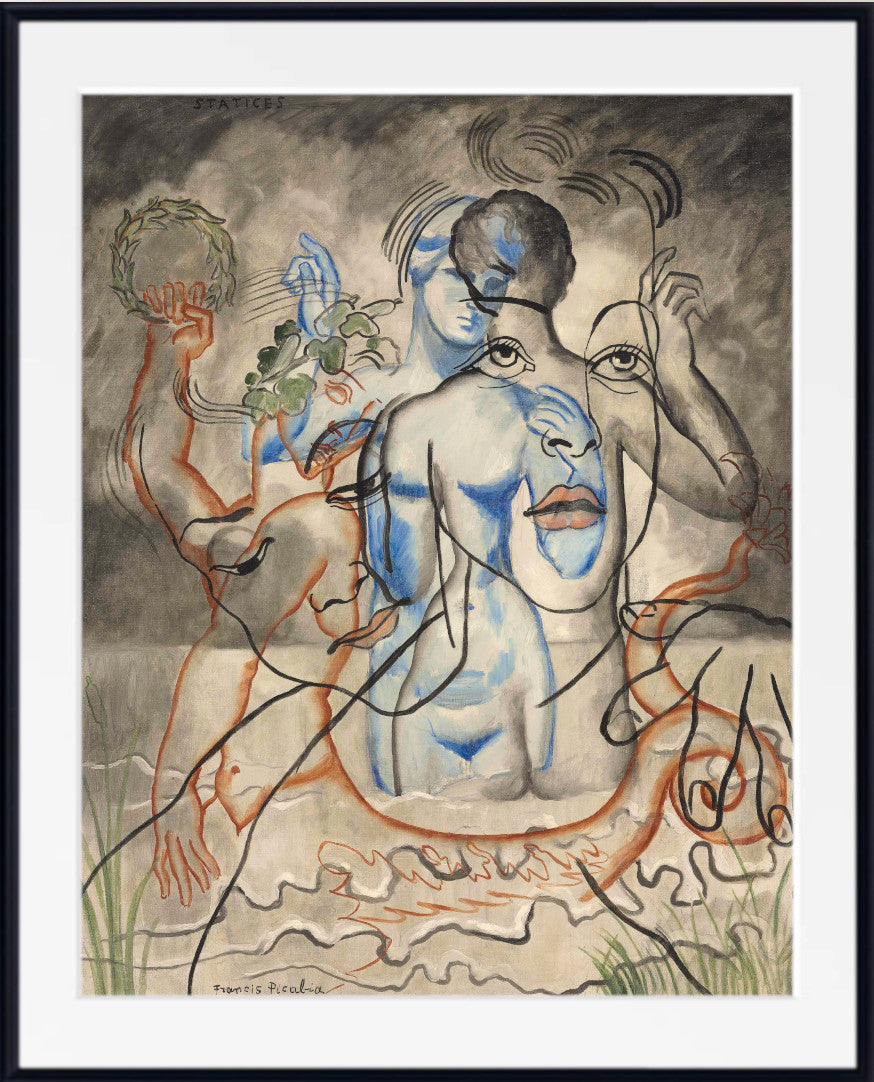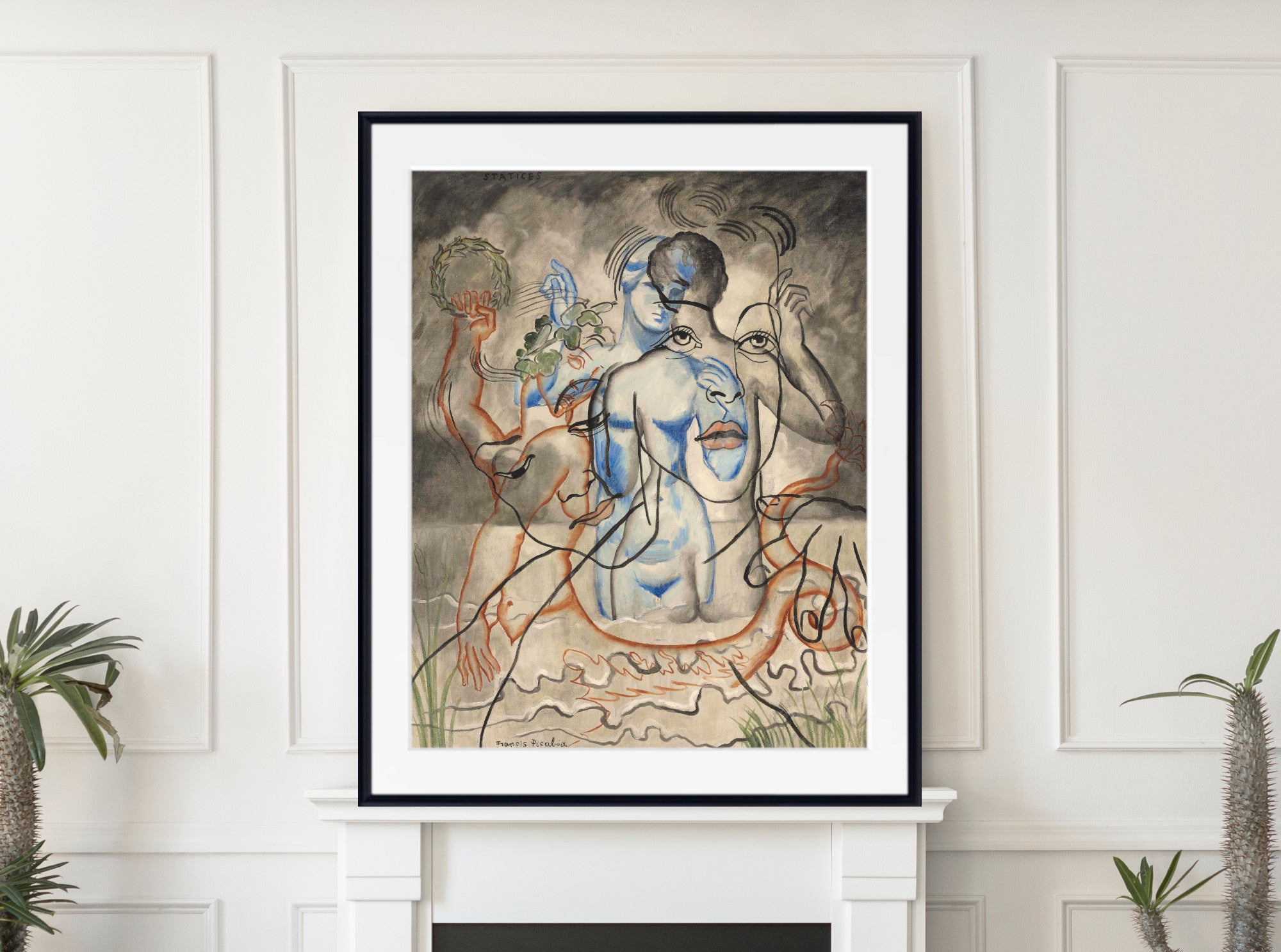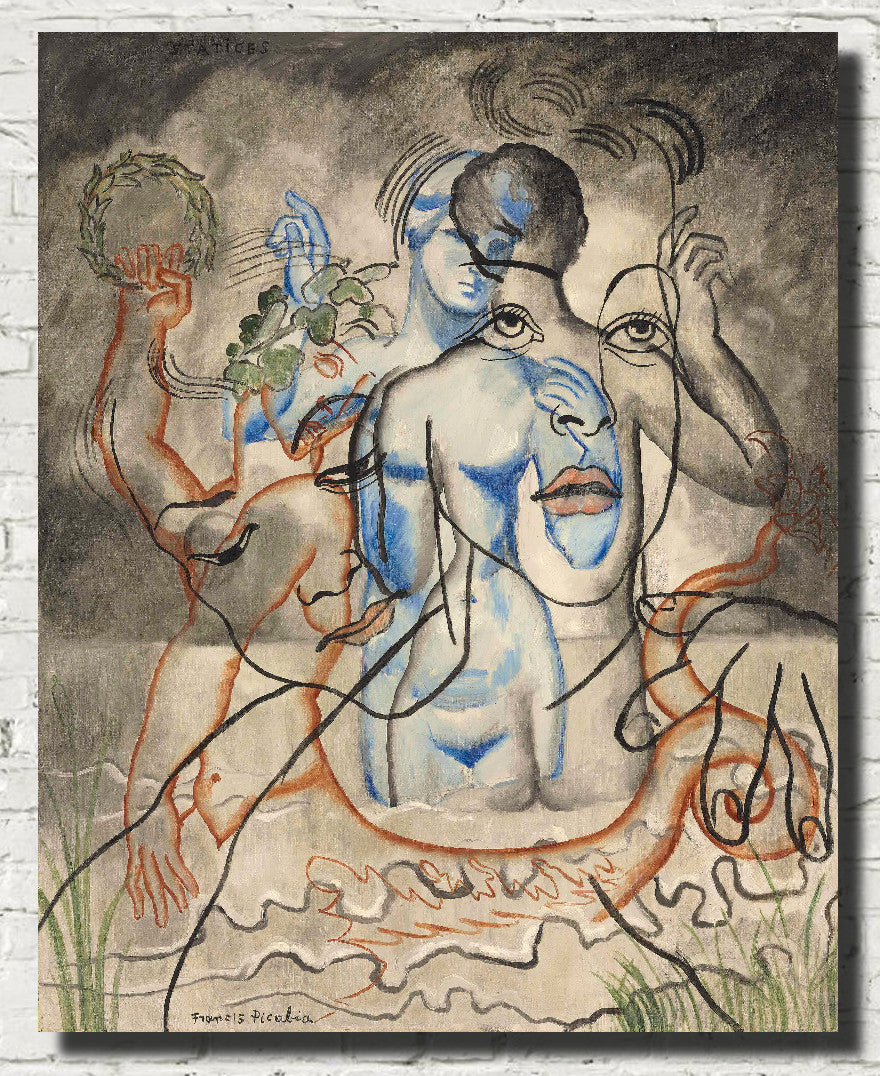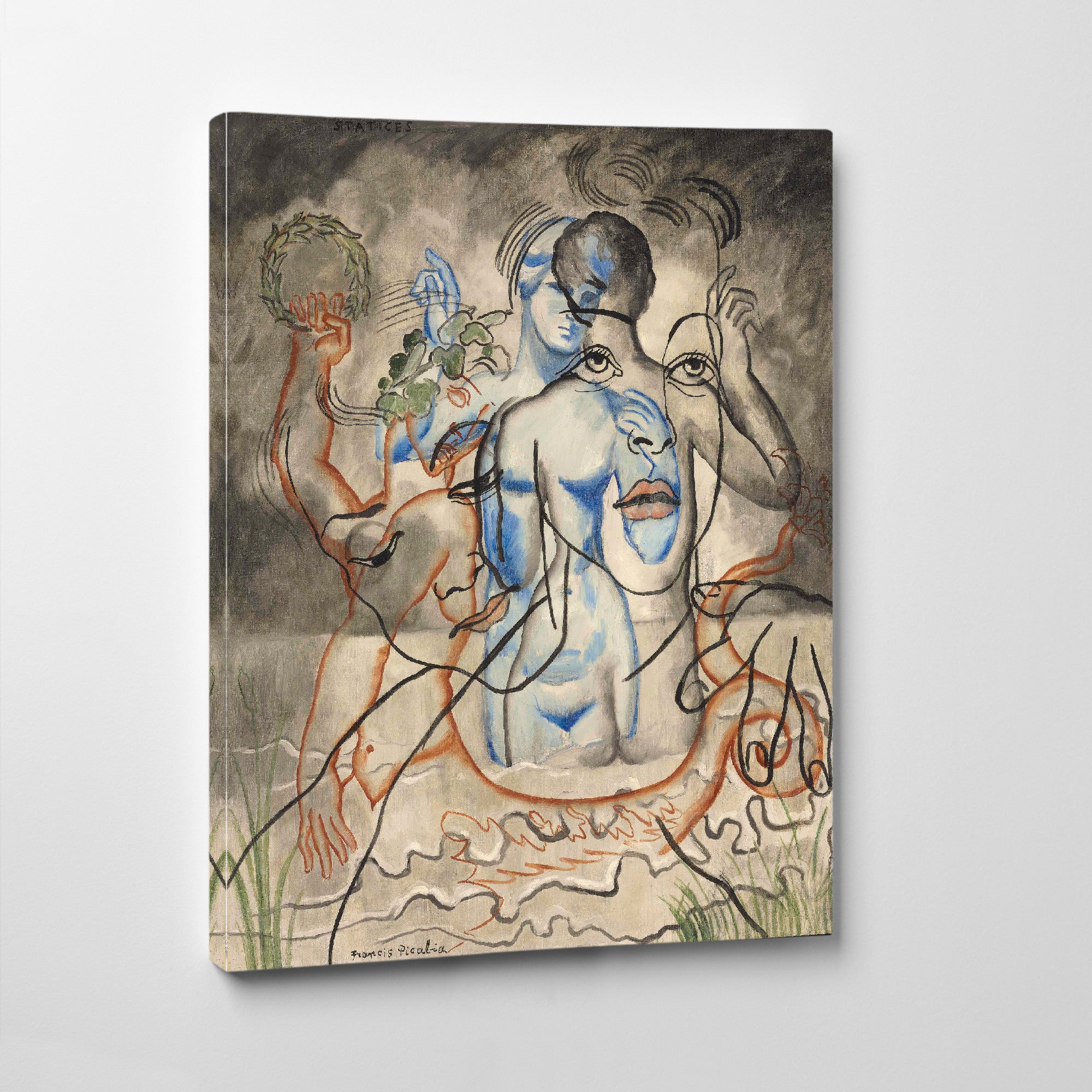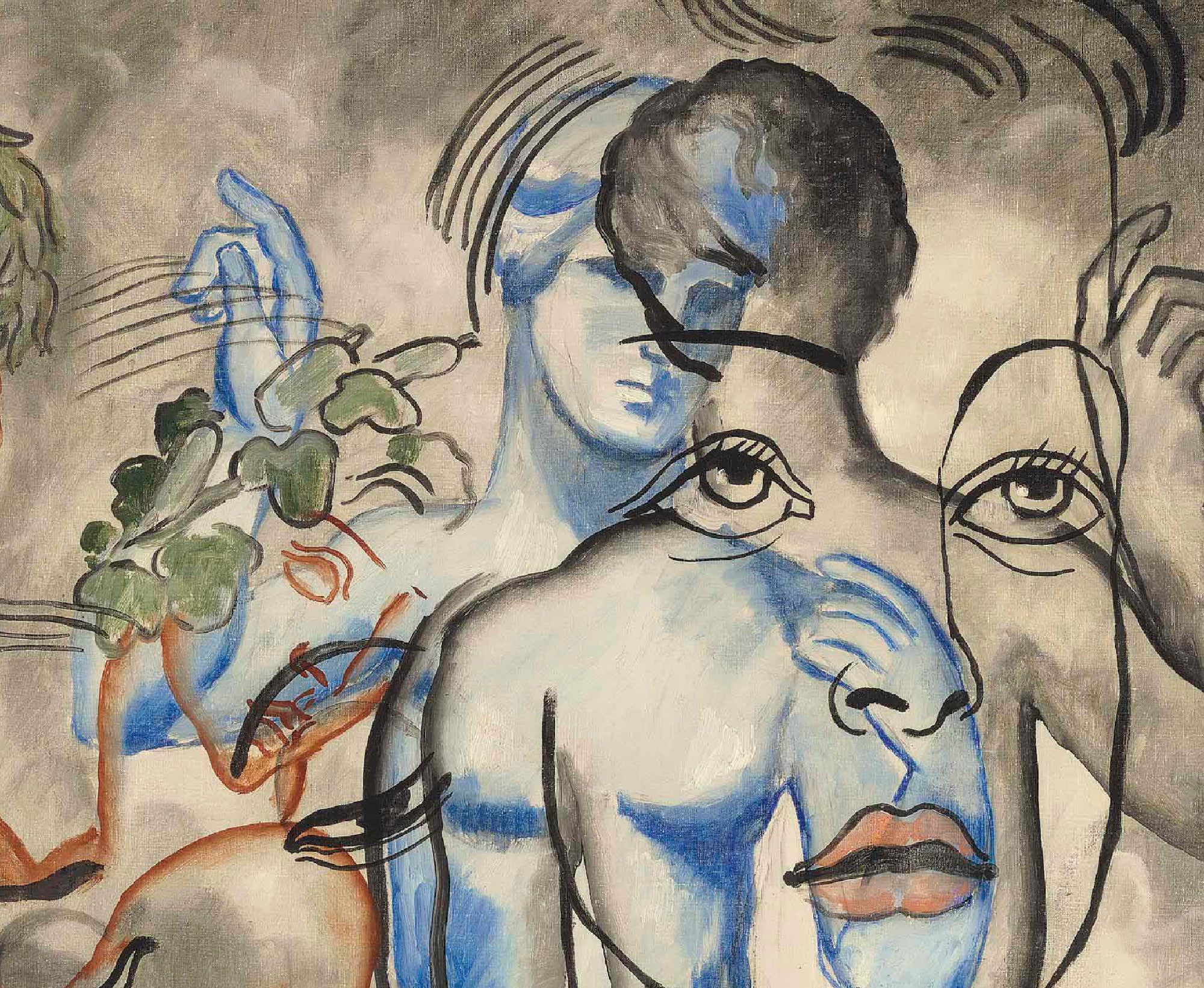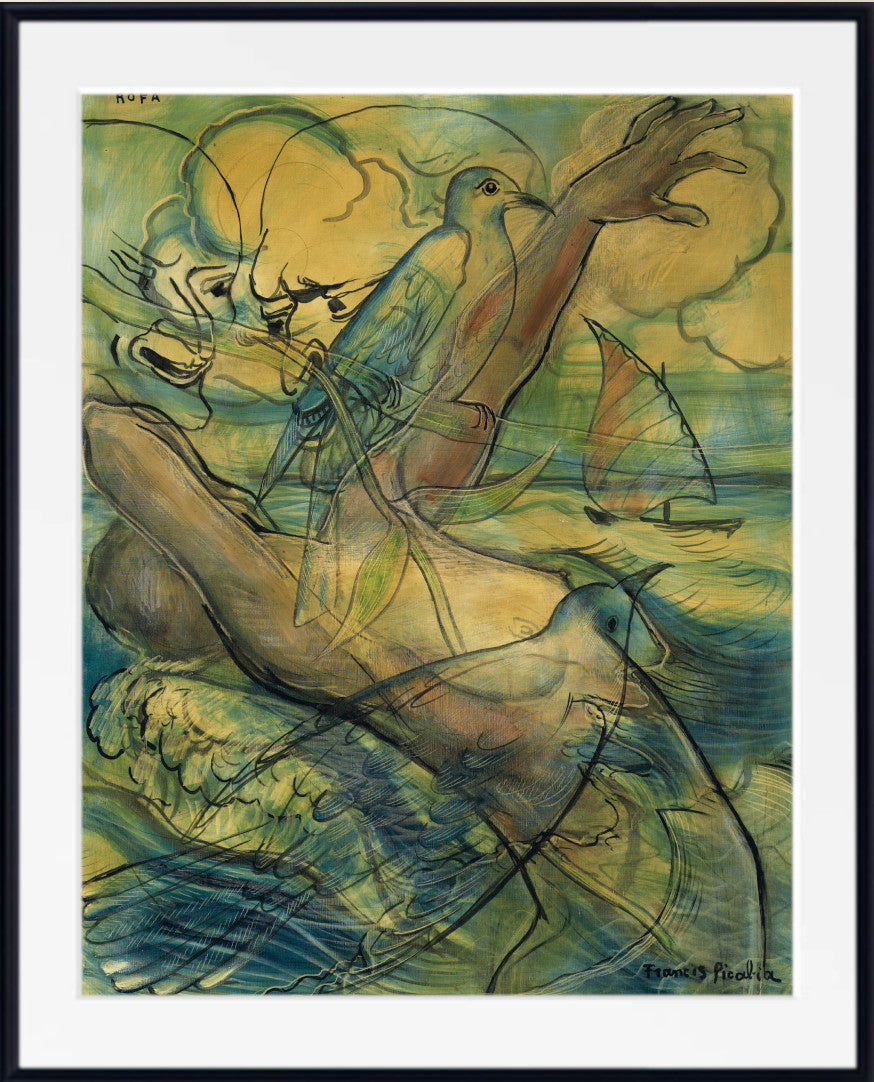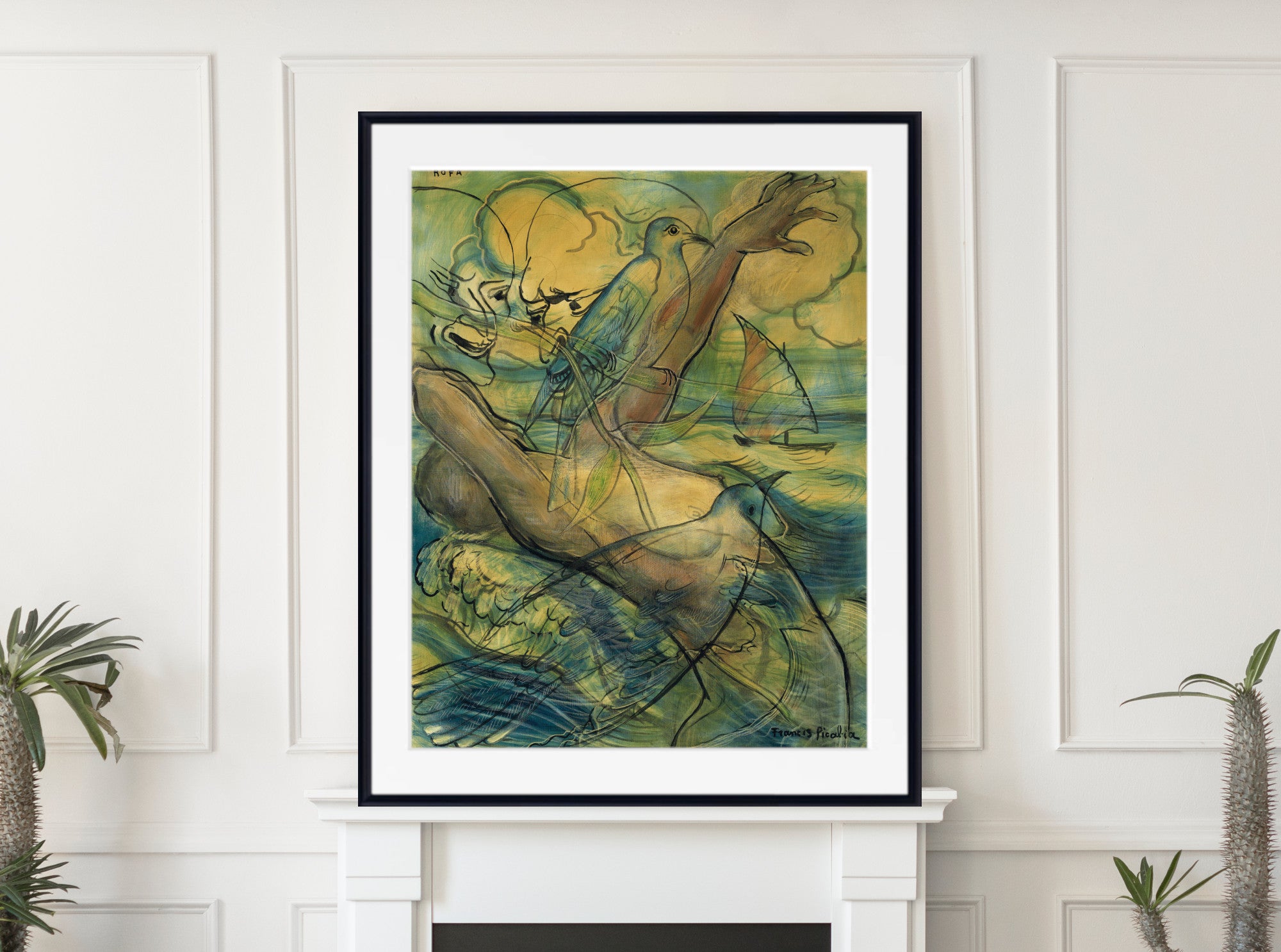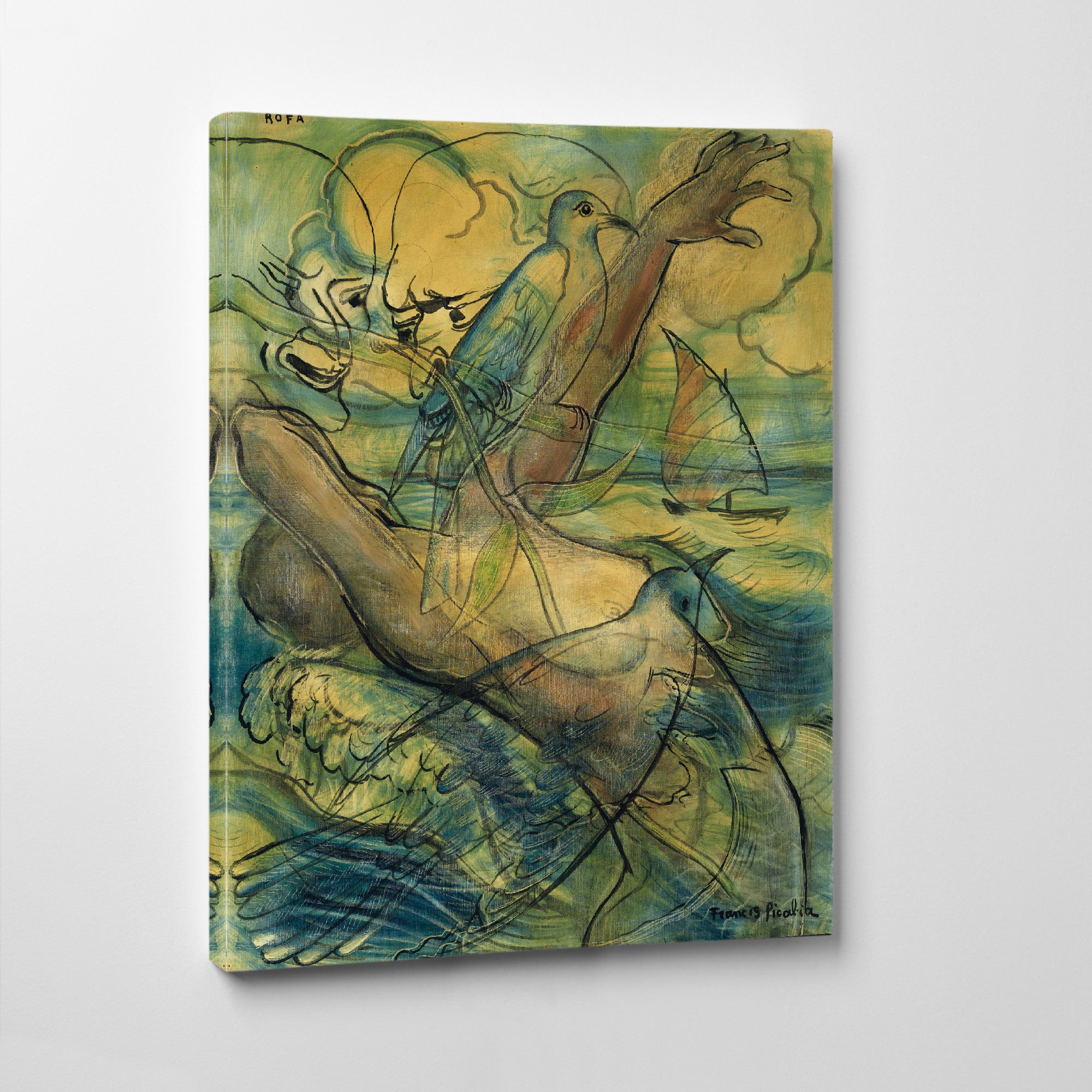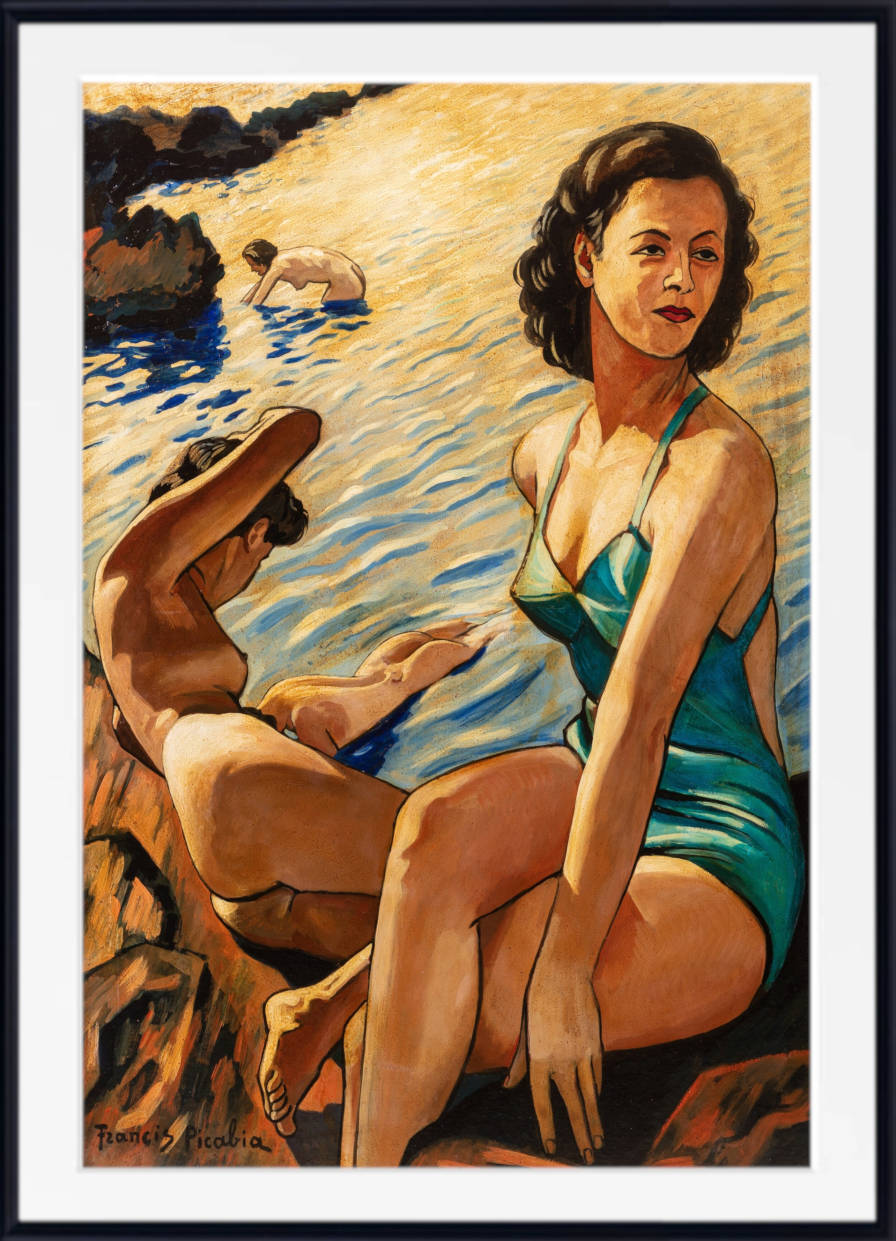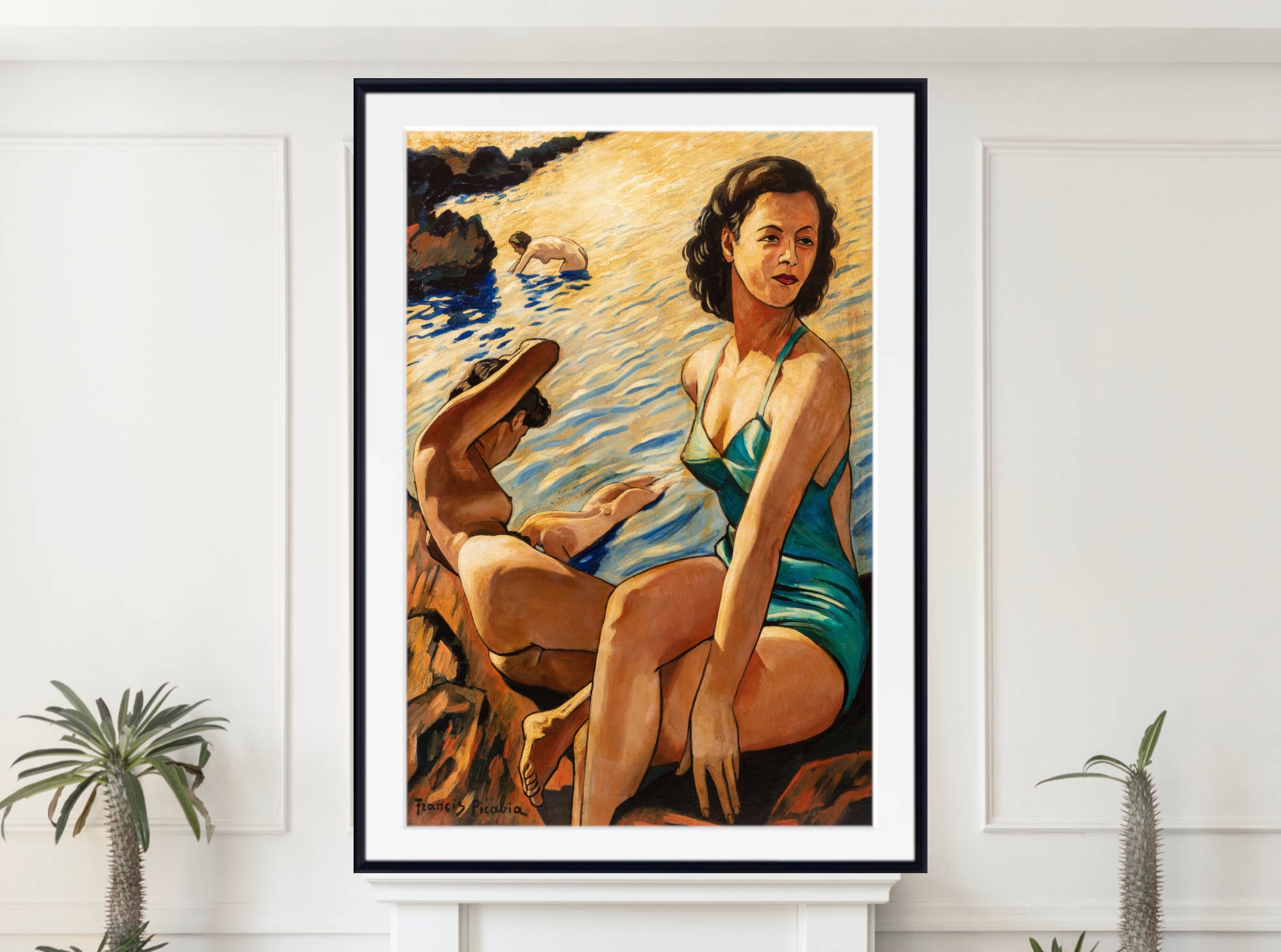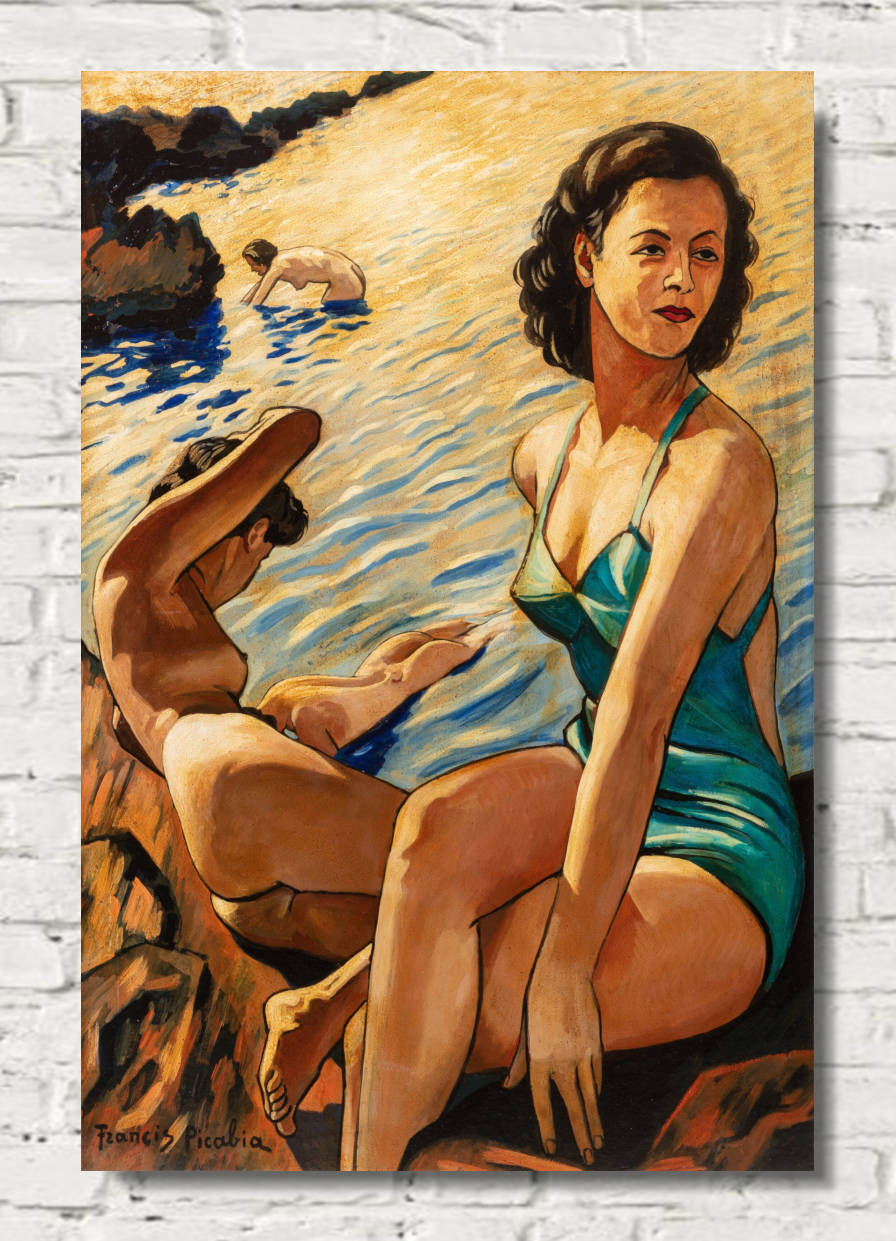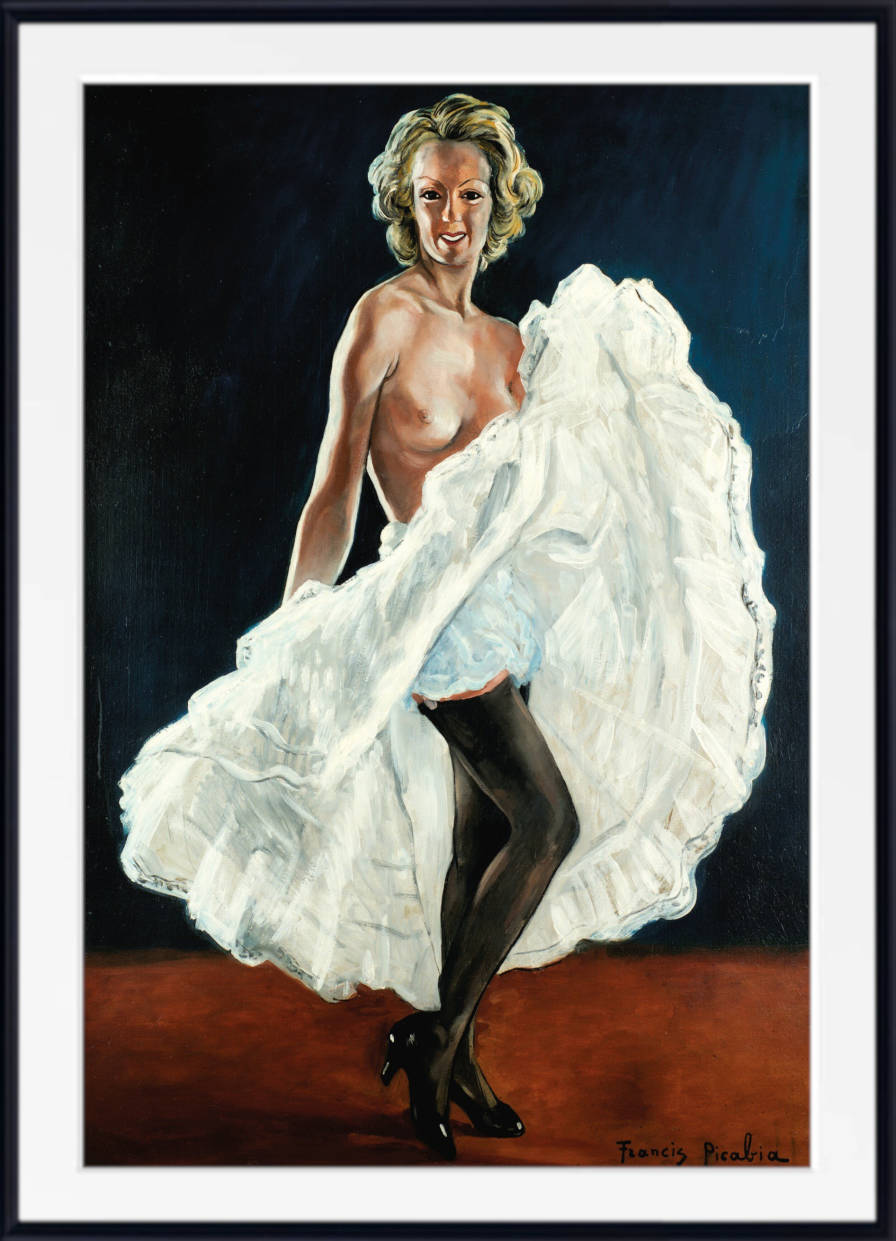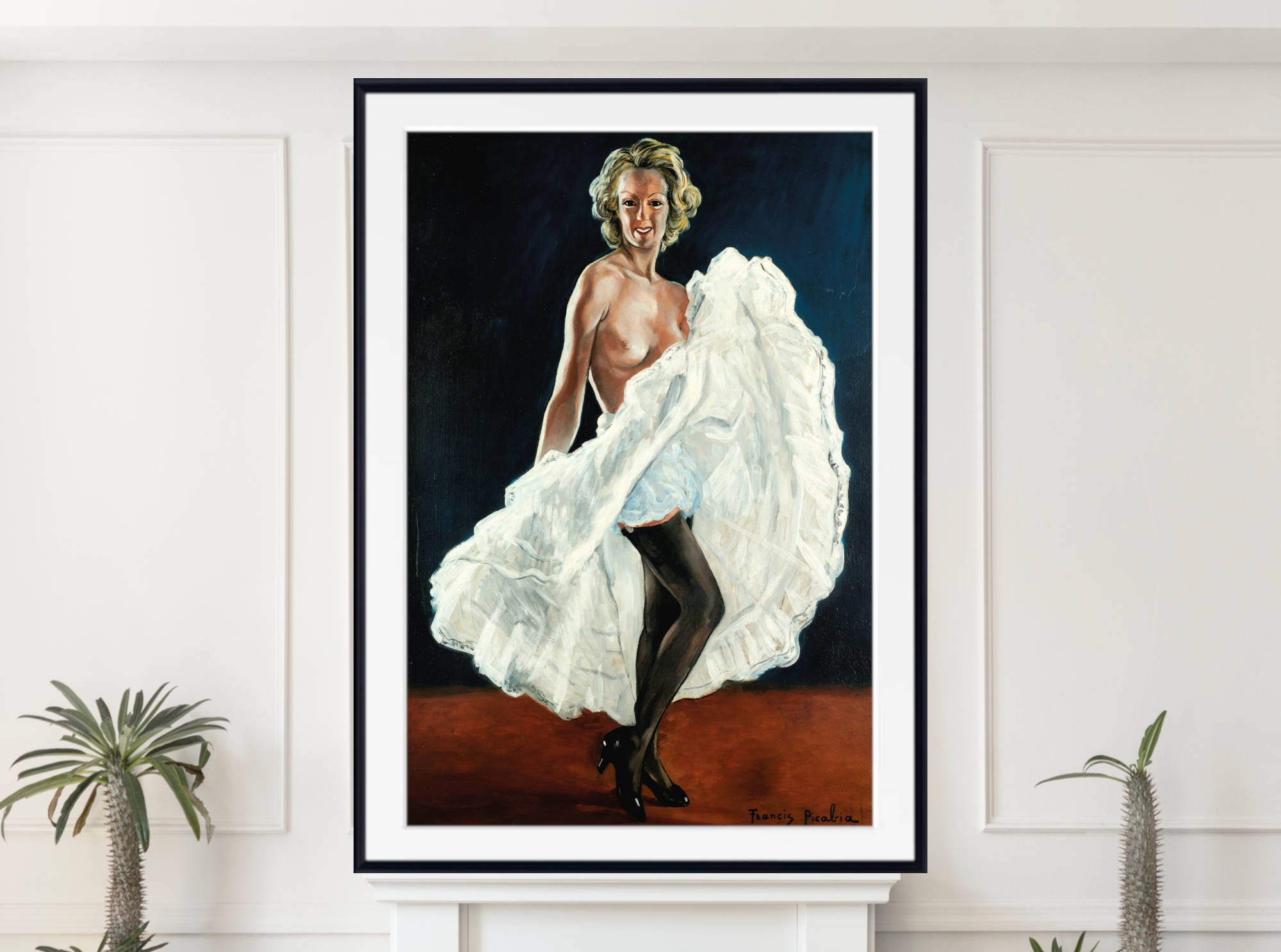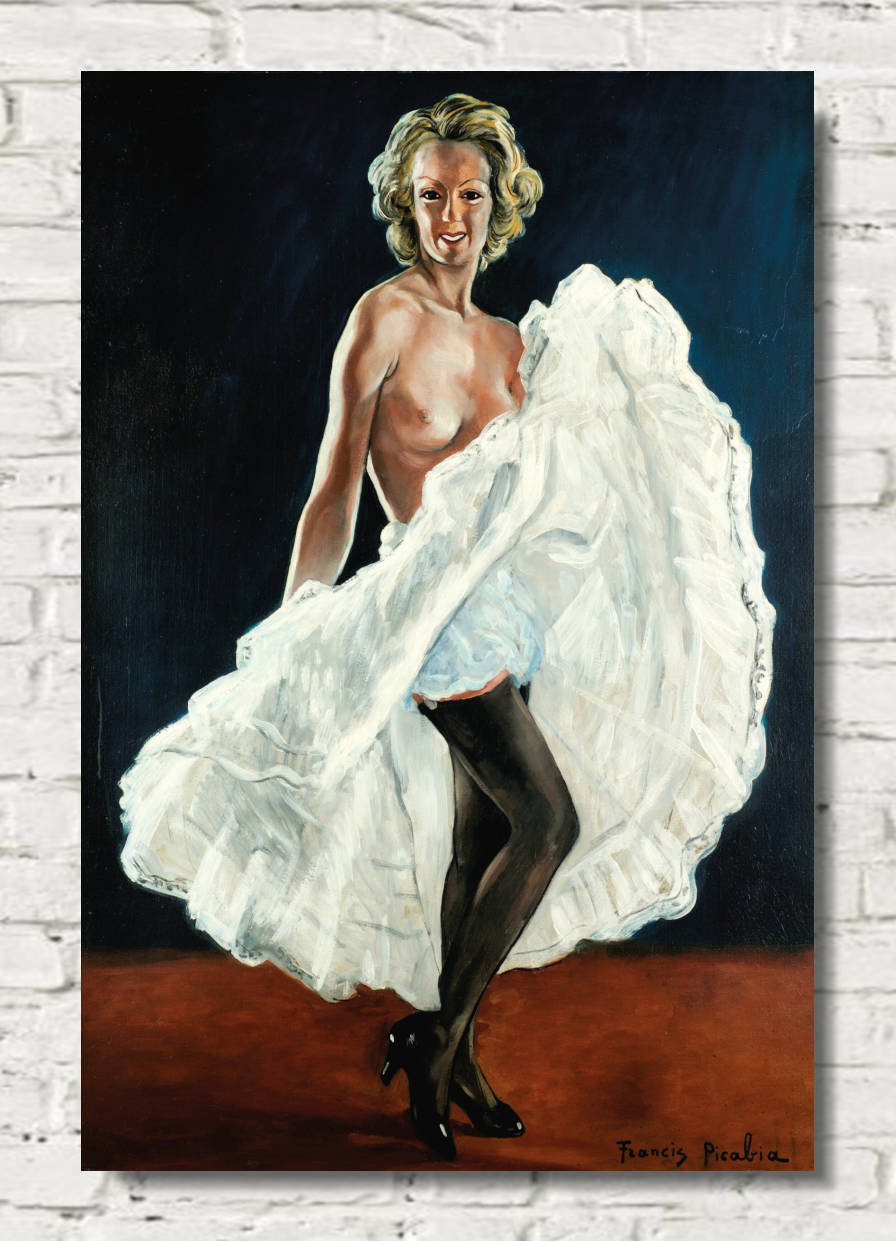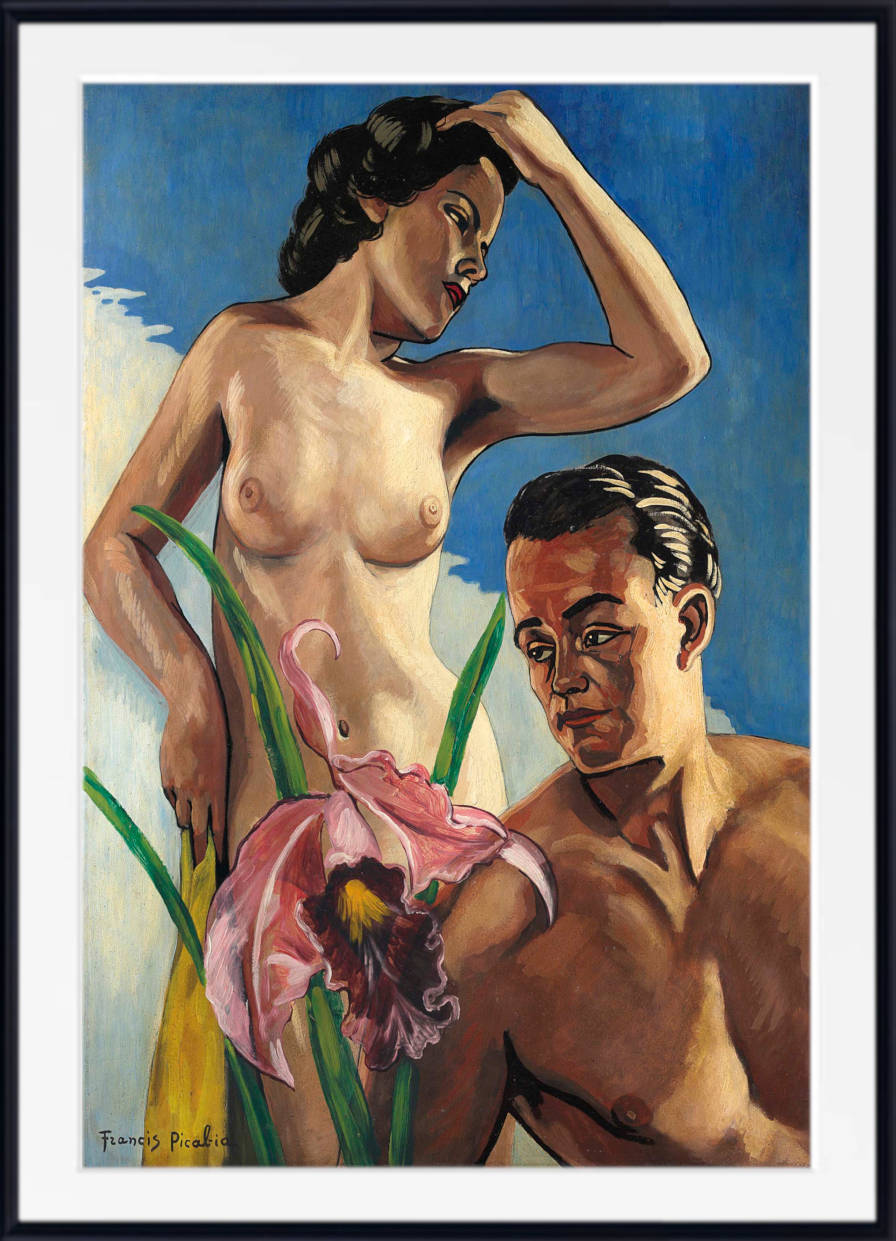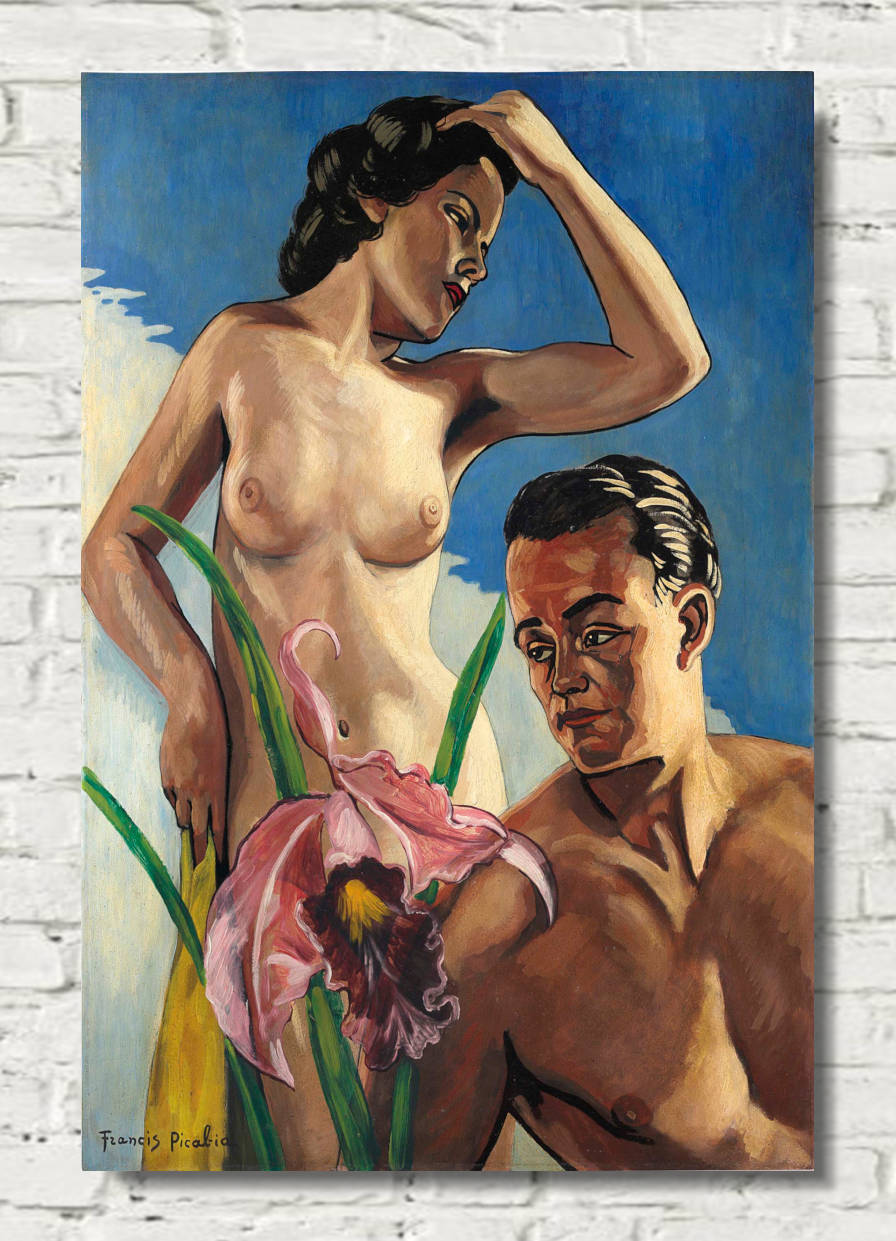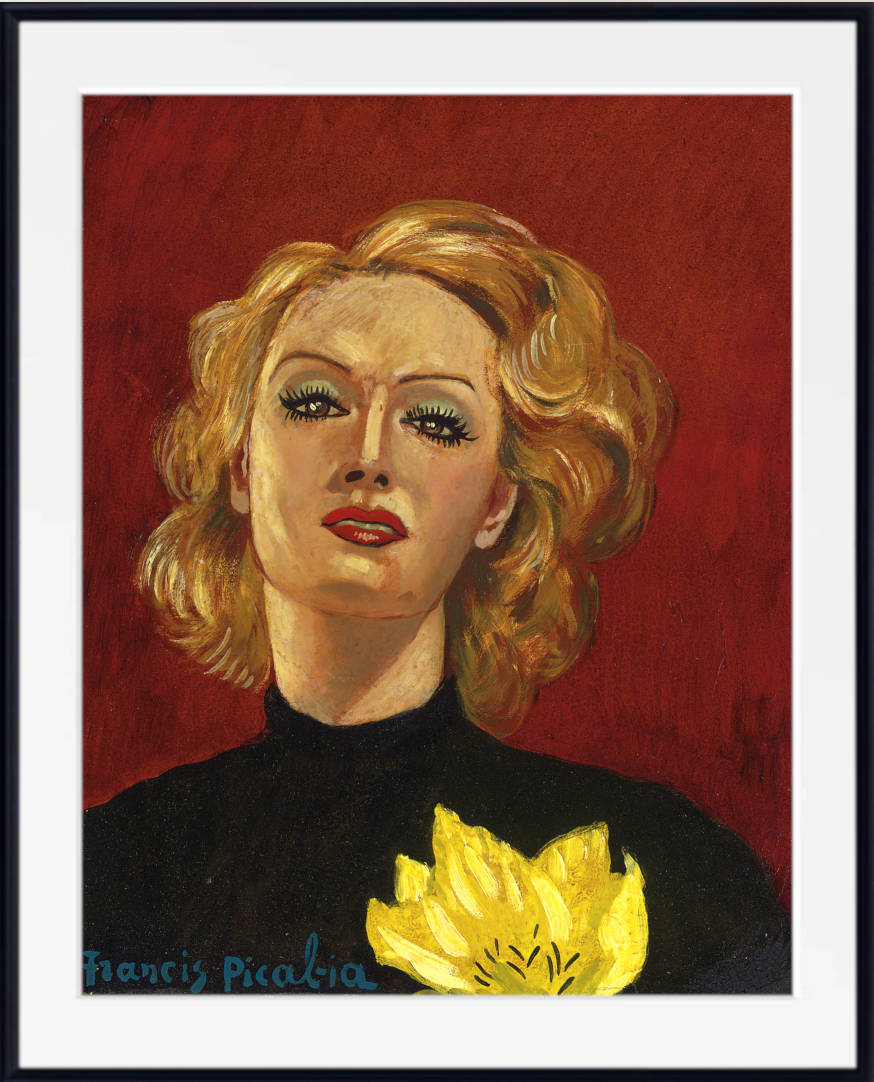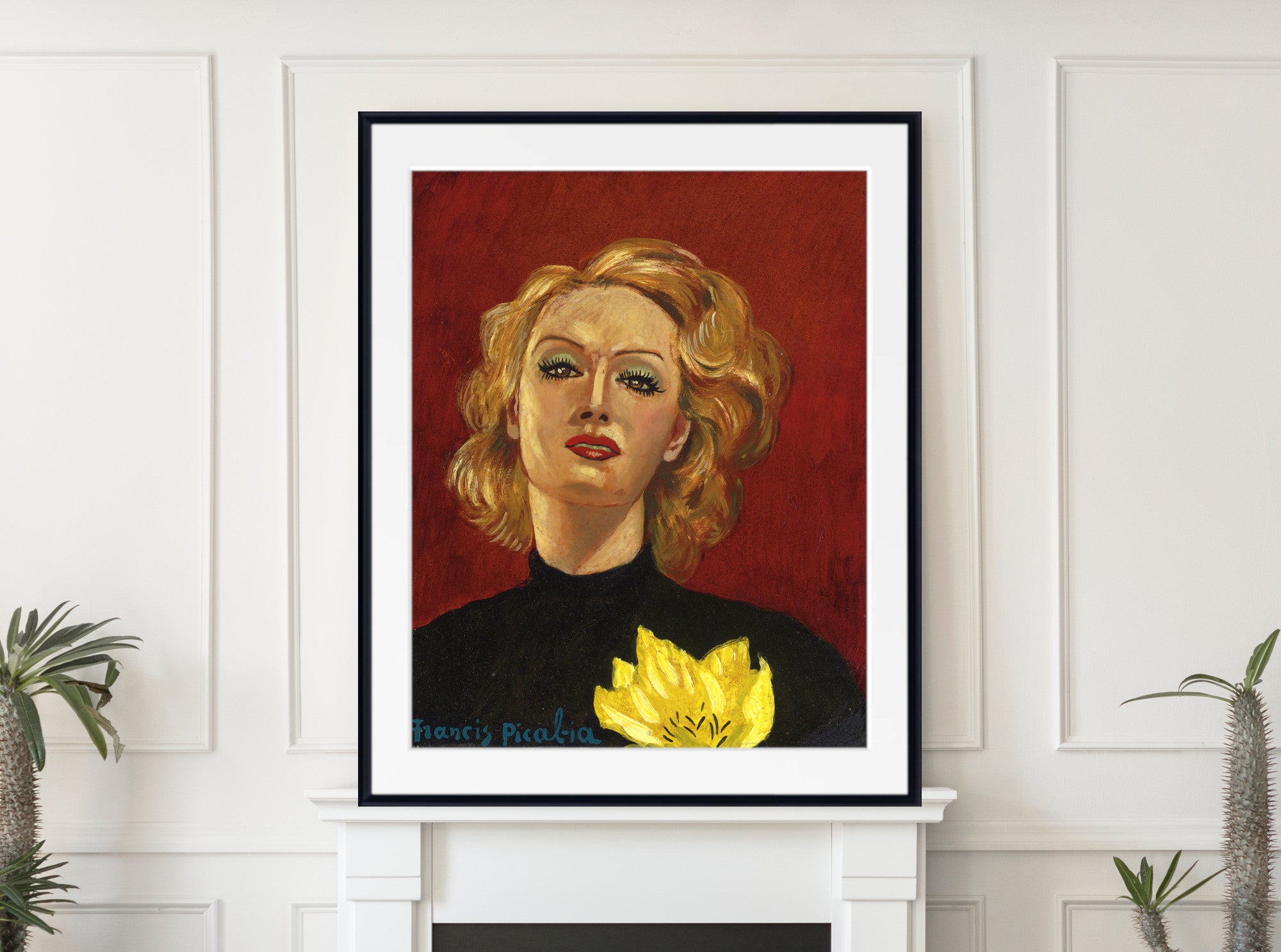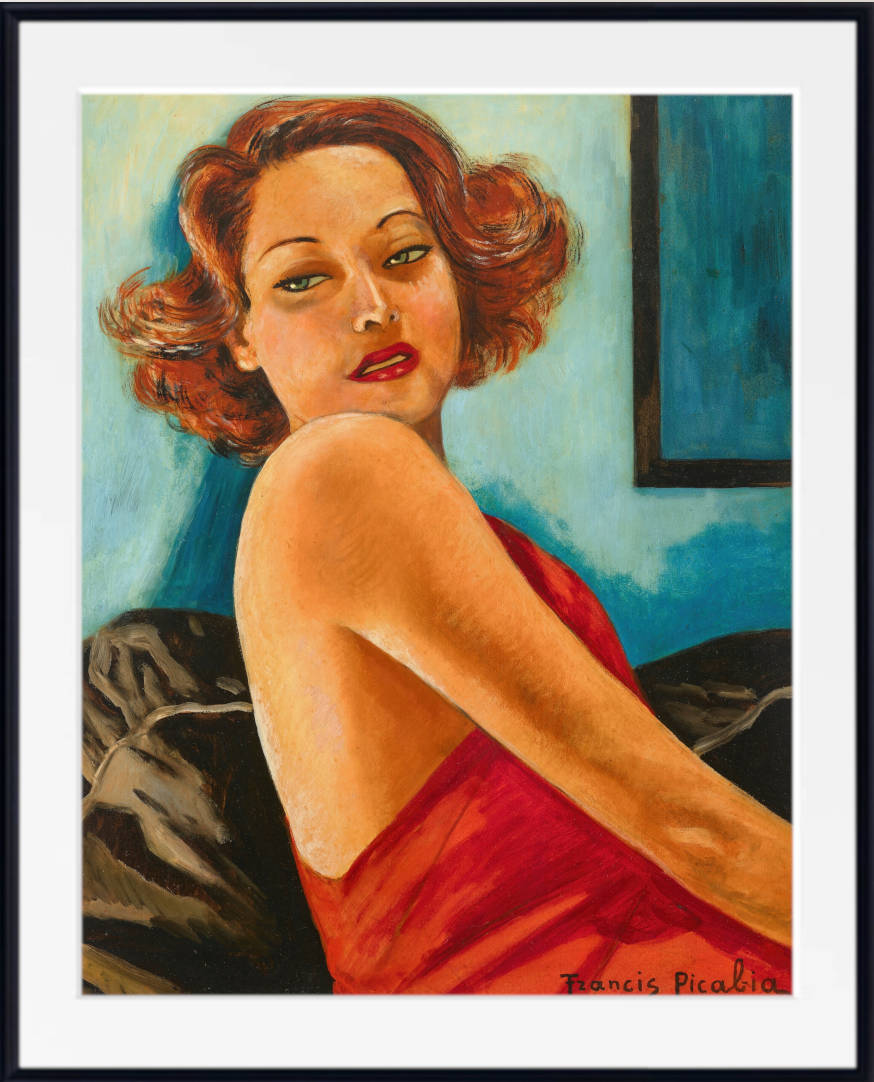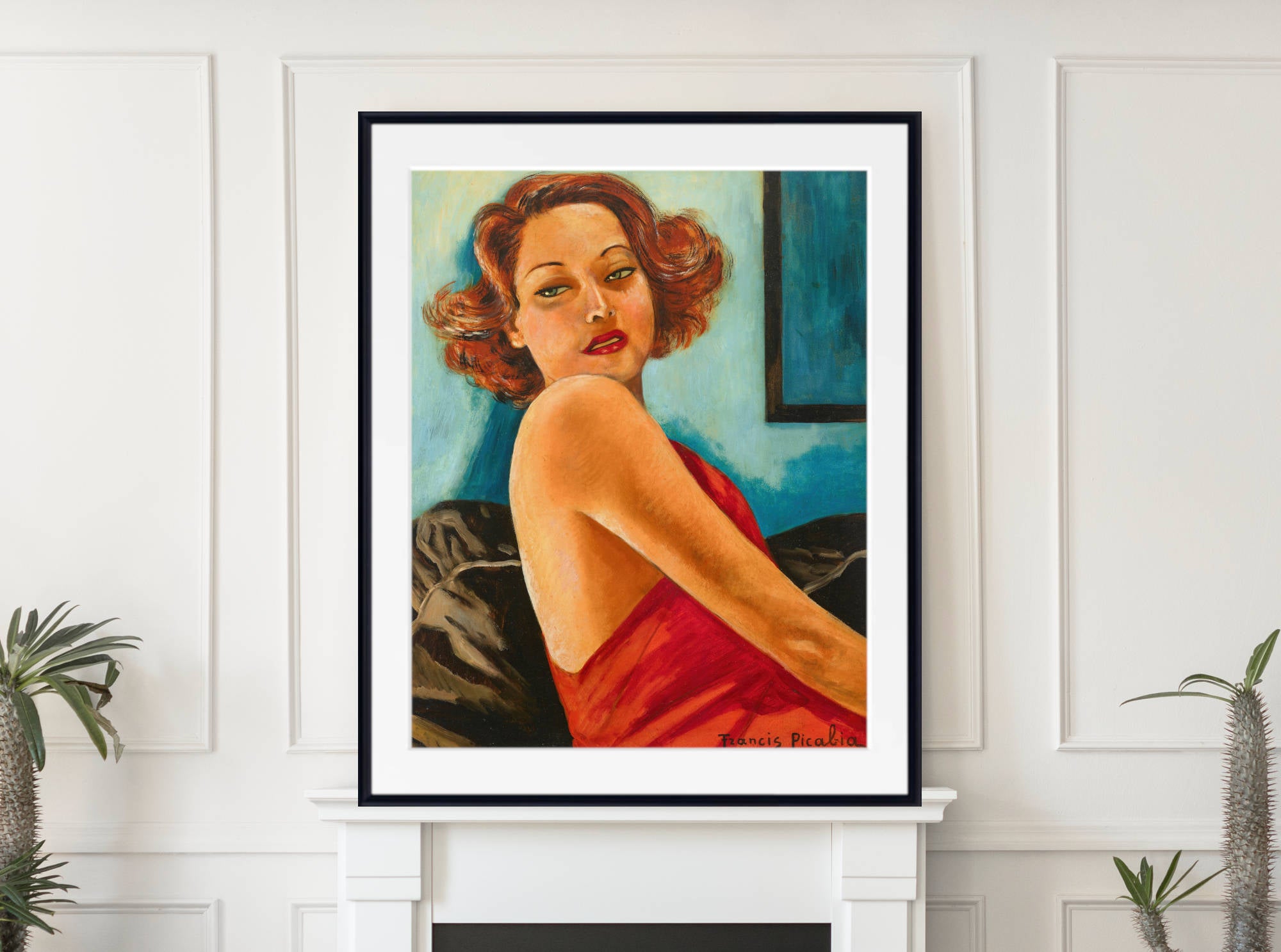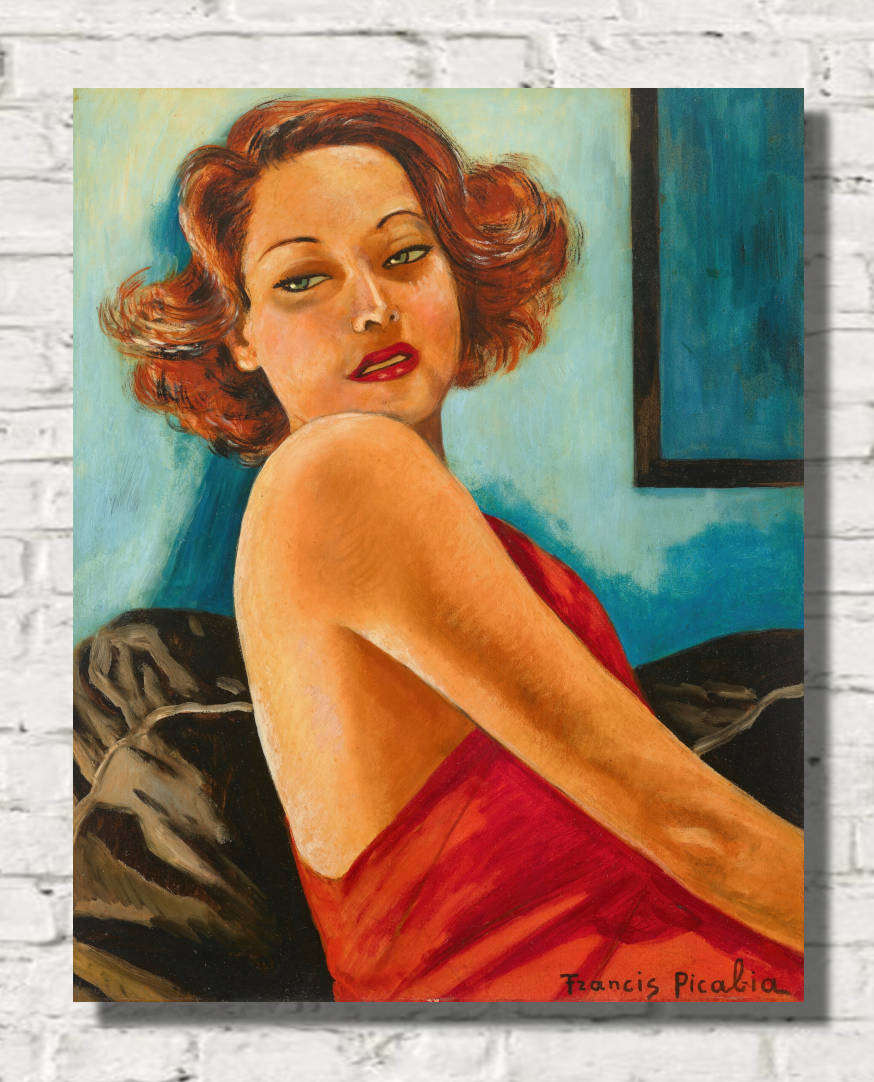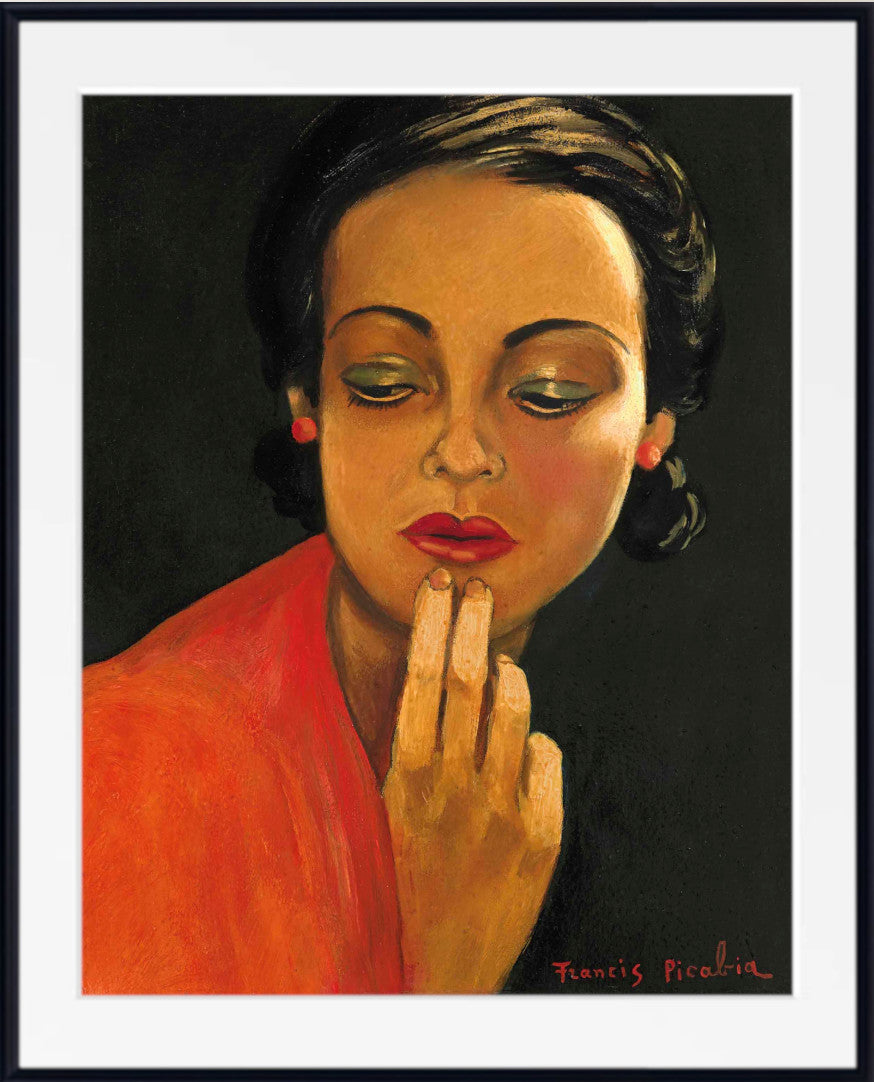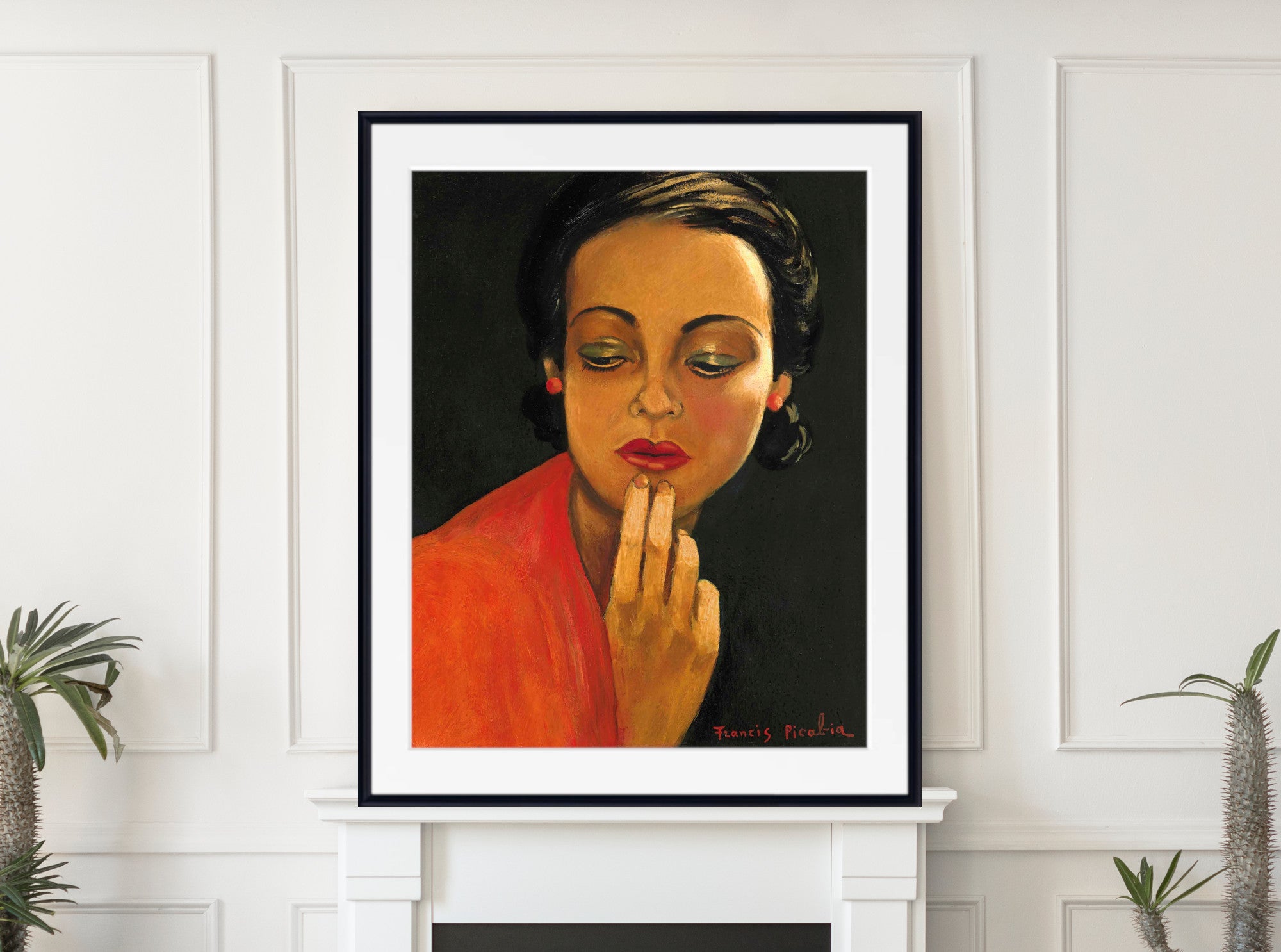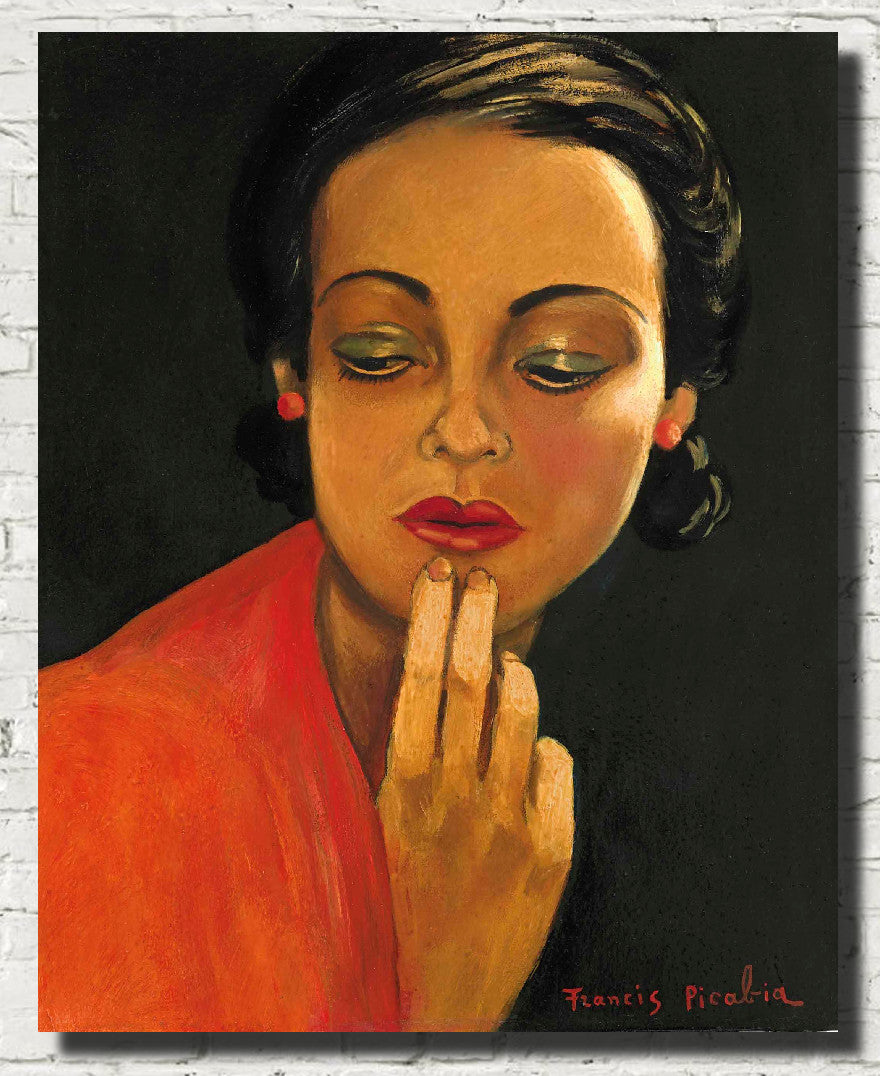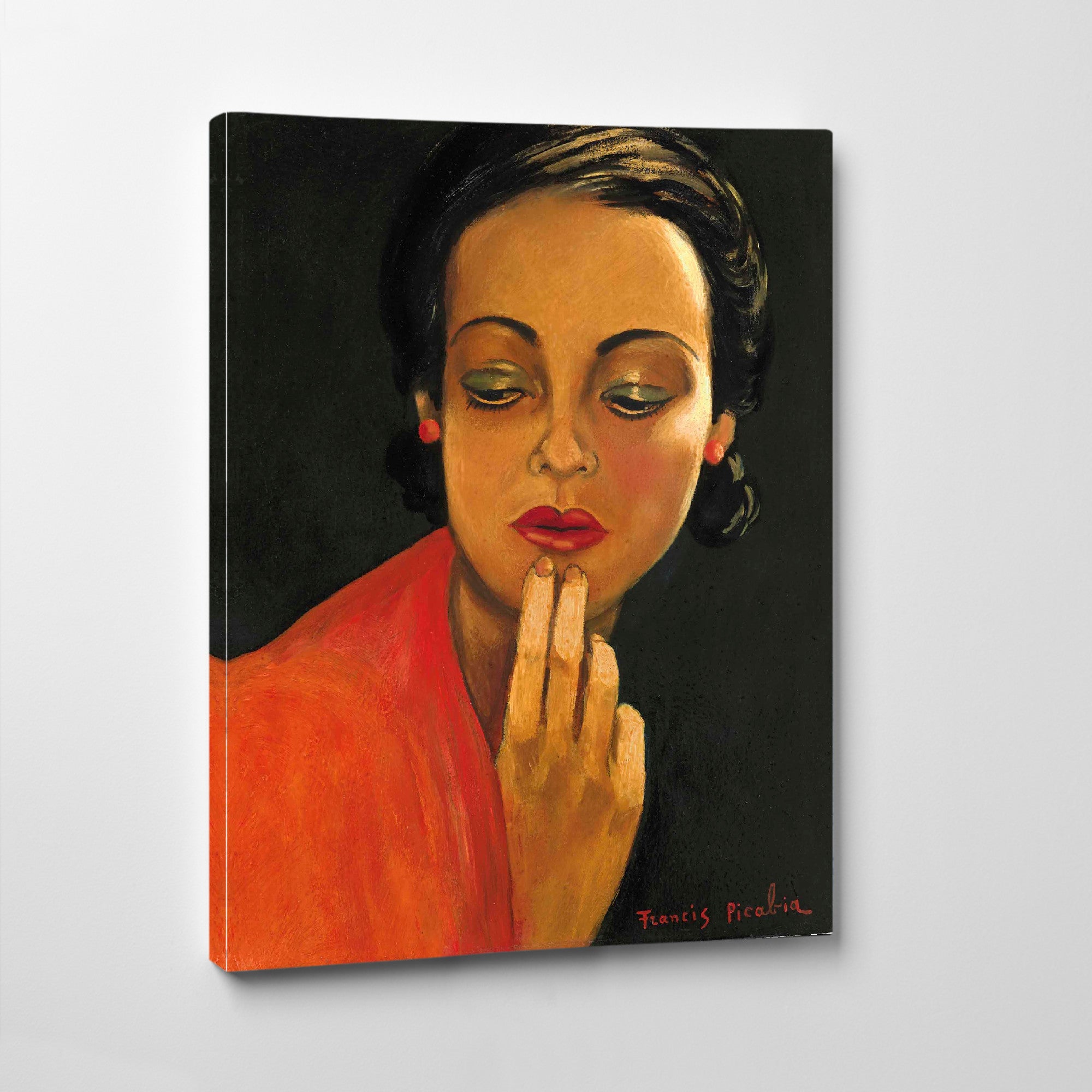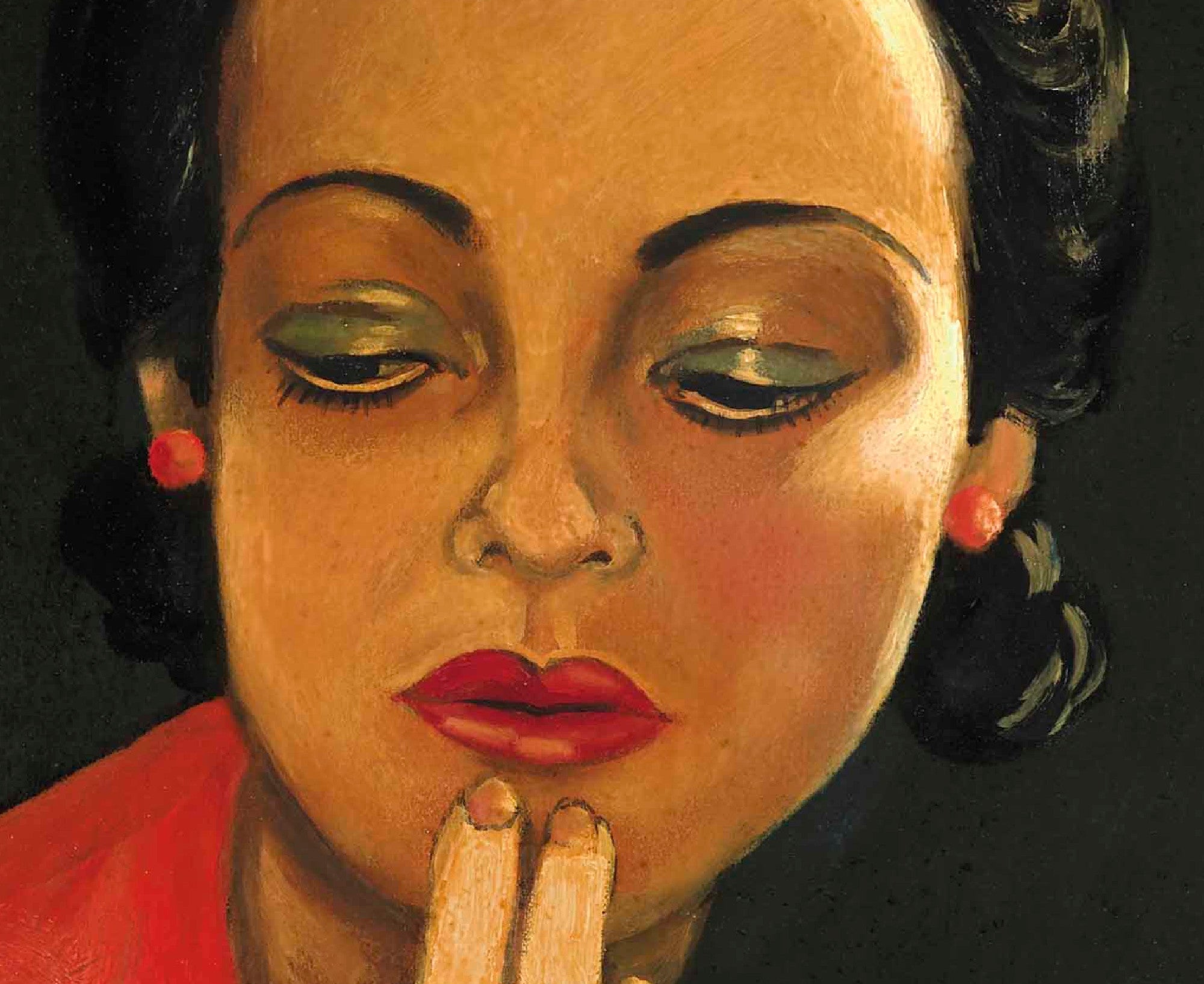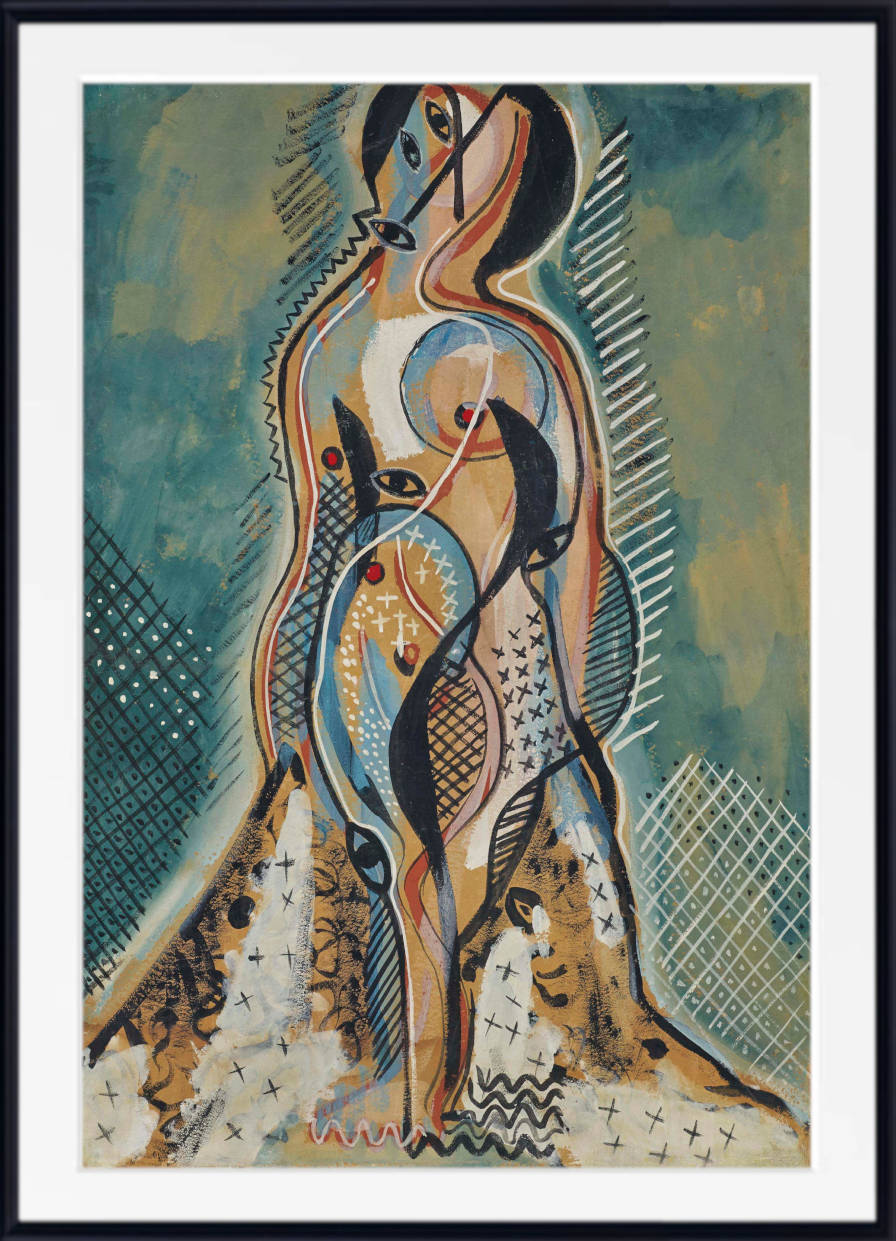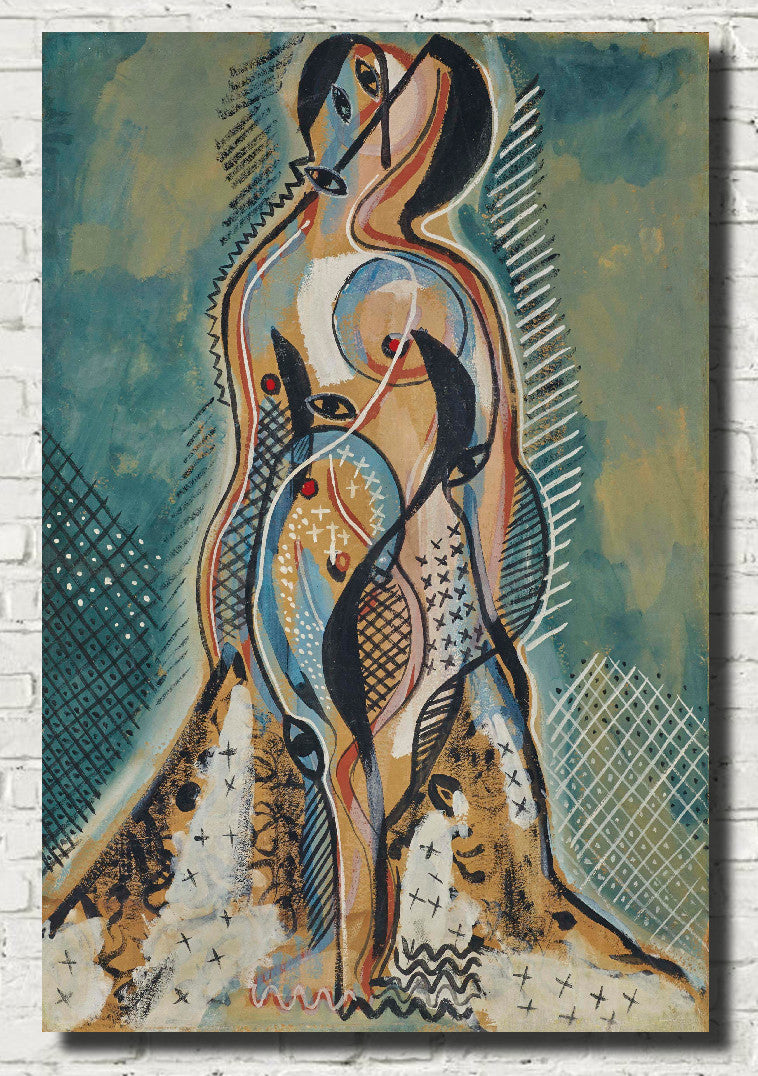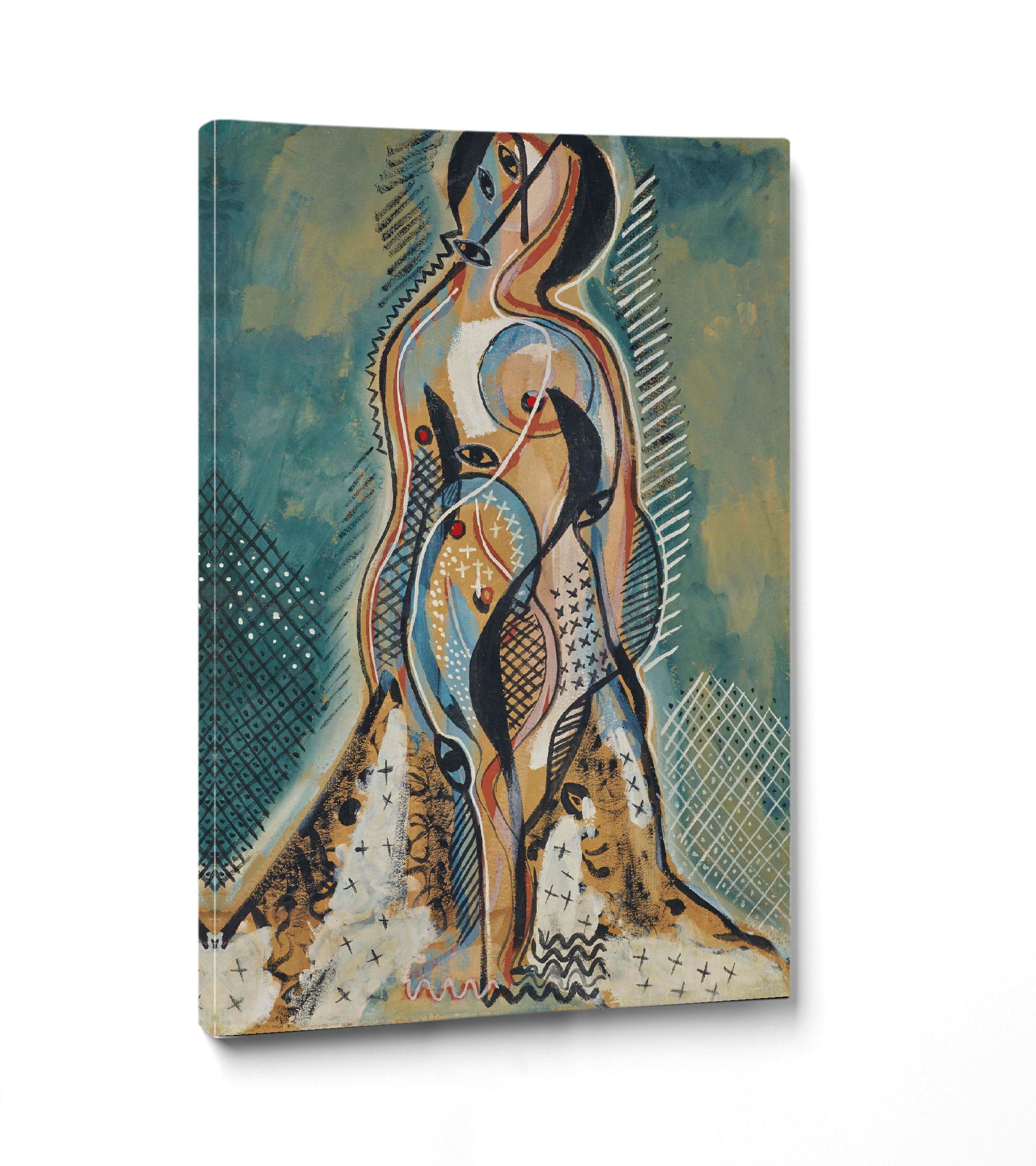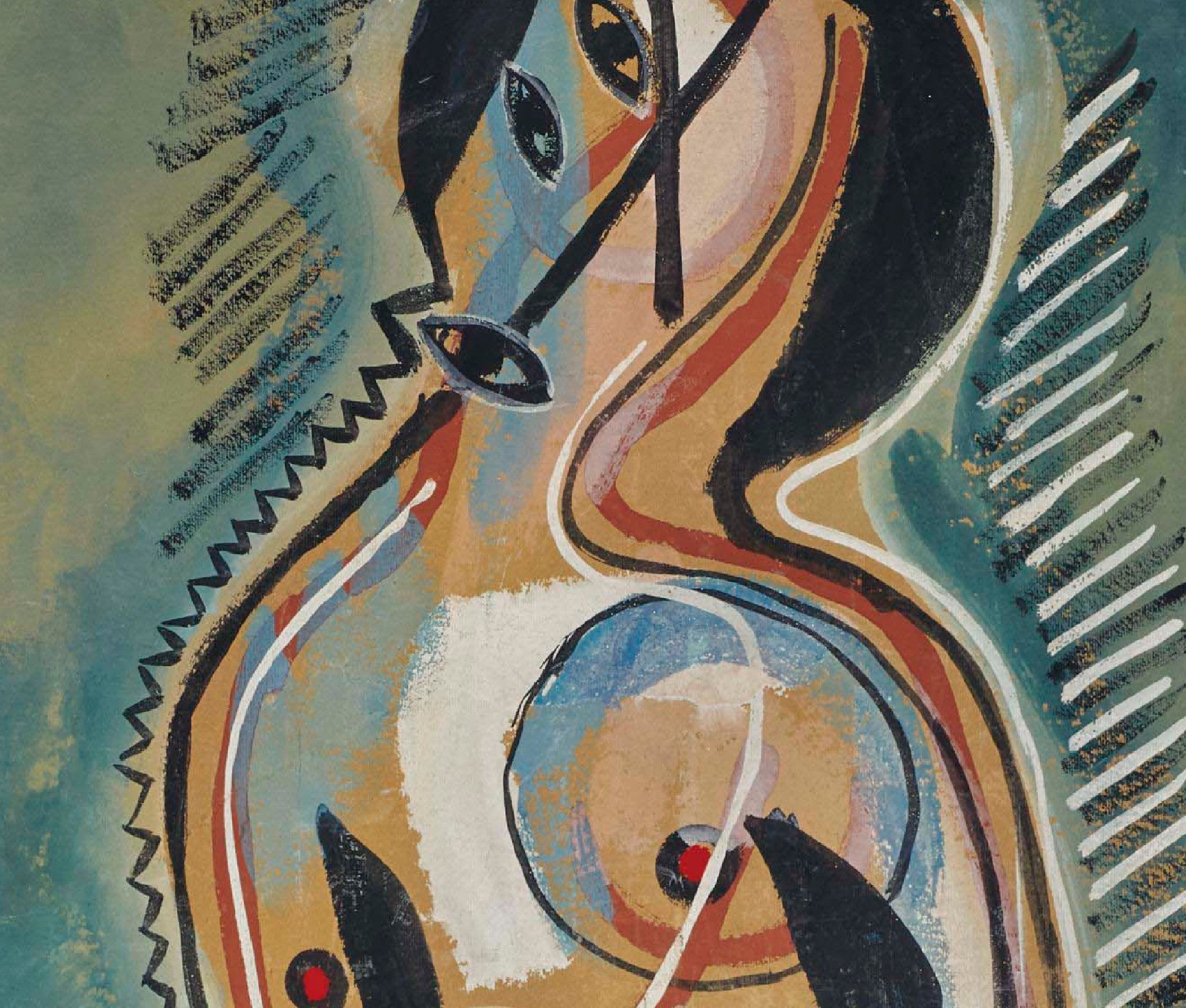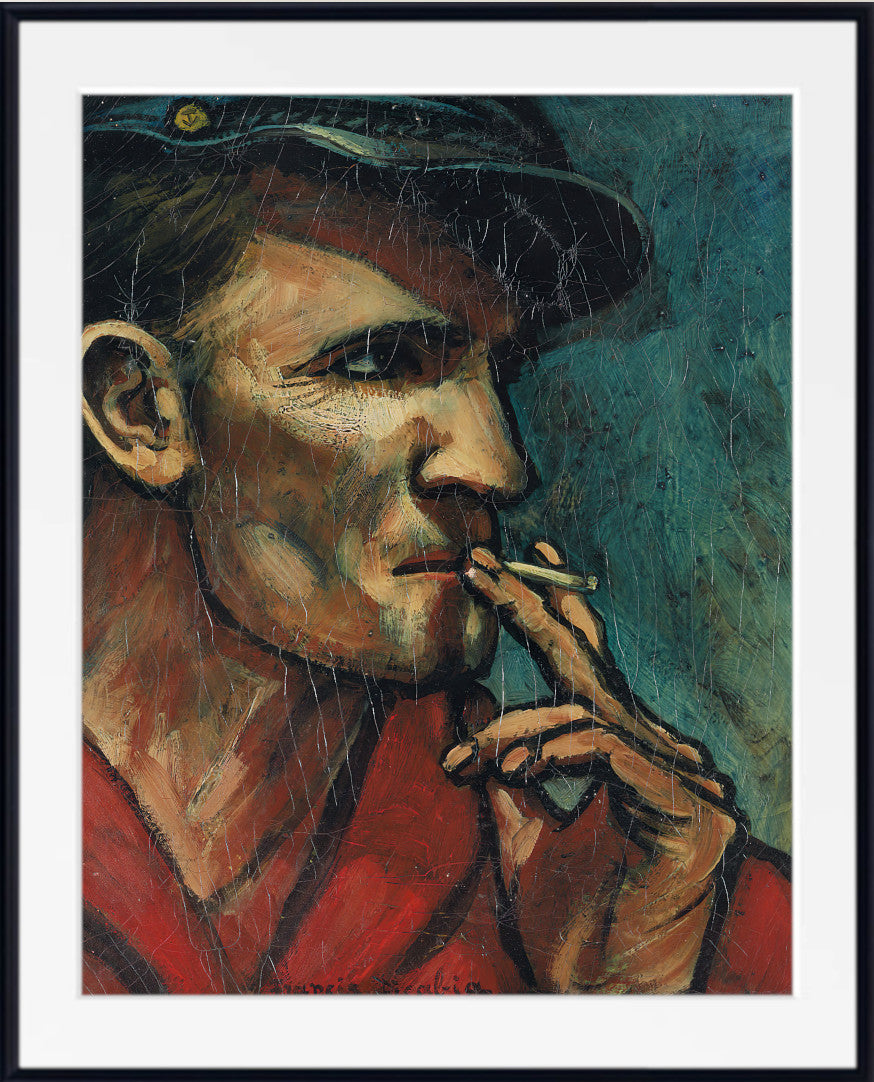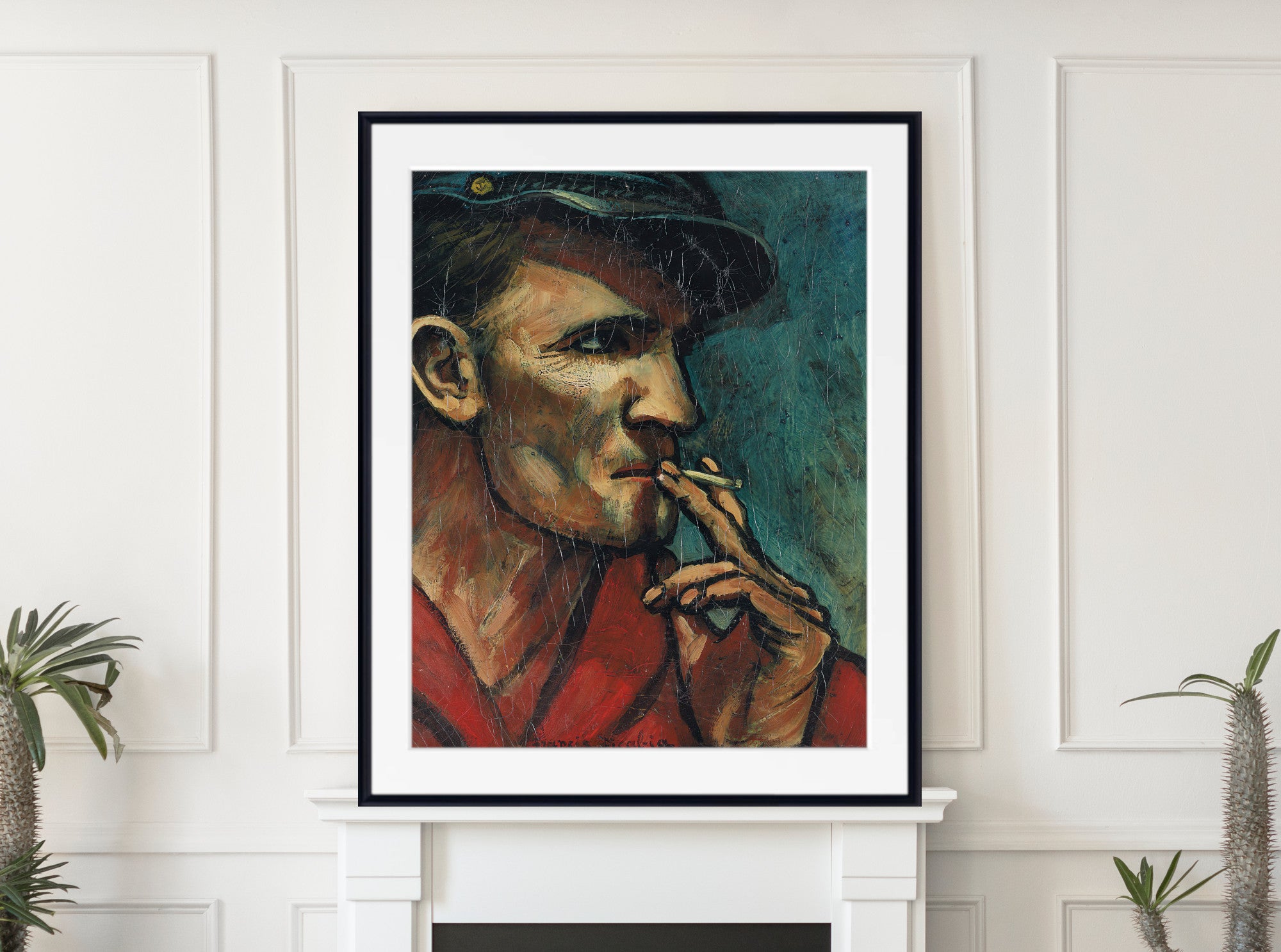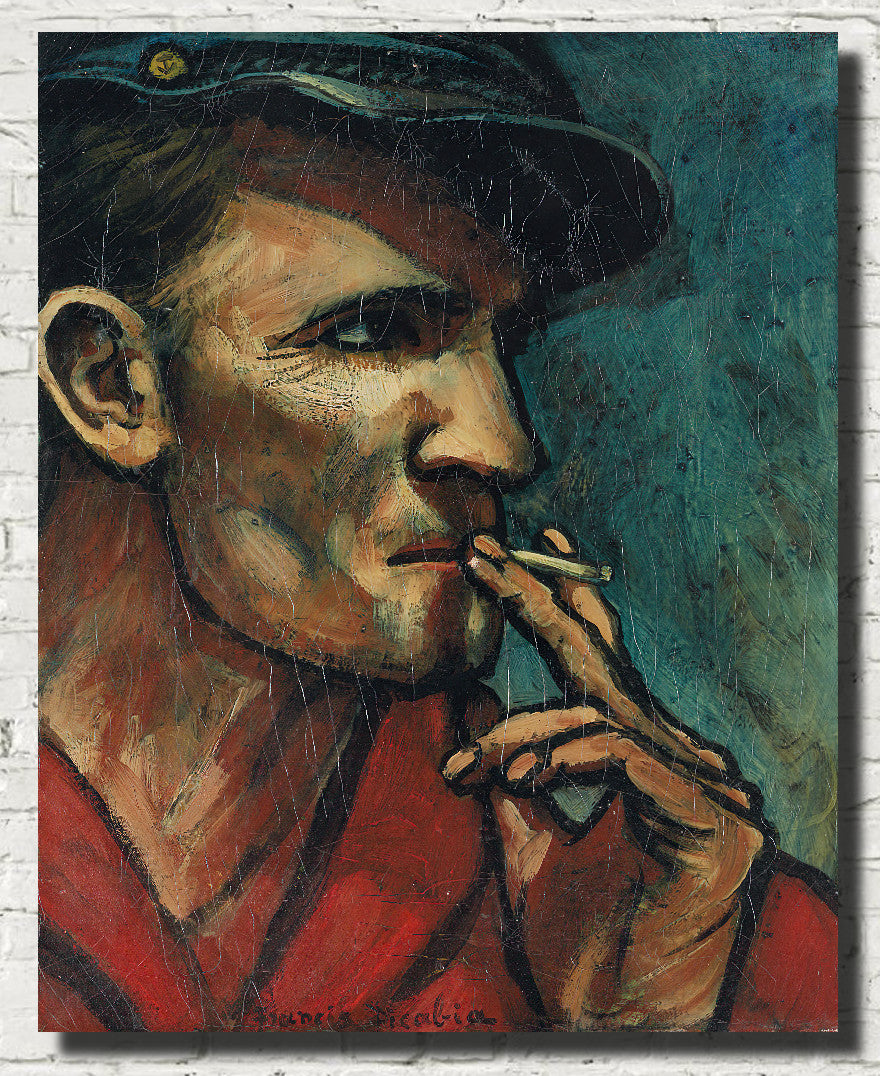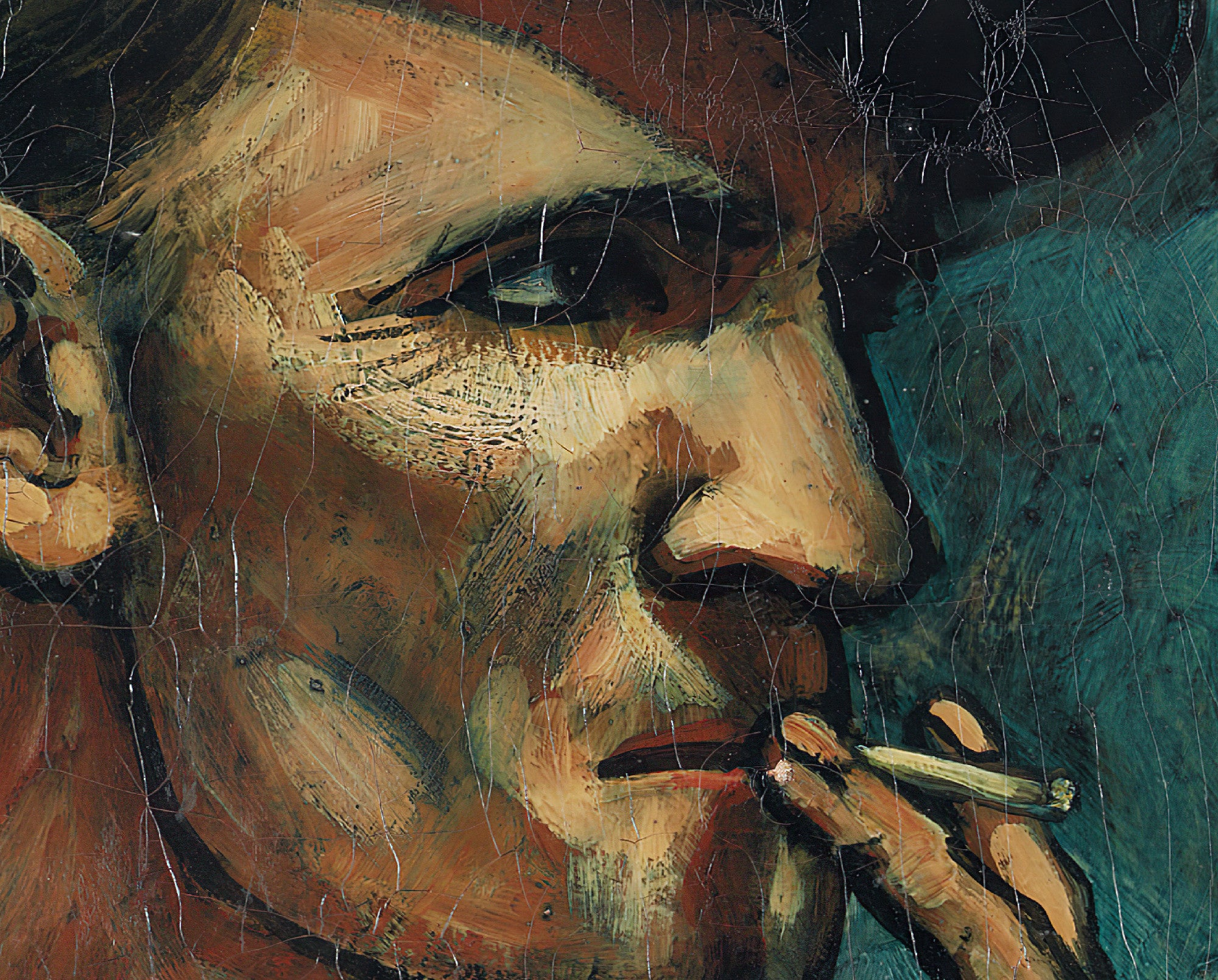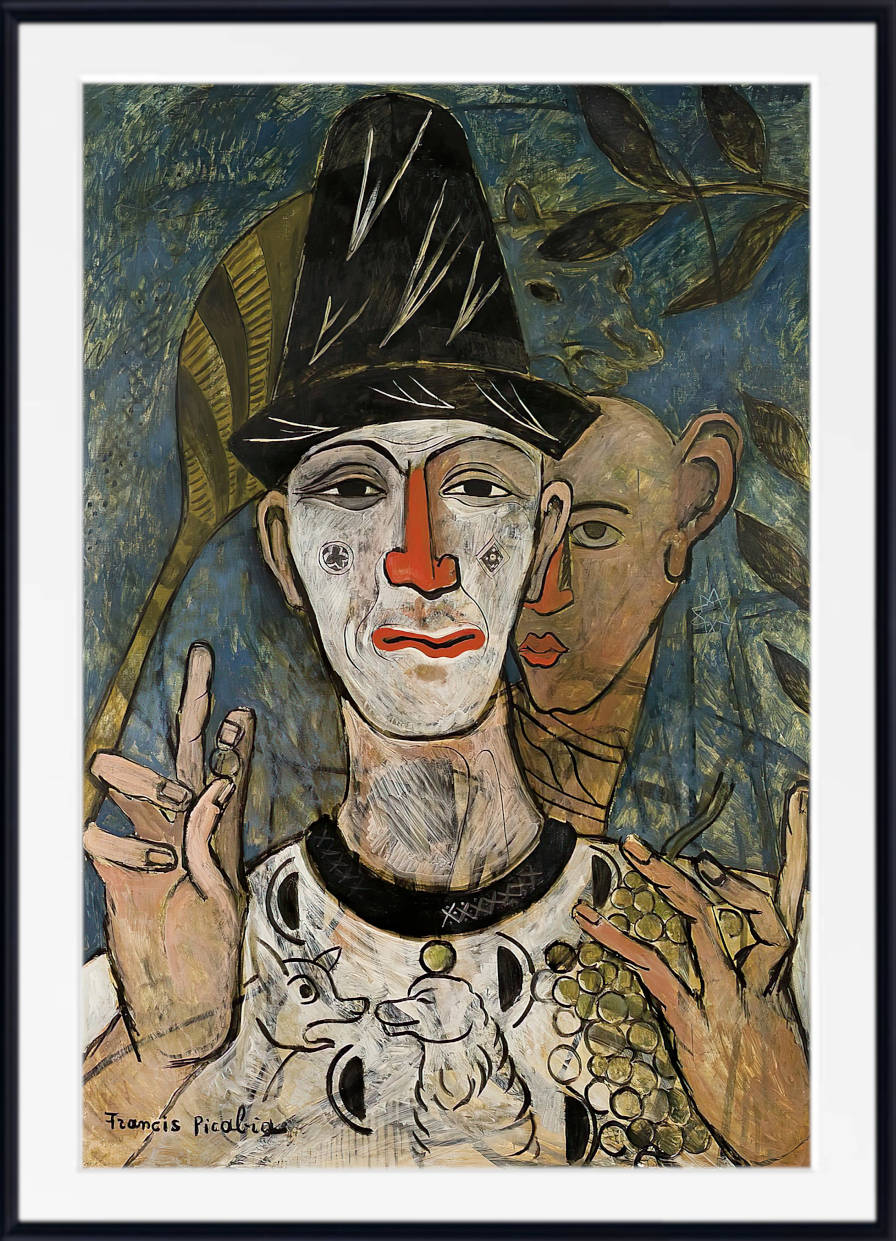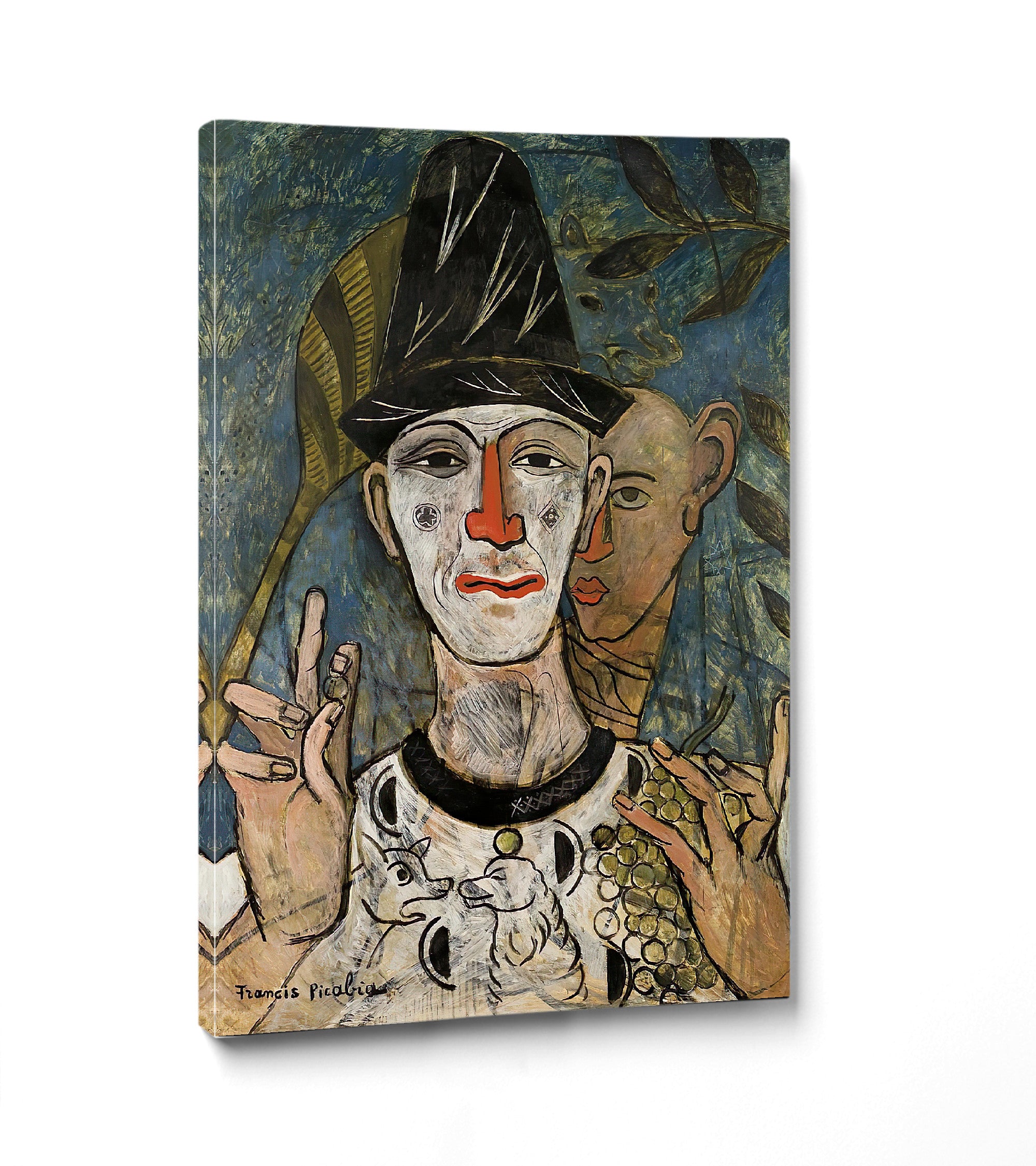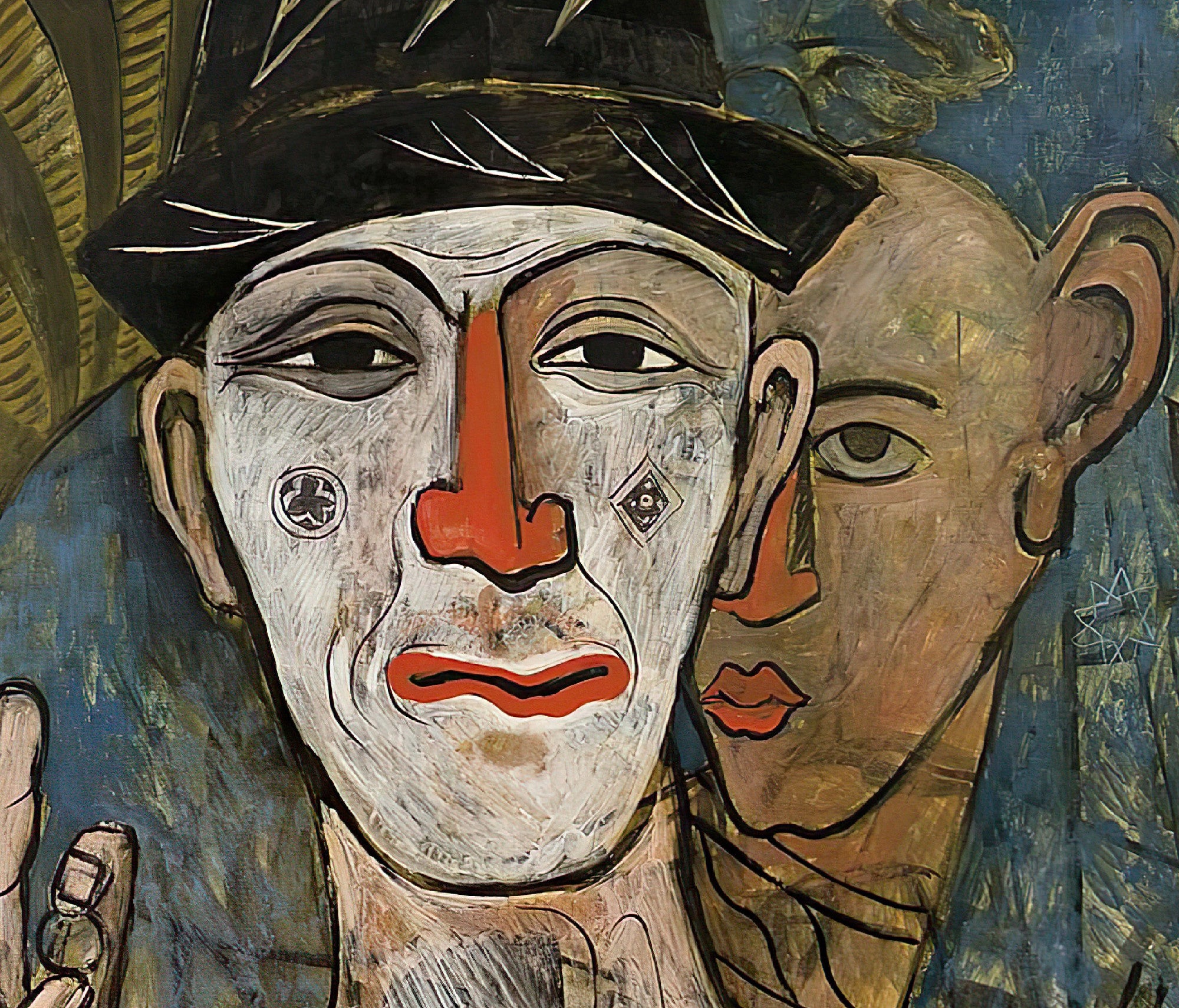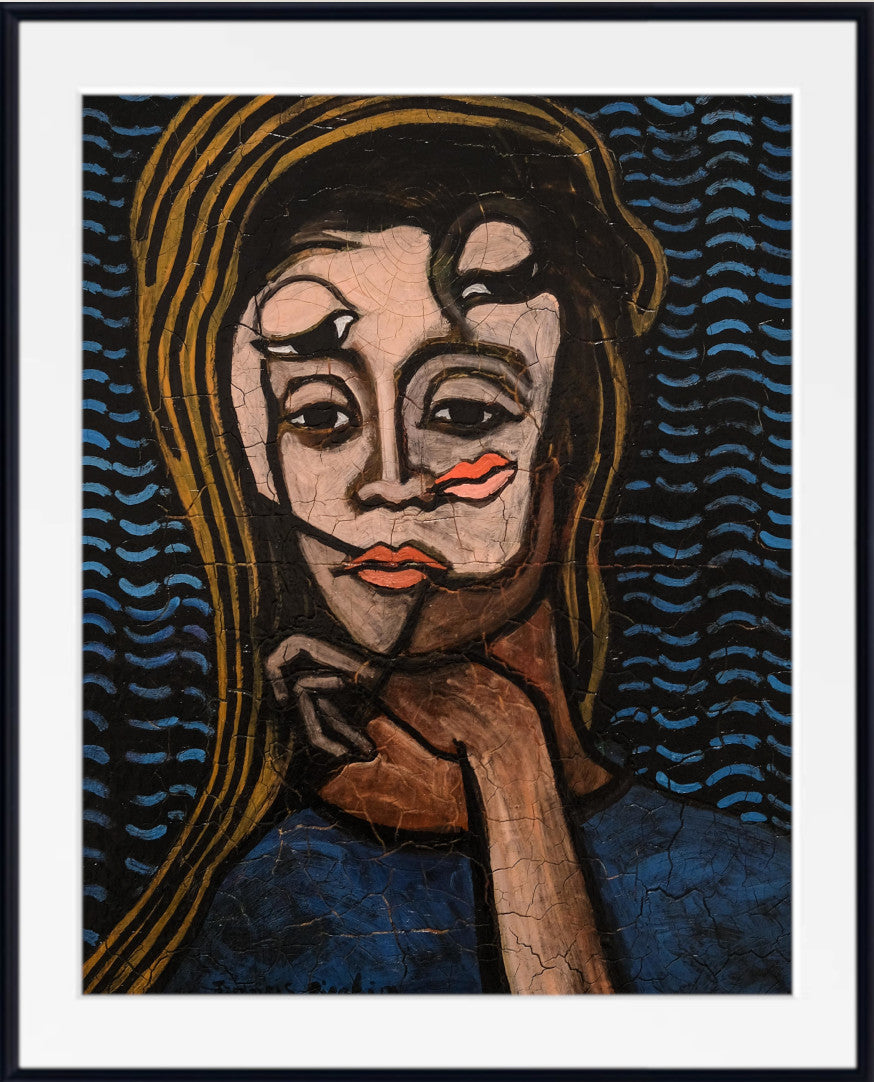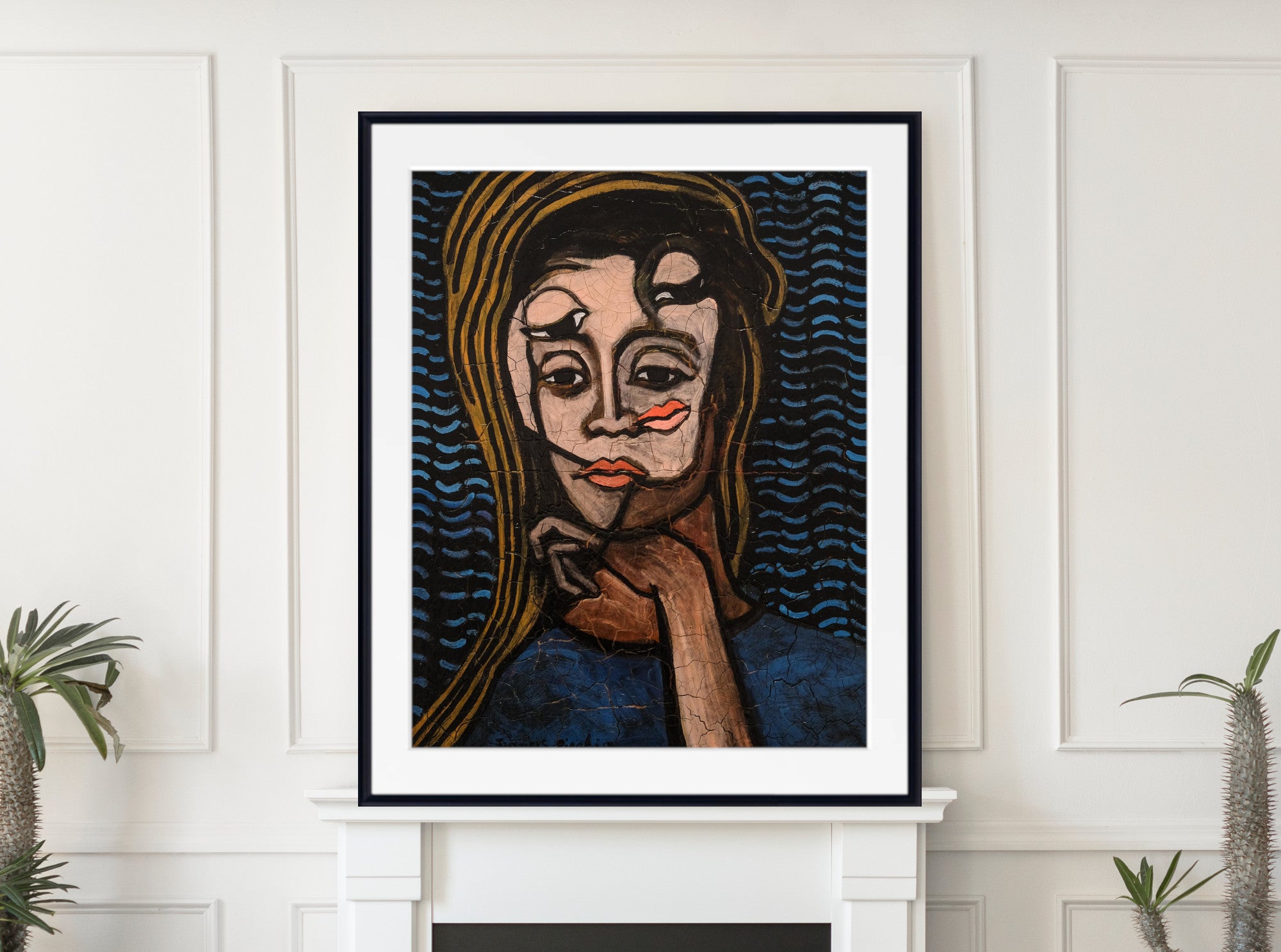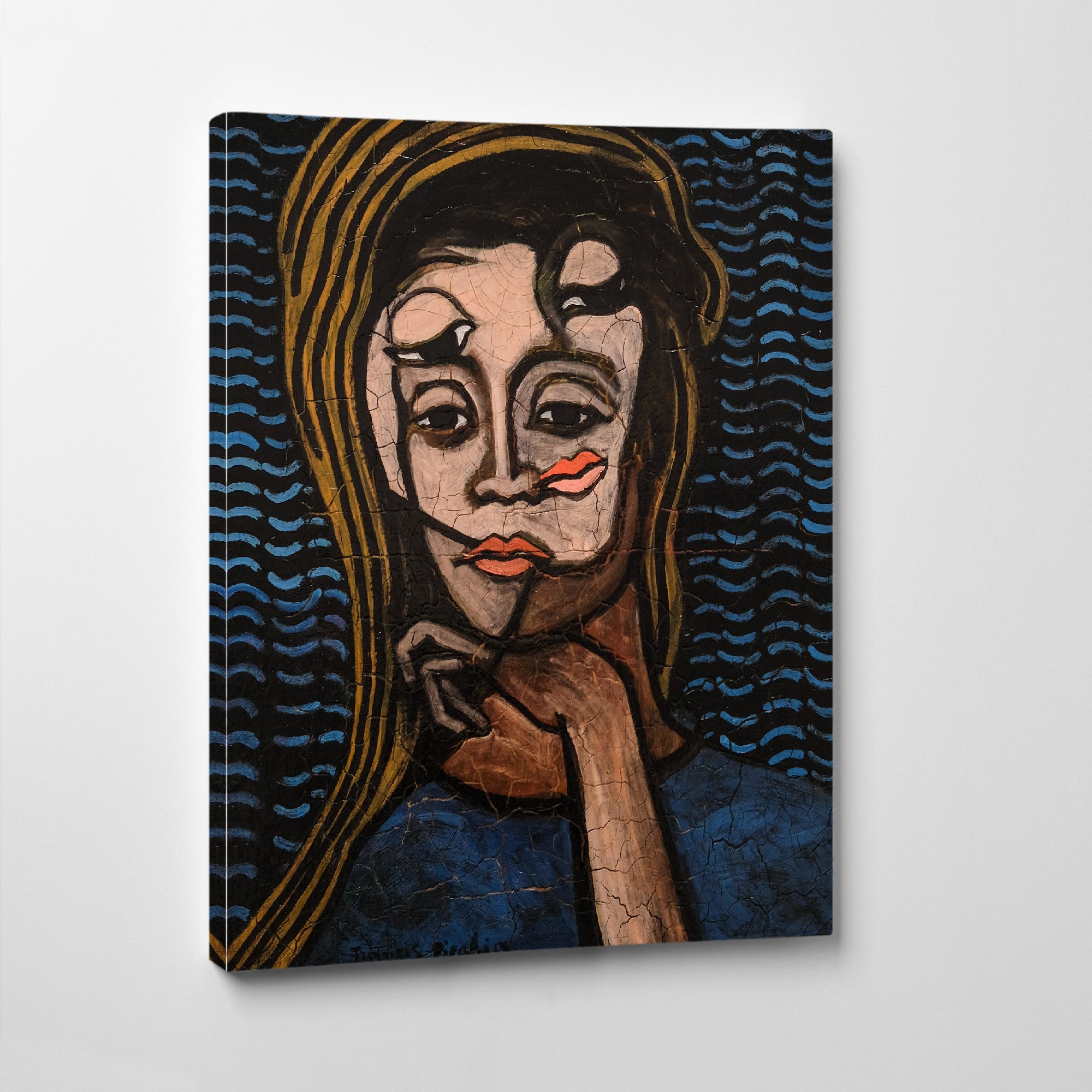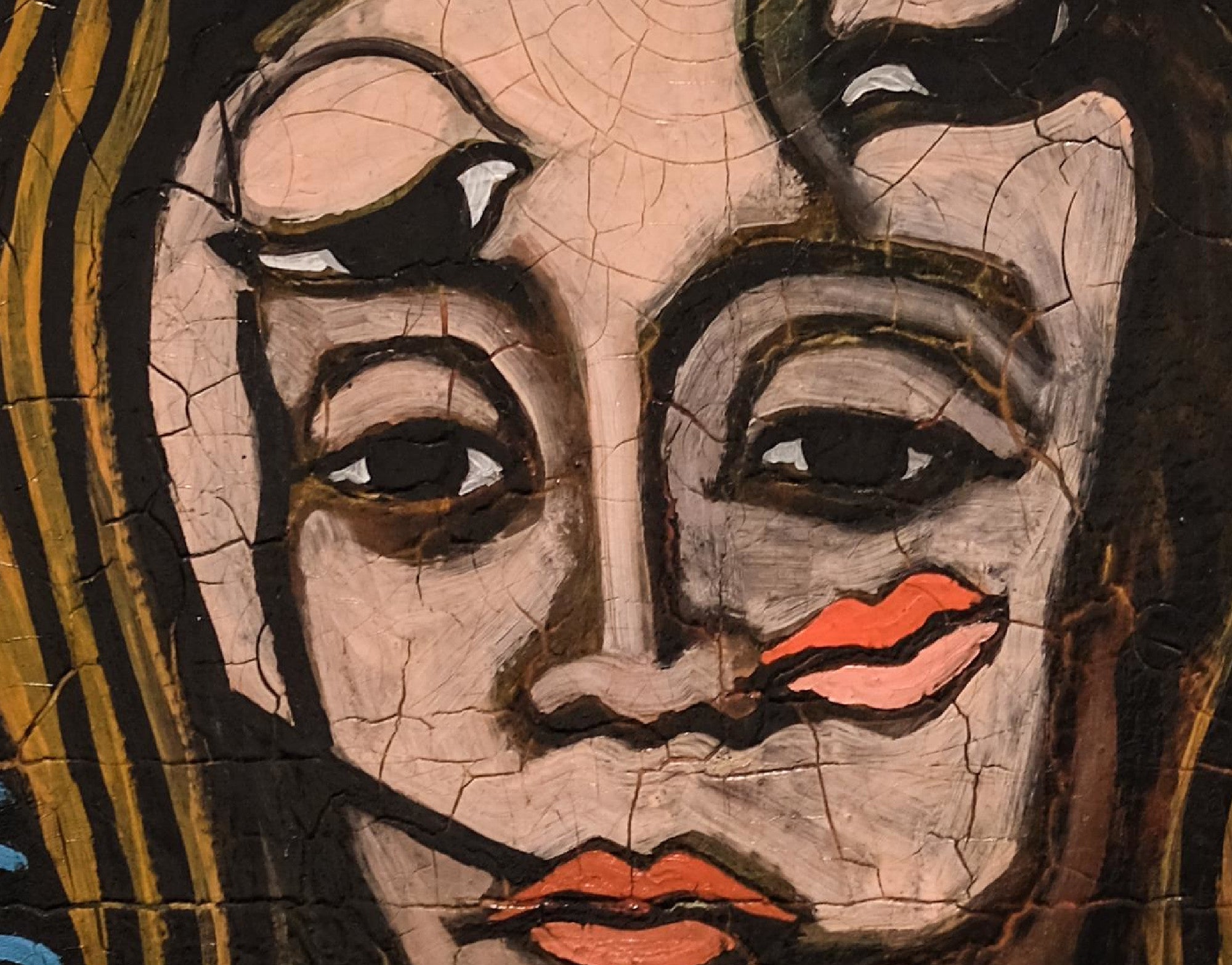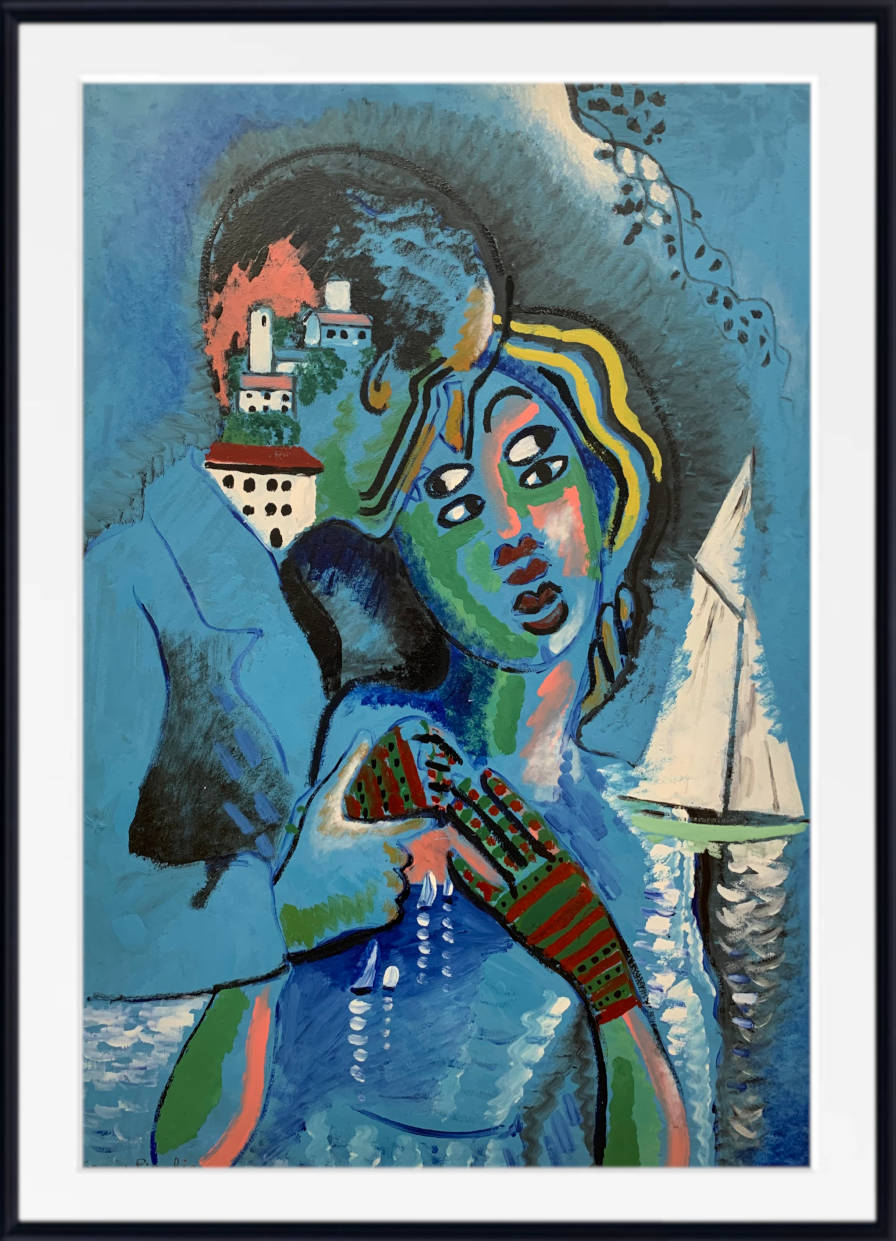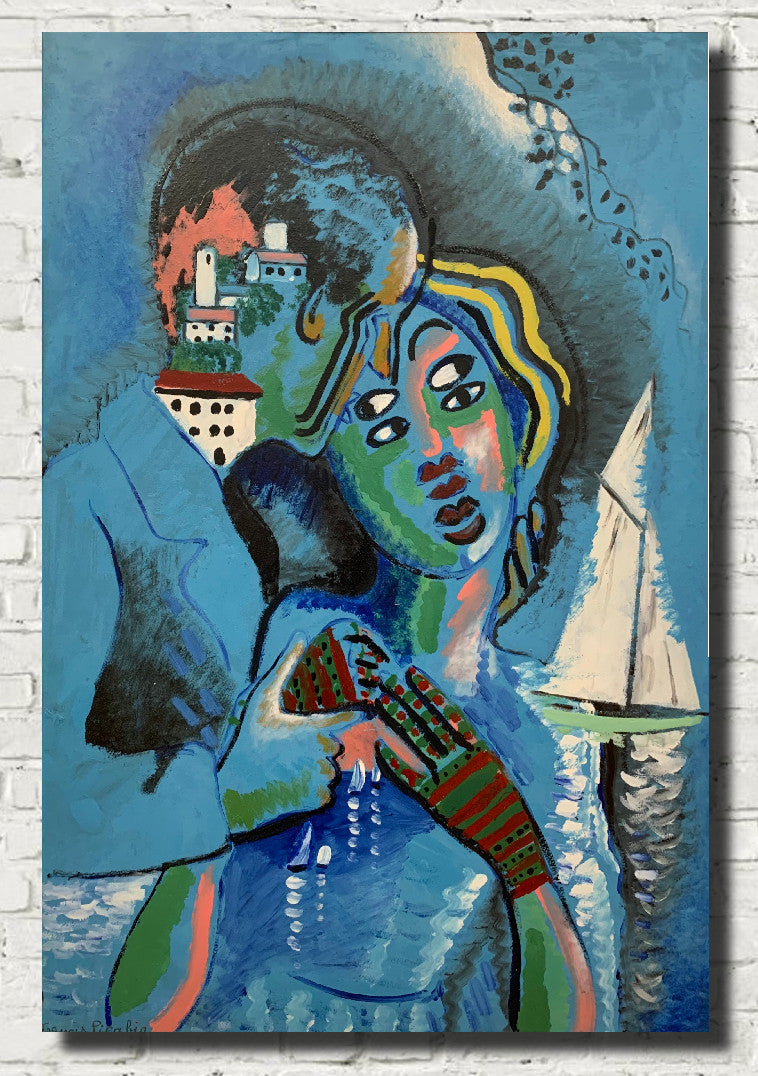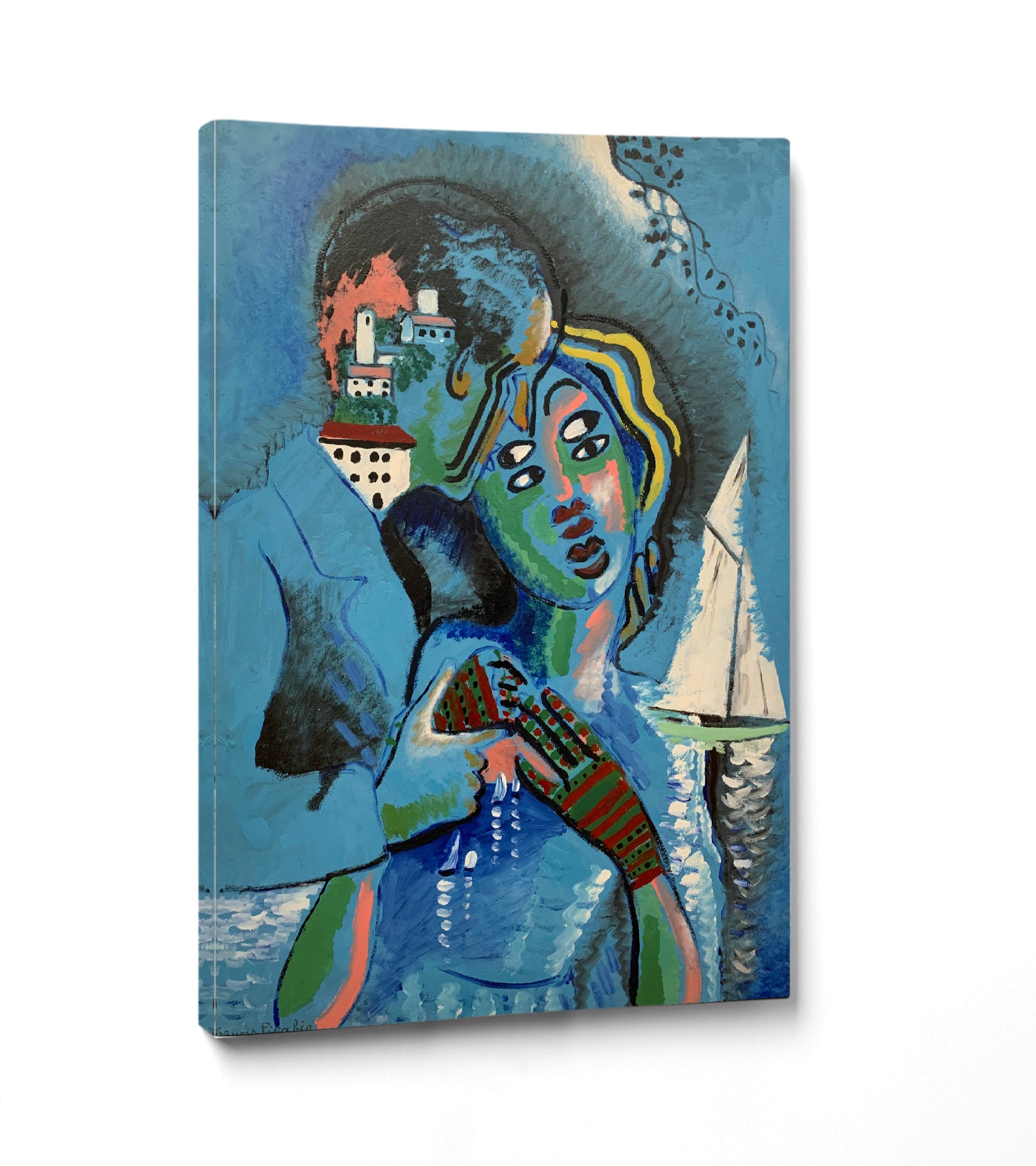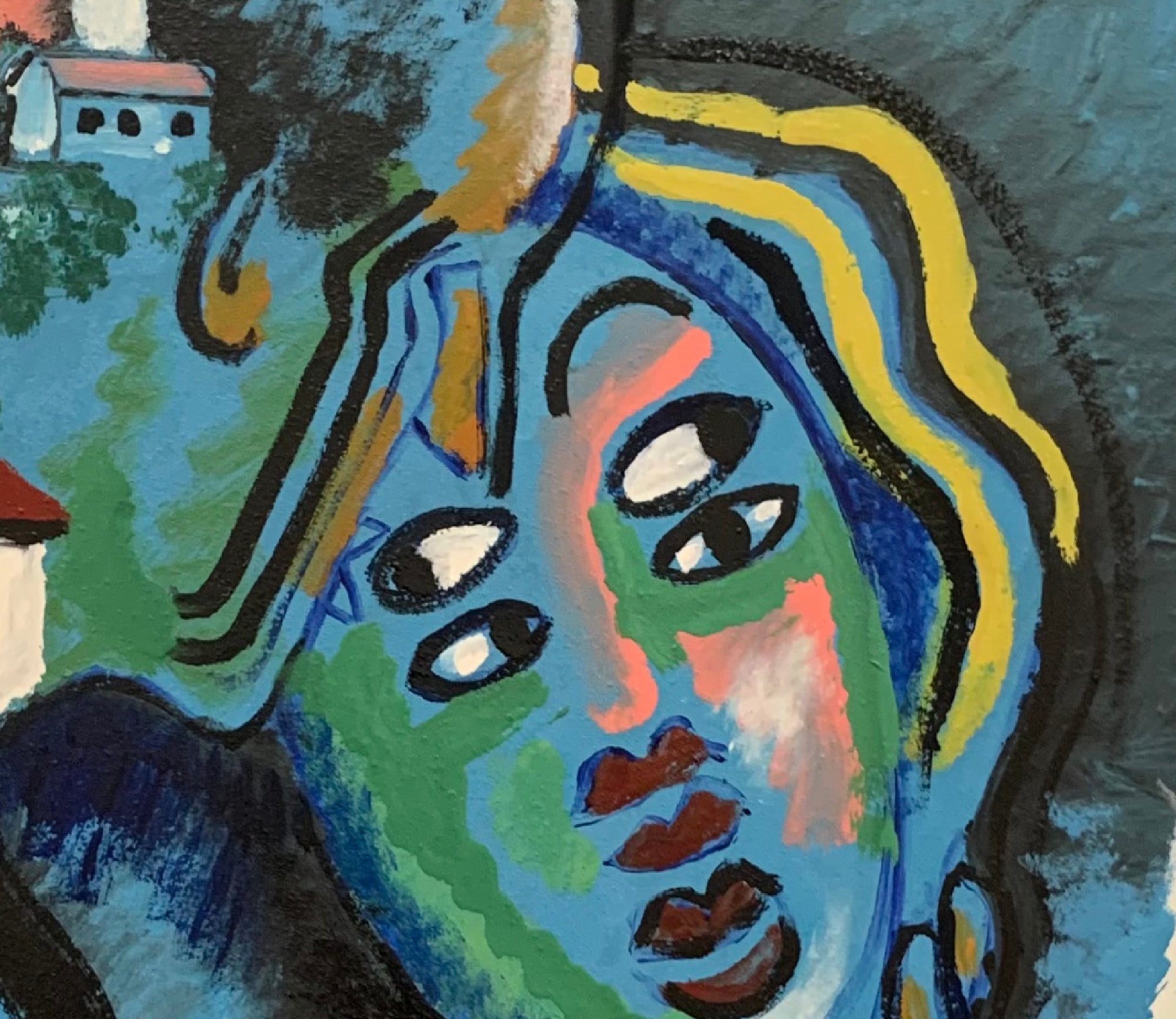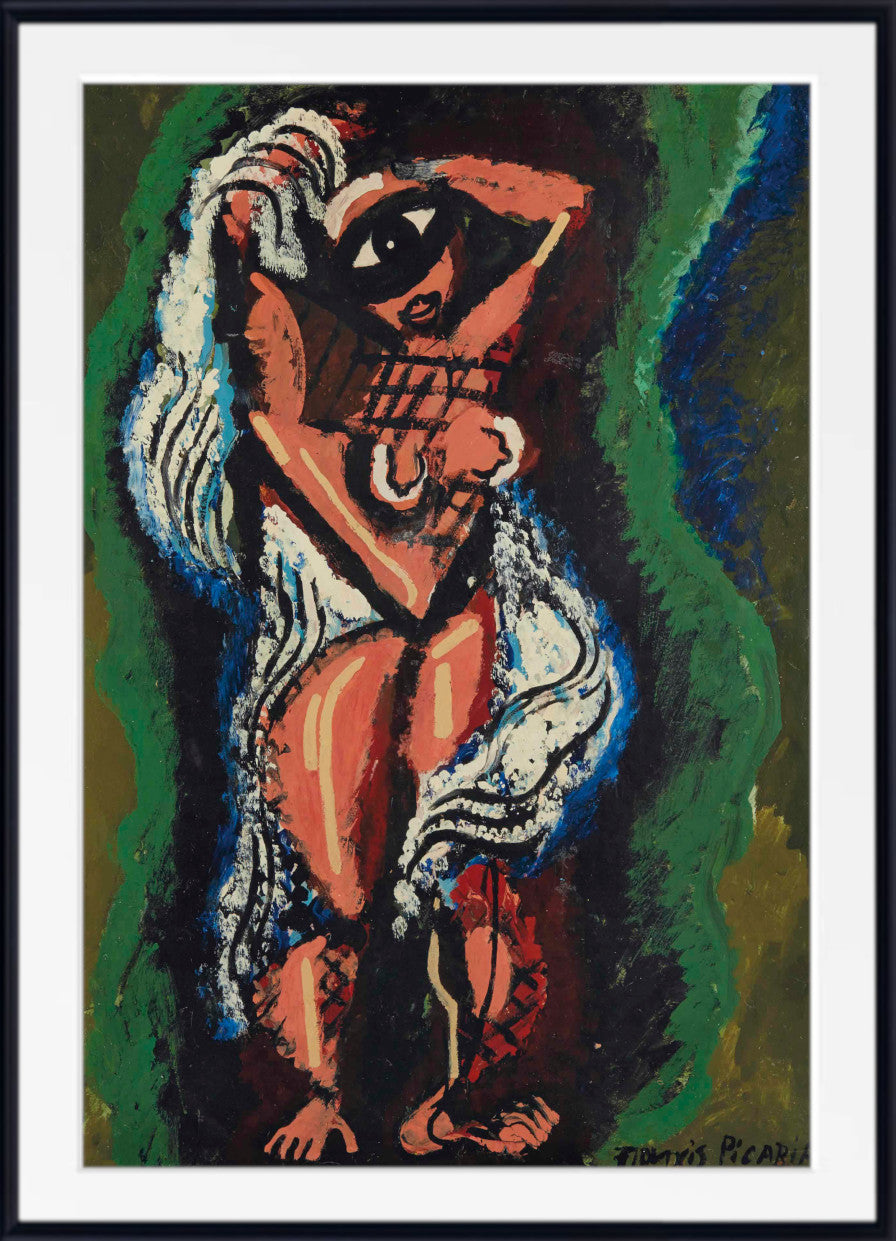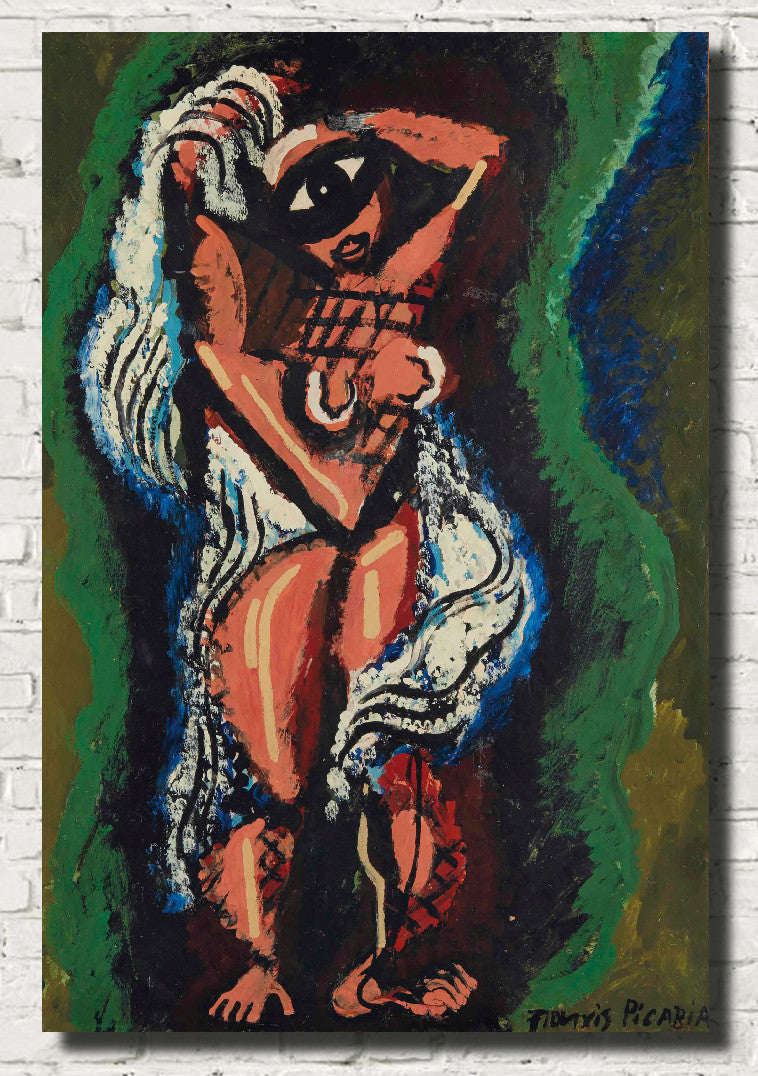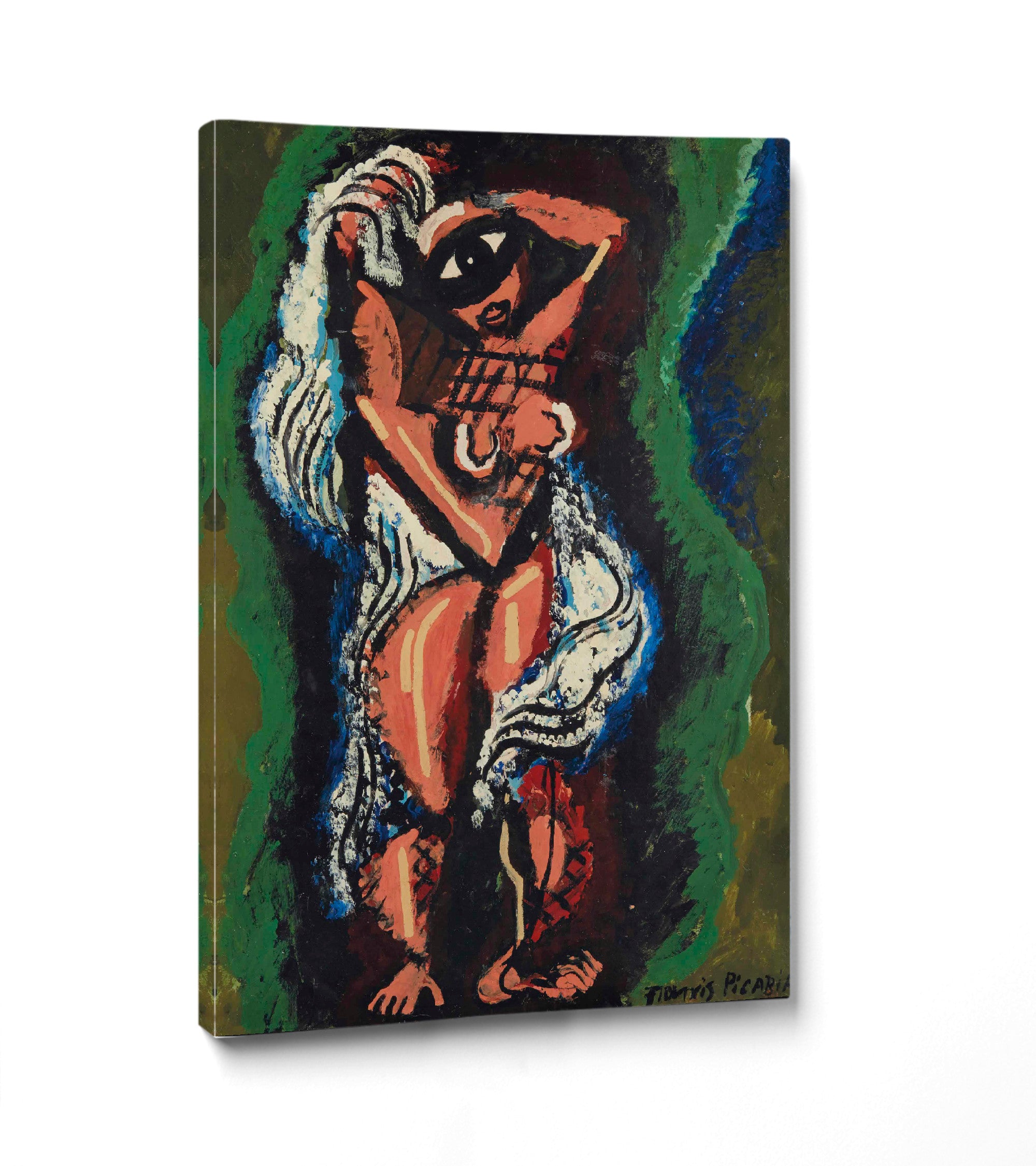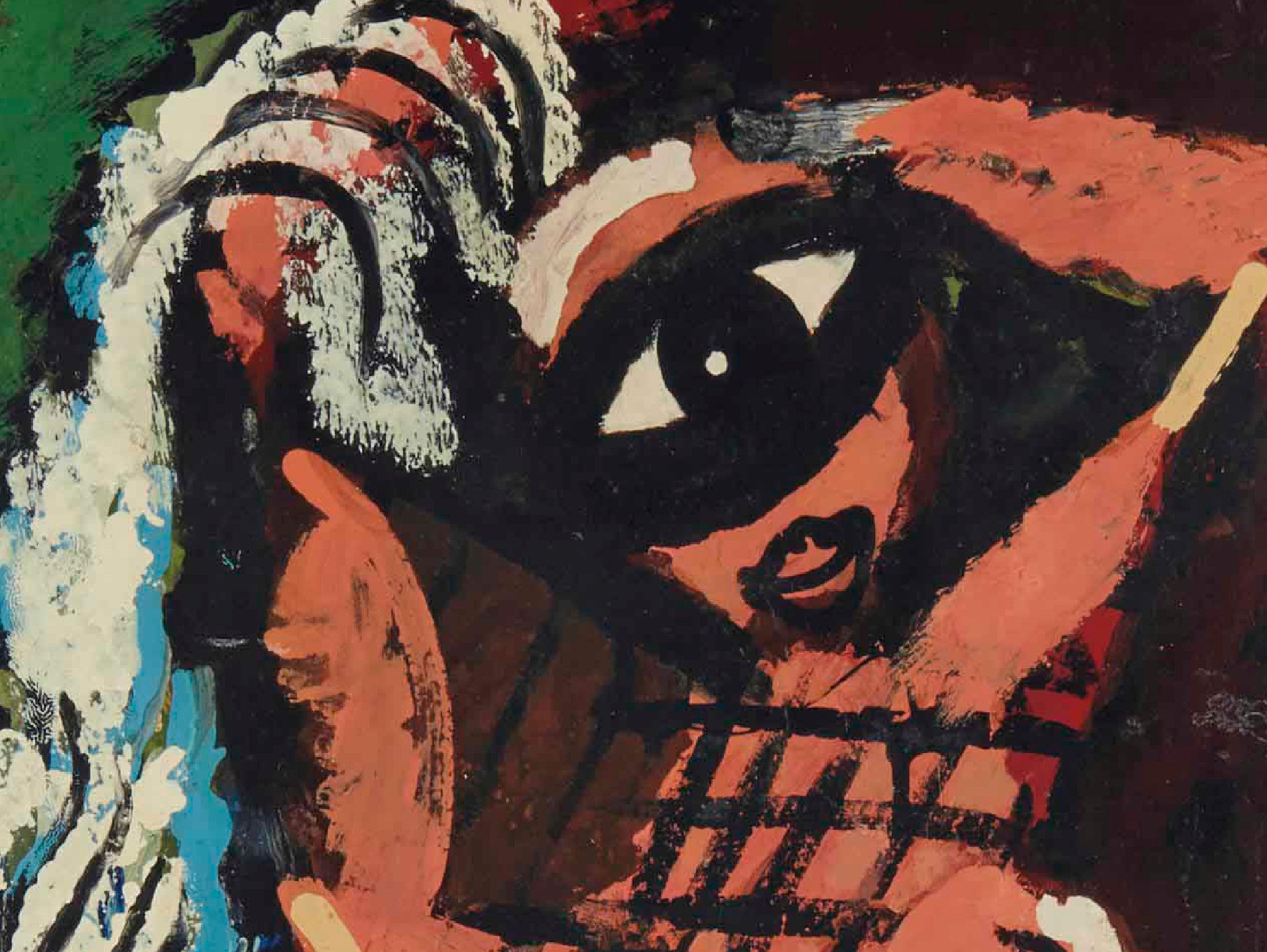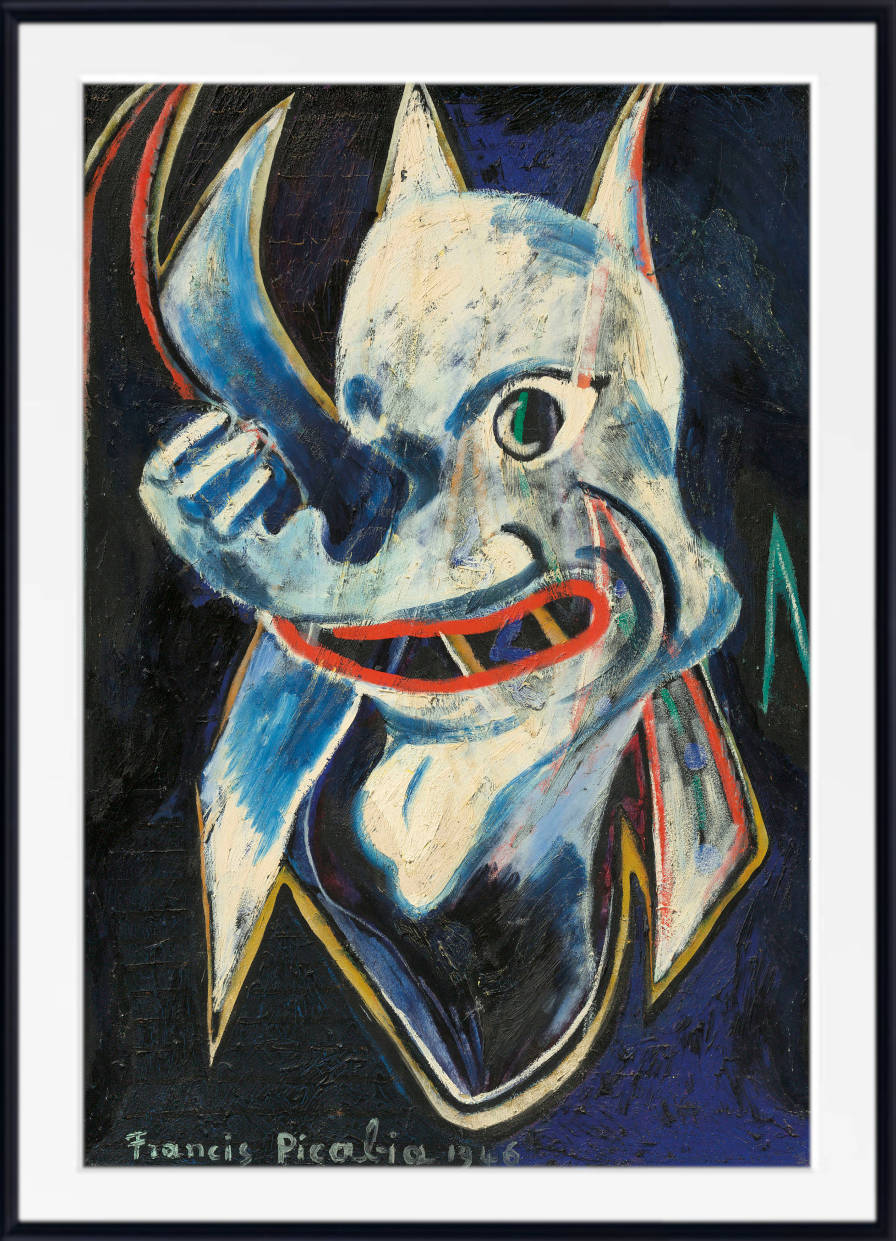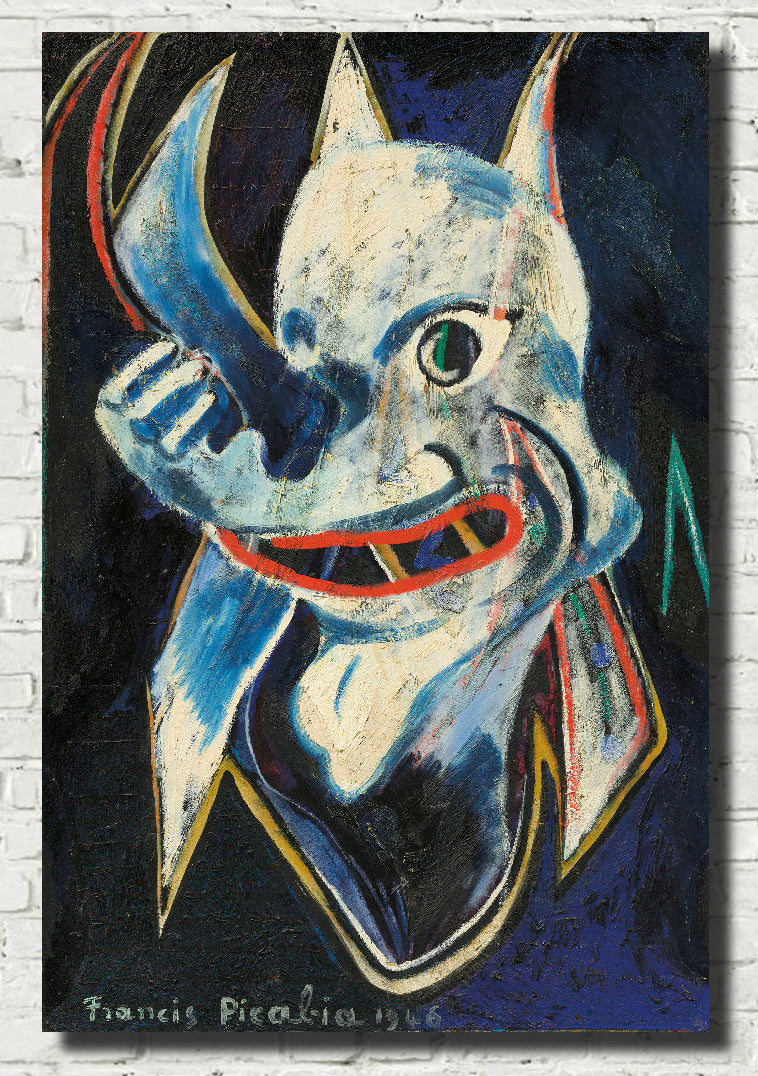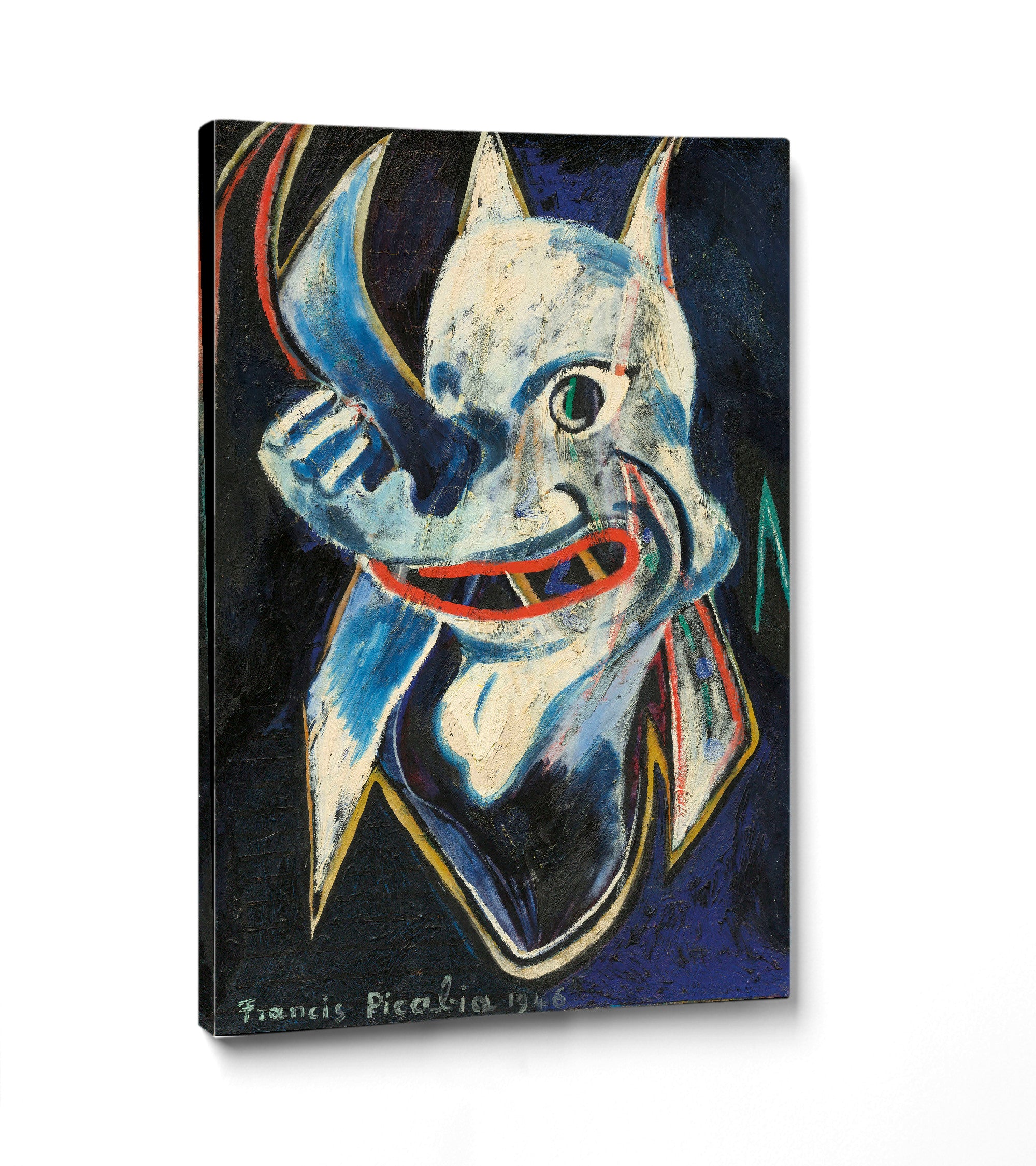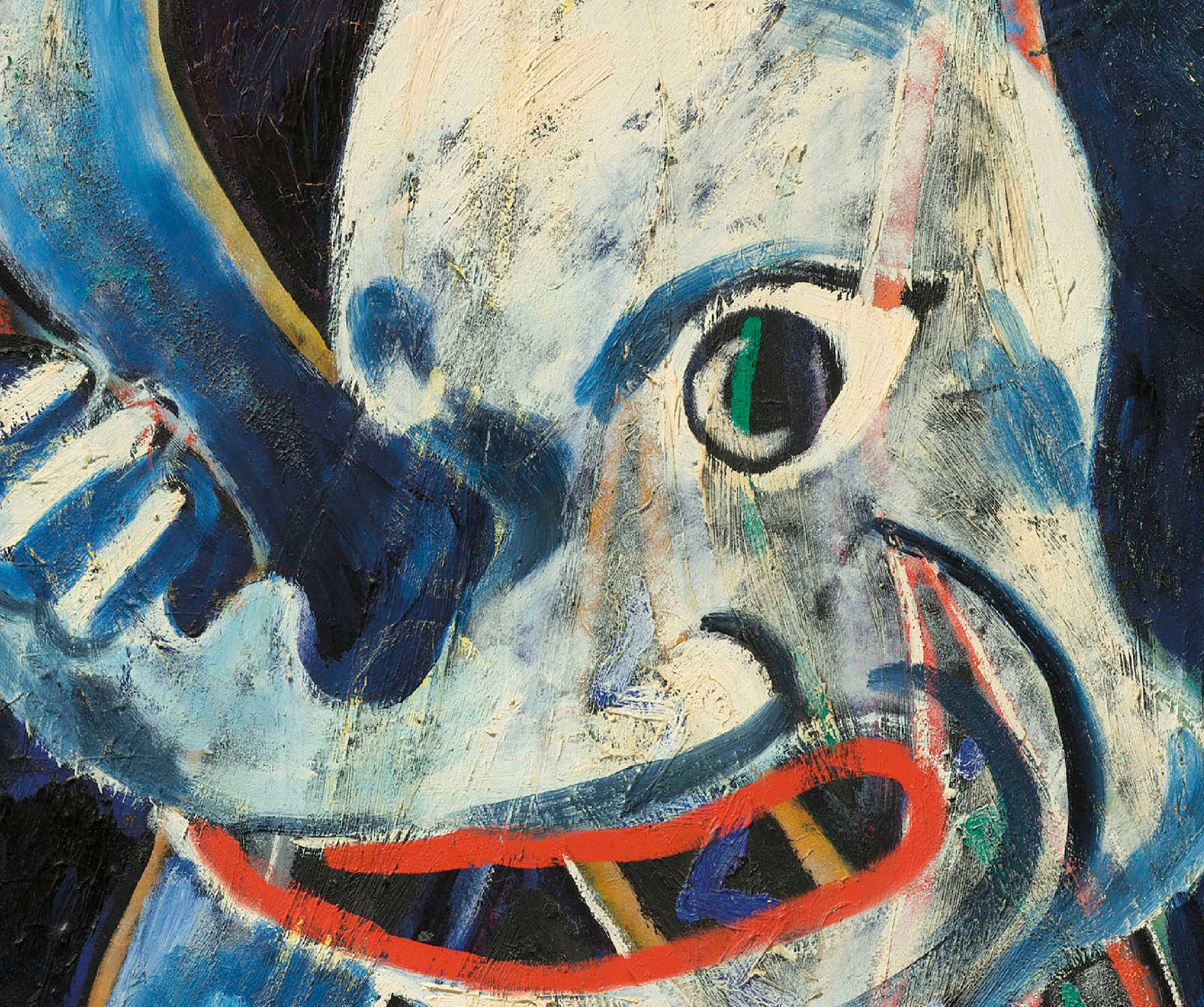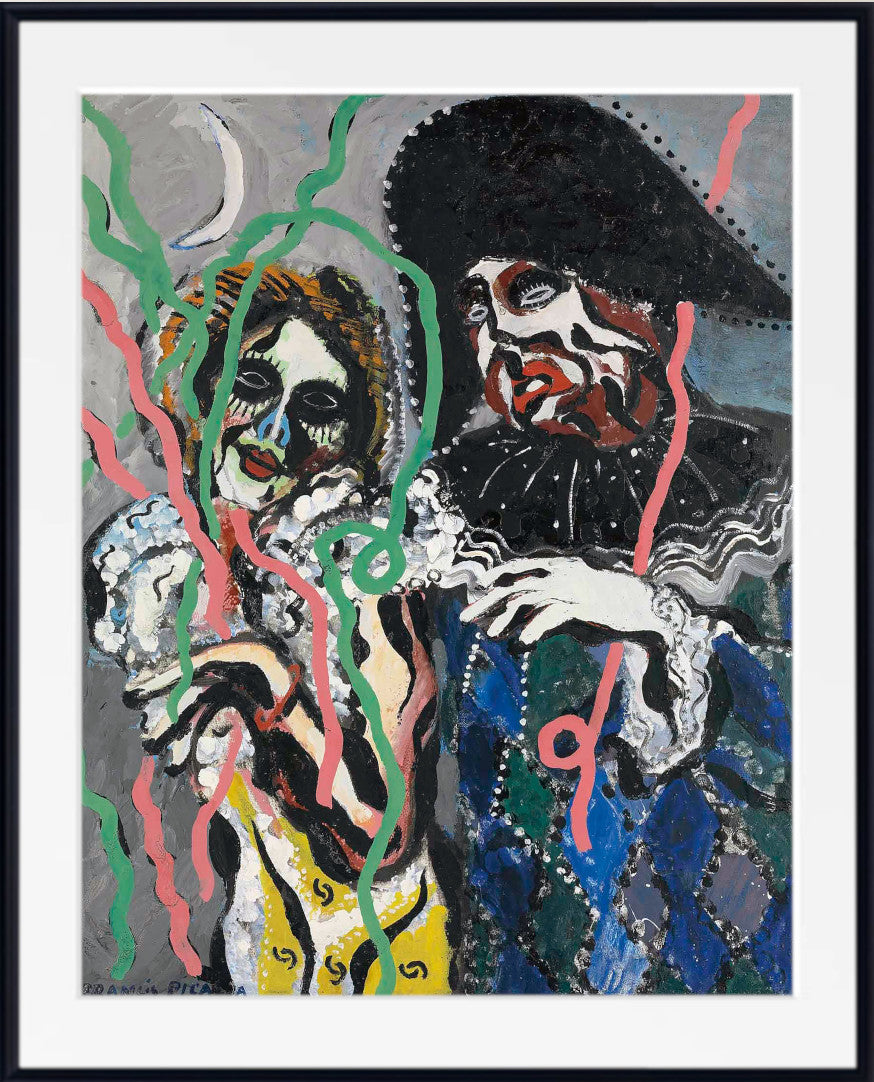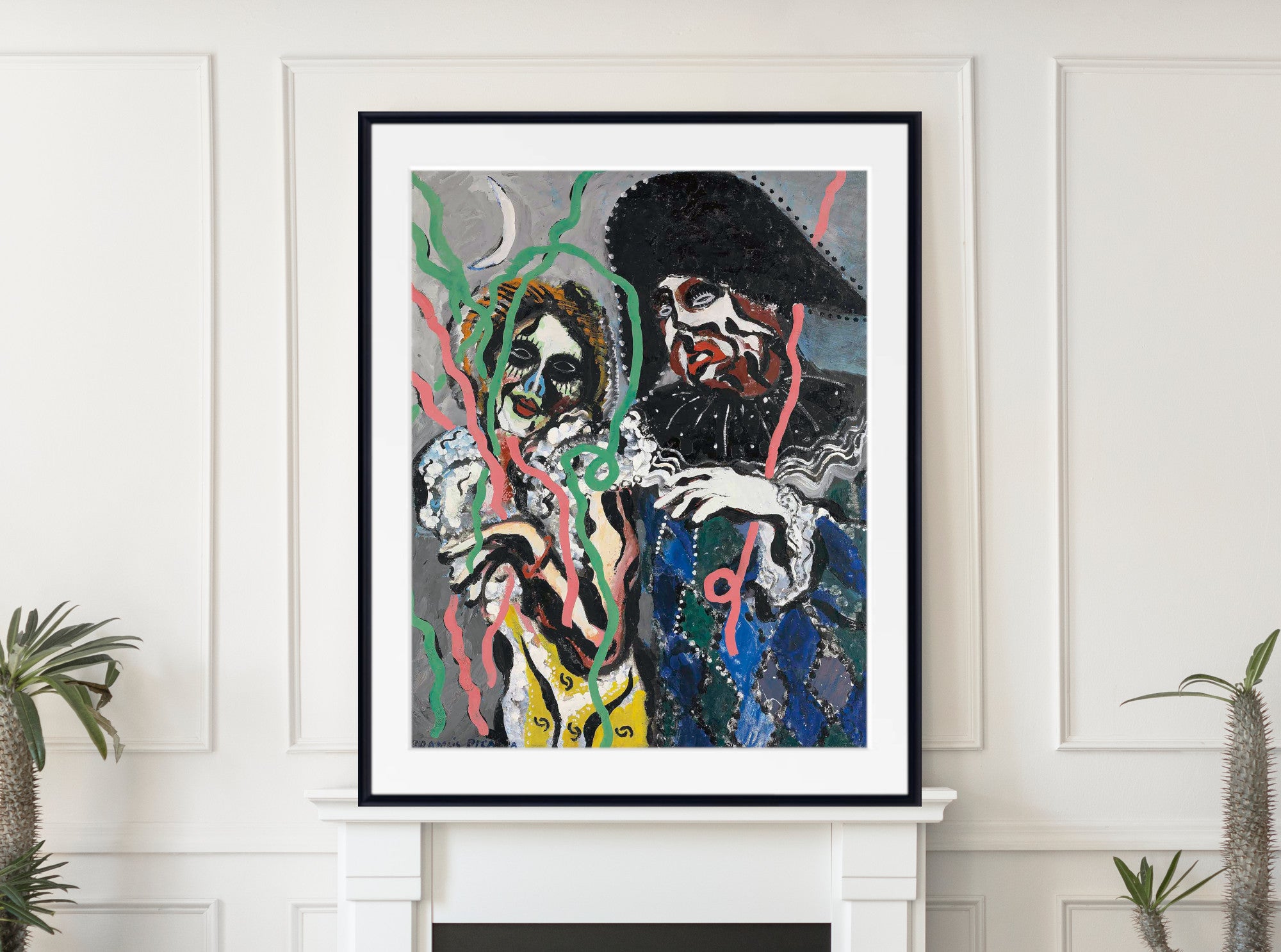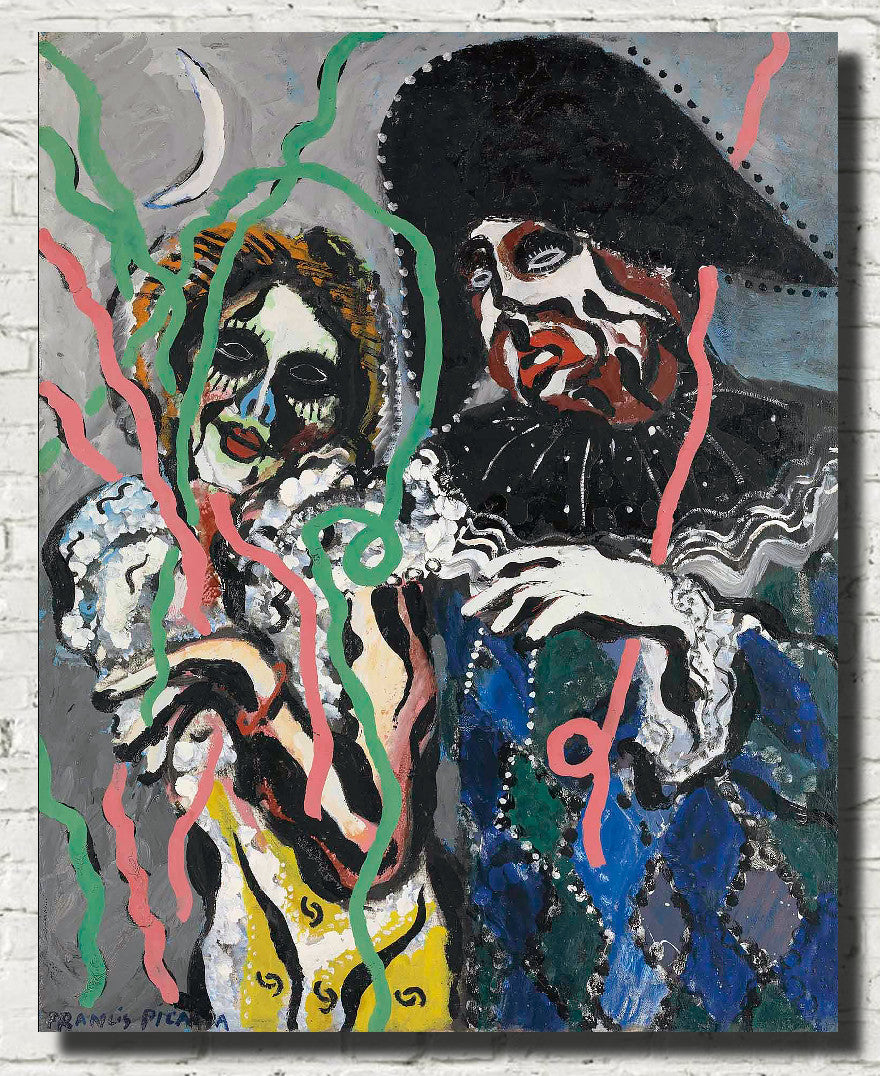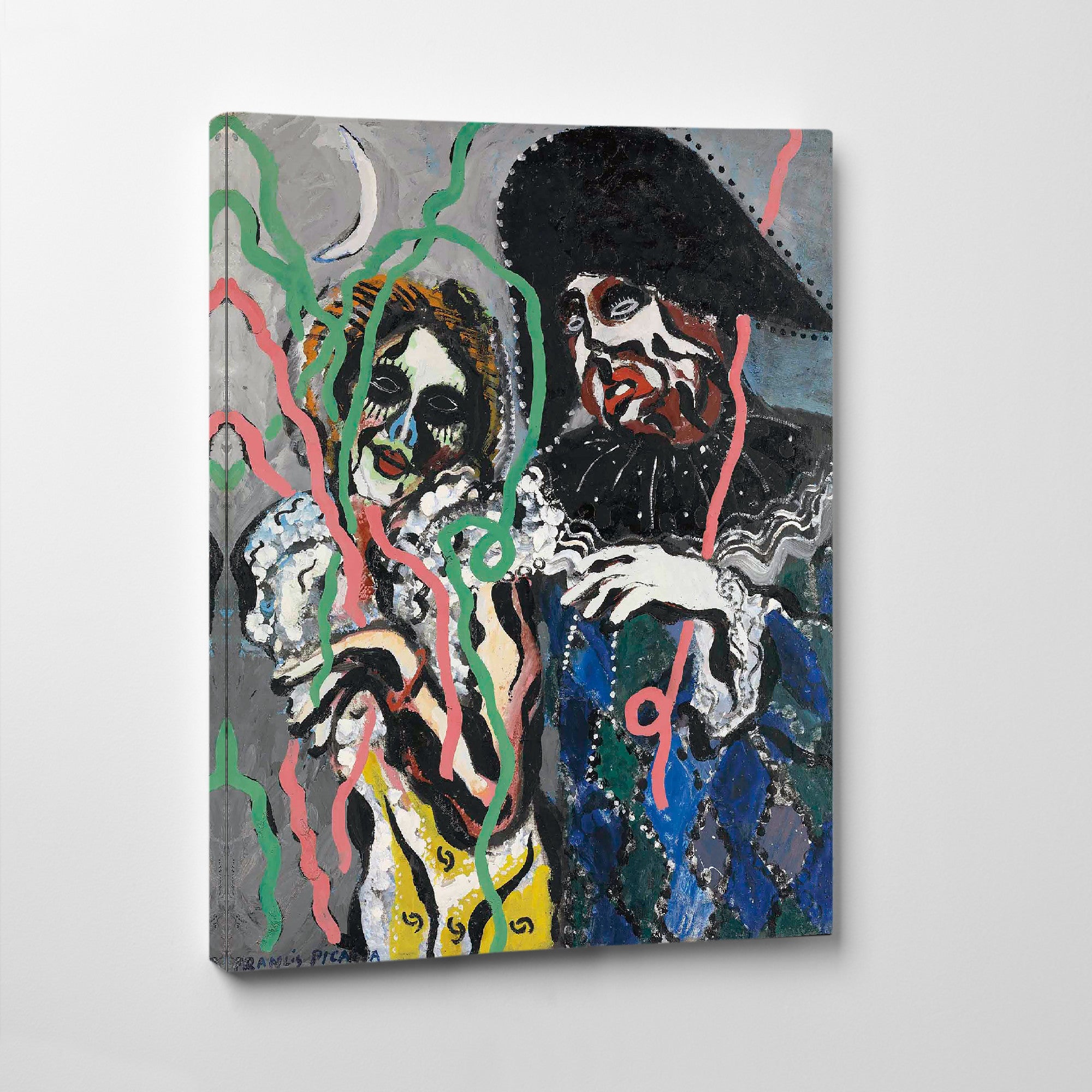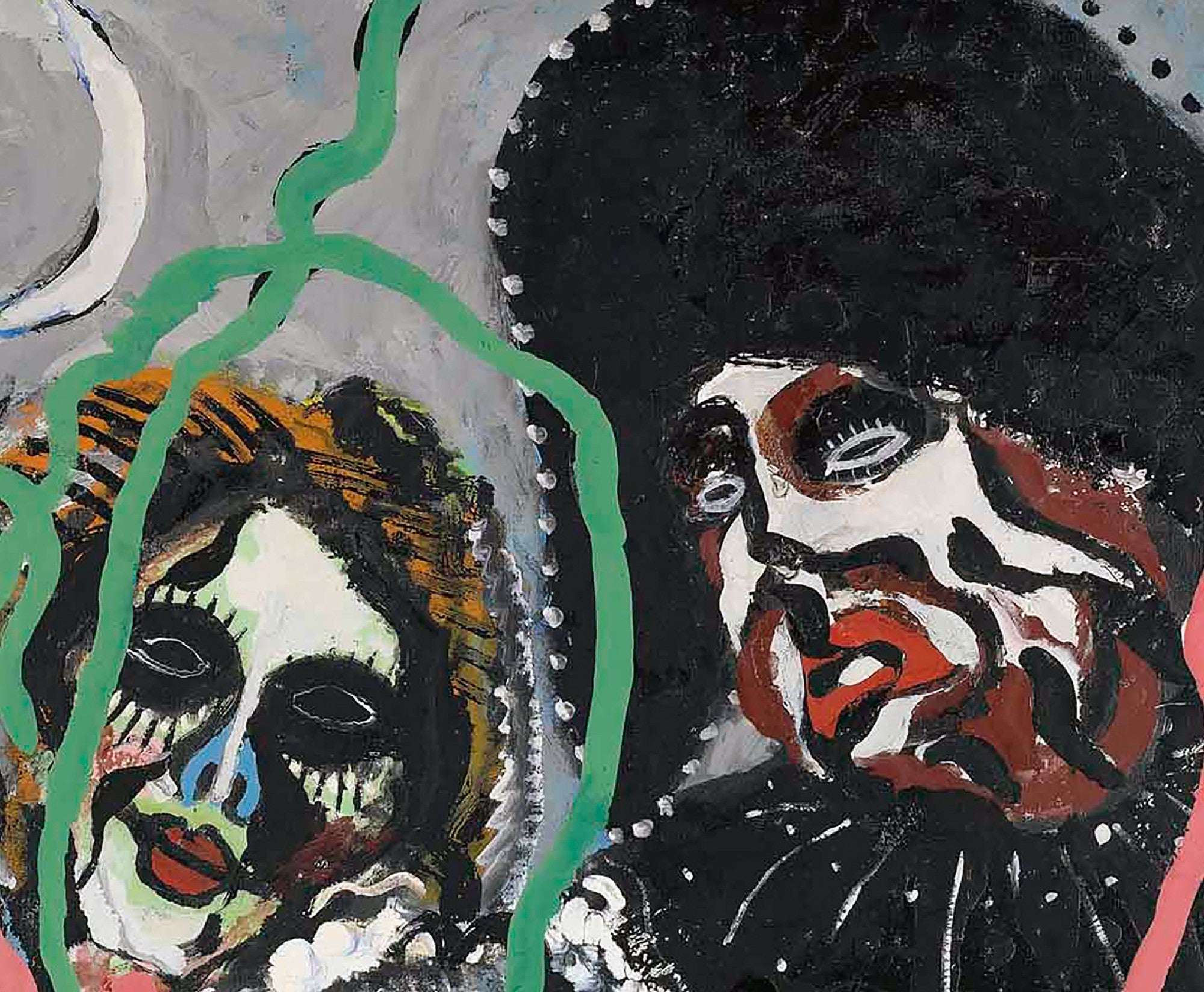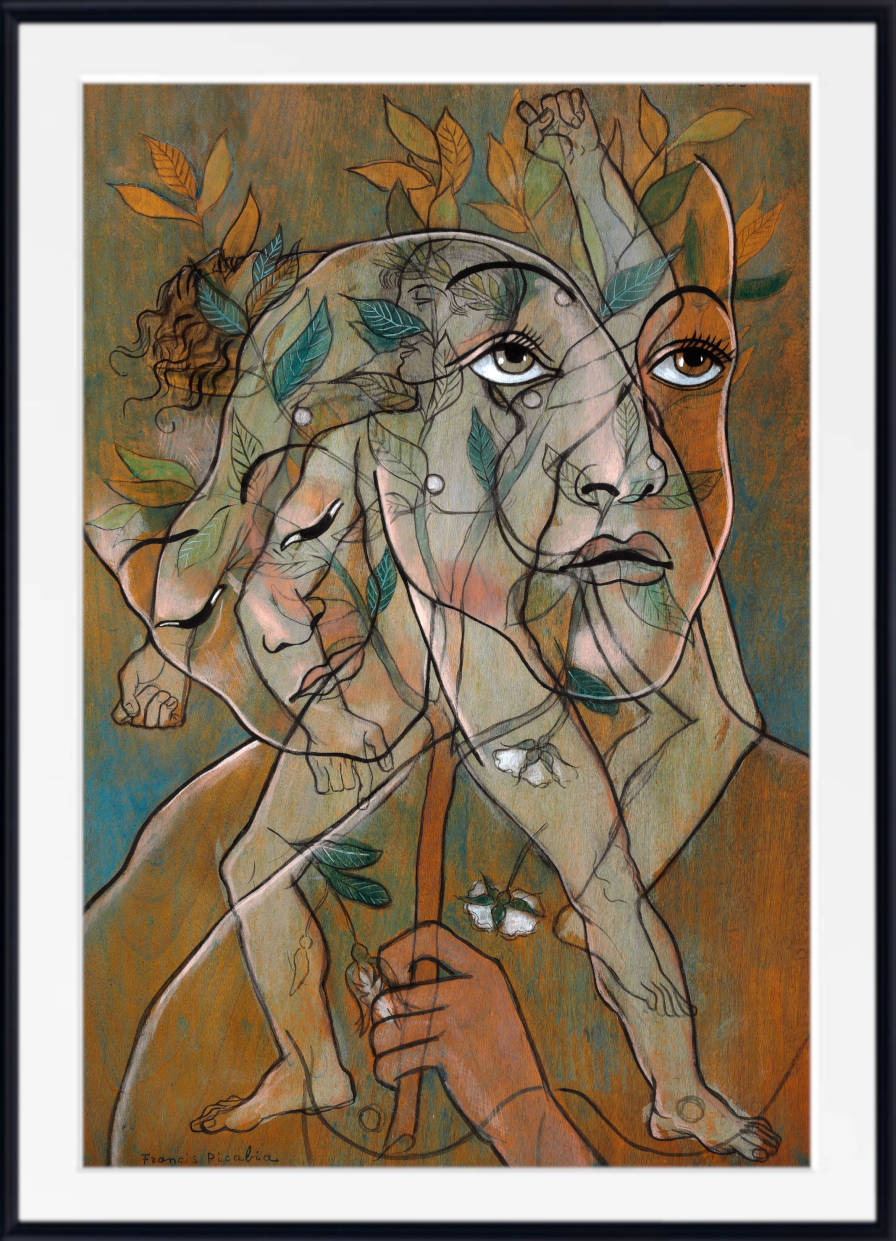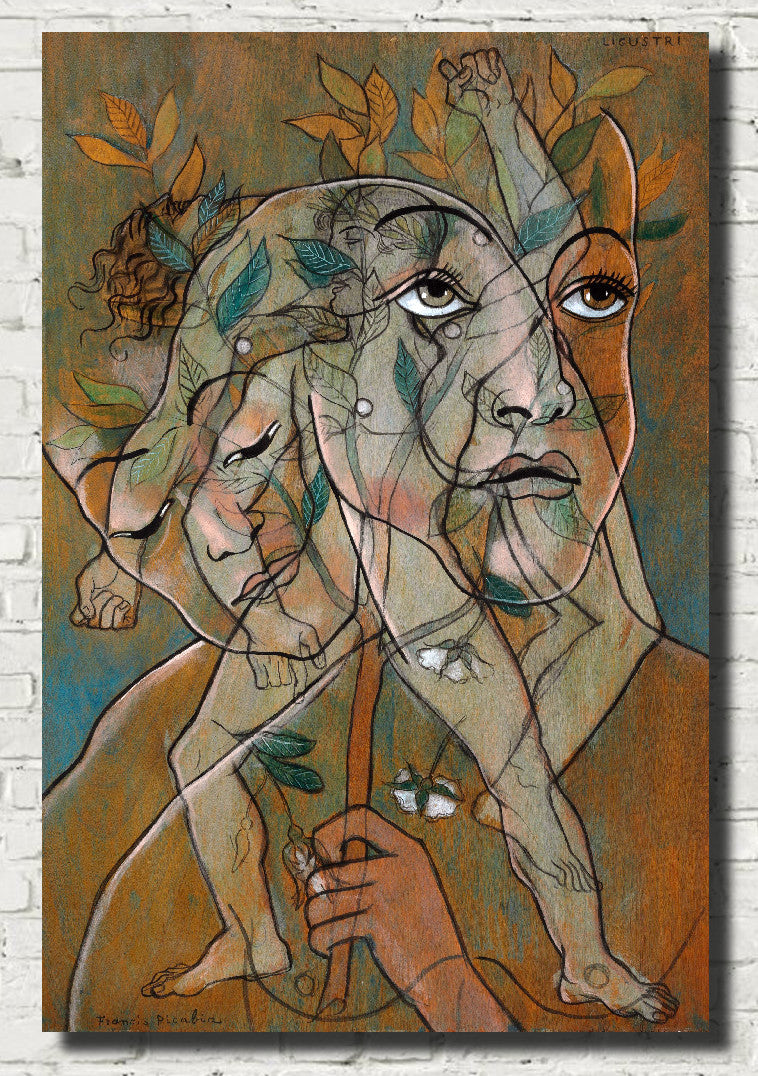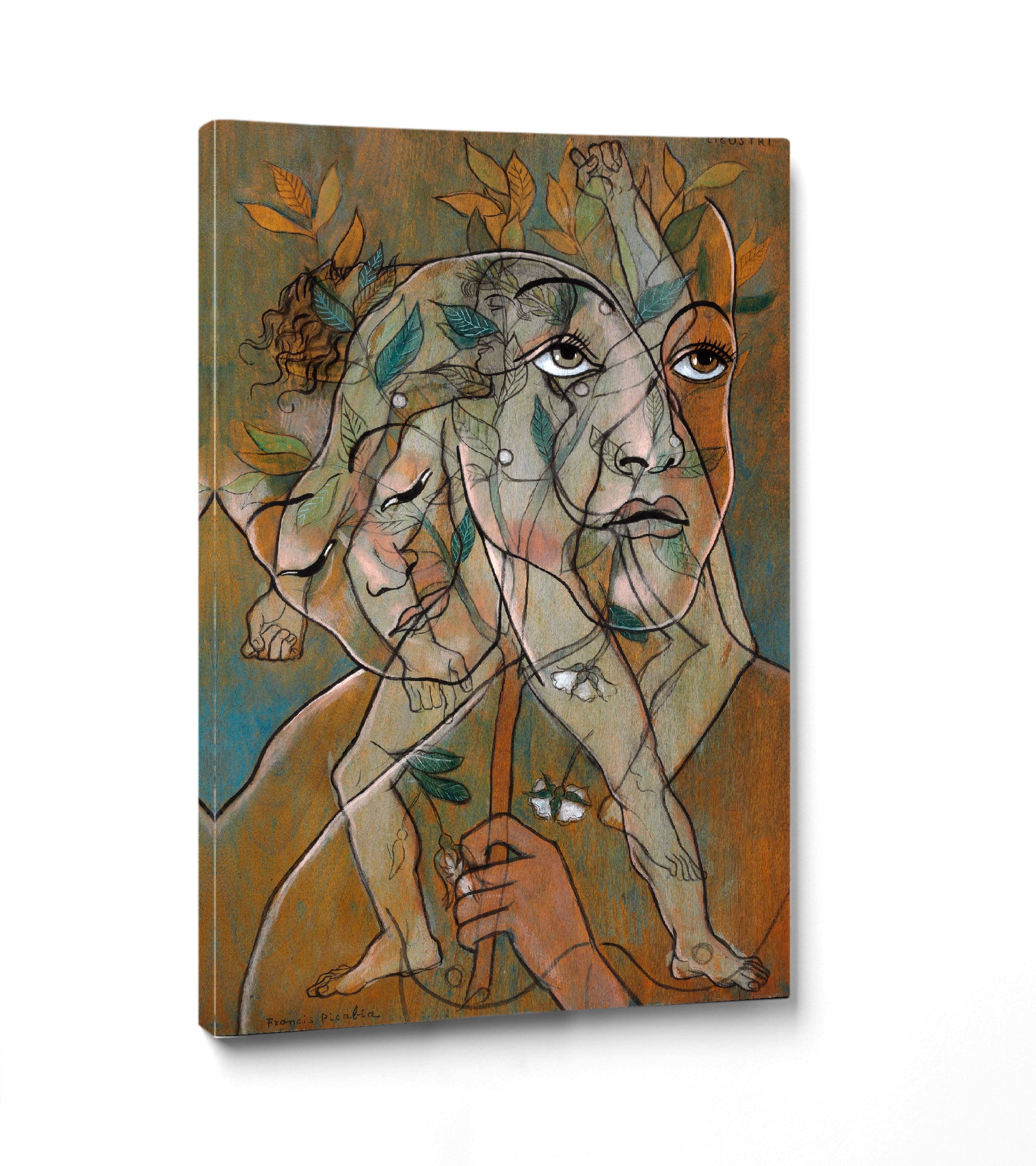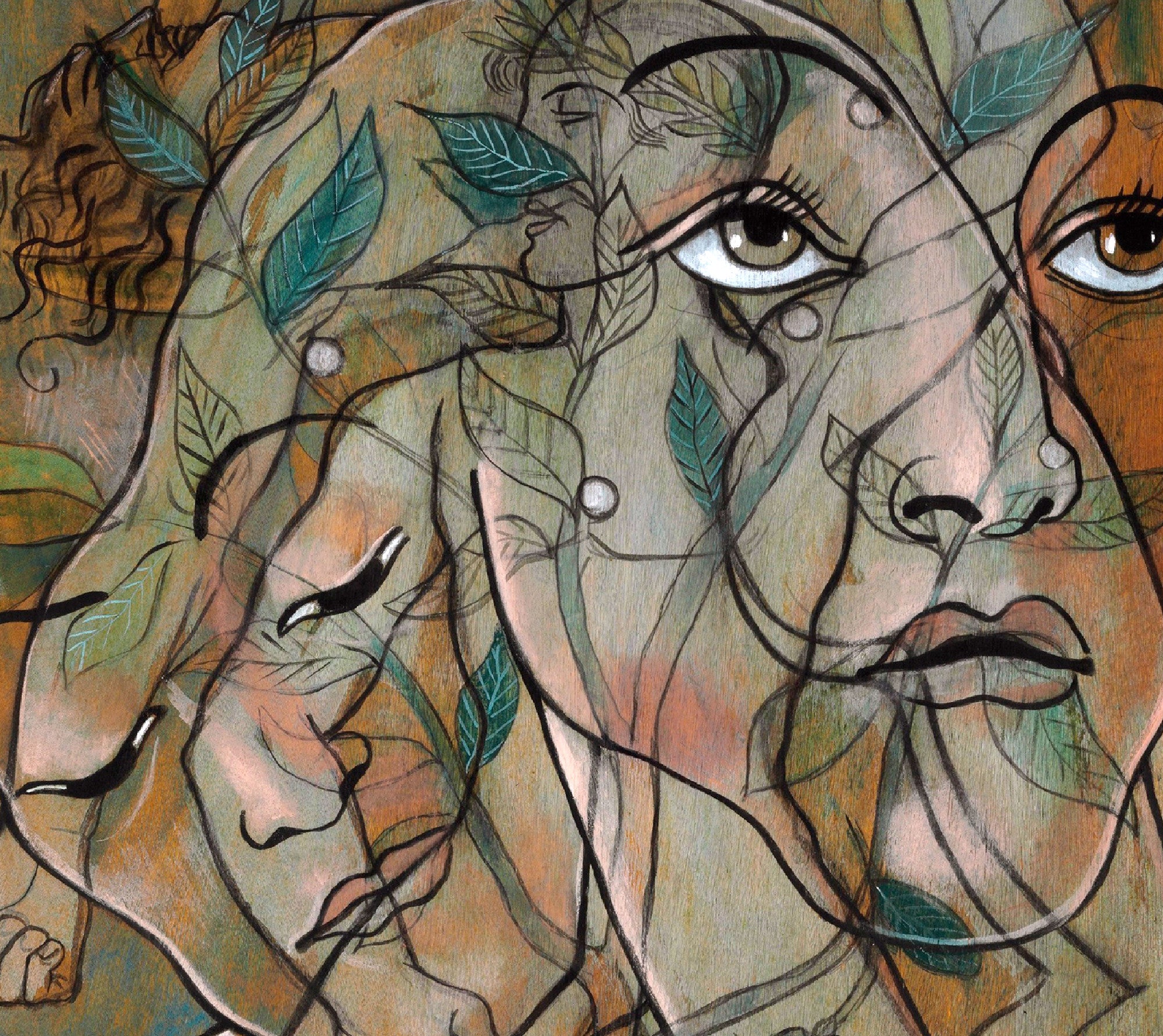Danseuse étoile sur un transatlantique (Star-Dancer on a Transatlantic Liner), Francis Picabia
BUY WITH CONFIDENCE
Couldn't load pickup availability
A concentration of many of the key themes of Picabia’s work from this period all combined into one lyrical, evocative and colourful abstraction, Danseuse étoile sur un transatlantique belongs to a series of abstract watercolours that the artist made on the theme of his recent experiences in America and exhibited in New York at the request of Alfred Stieglitz and his 291 group in March 1913. The inventive and pioneering abstract language that Picabia developed in these watercolours, and in Danseuse étoile sur un transatlantique in particular, were subsequently, on Picabia’s return to Paris, to serve as the templates for the creation of the artist’s first two, great, masterpieces: the two, ten-foot square canvases mysteriously entitled Udnie and Edtaonisl, now in the Centre Pompidou, Paris and the Art Institute of Chicago respectively, that took centre-stage at the landmark Salon d’Automne in Paris in 1913.
The subject-matter of this pair of abstract masterpieces derives directly from the theme of a ‘star-dancer’ and an ‘ecclesiast’: two figures who have their roots in the story of Picabia’s transatlantic voyage to New York in 1913 and in the two watercolours (Danseuse étoile sur un transatlantique and its companion piece Danseuse étoile et son école (Star Dancer and Her School of Dance)) which Picabia made in memory of this voyage on his arrival in New York.
Picabia and his wife Gabrielle Buffet had set sail for New York in January 1913 aboard the transatlantic steamer the Lorraine, where, to Picabia’s disappointment, they were booked into a third-class cabin. During the voyage however, Picabia, by donning his black-tie suit, managed to gain access to the first-class barroom where, to his delight, he found himself amongst a select group of passengers. There, alongside the cigars and the champagne, he was able to enjoy the dance rehearsals of a fellow passenger. This was the then famous dancer and silent movie actress Stacia Napierkowska who was travelling on a dance-tour of New York with her troupe. Of Polish origin, Napierkowska’s risqué dancing and dynamic personality had made her an international sensation. Indeed, so suggestive was her performance that soon afterwards in New York, her tour was to be cancelled and she was to be arrested on a charge of ‘public indecency.’ During his sea-journey Picabia became a regular at Napierkowska’s rehearsals where, to his great amusement, he often found himself in the company of a Dominican priest furtively watching while also trying to conceal his interest. During a prolonged storm that laid most of the other passengers low with sea-sickness, Picabia and Napierkowska came to know each other well, having found themselves among the few on board to remain unaffected.
The personae of the ‘Star Dancer’ (Napierkowksa) and an ecclesiastic priest, were subsequently to become a central and recurring theme in several of Picabia’s most important paintings of the next two years: most notably his two great paintings Udnie and Edtaonisl. Debate still rages as to the meaning of Picabia’s title Udnie – though the subtitle ‘Young American Girl: Dance’ makes its subject-matter quite clear, Edtaonisl by contrast has long been decoded as a sequential fusion of the words ‘Etoil[e]’ and ‘Dans[e]’ and to refer to the ‘Star Dancer’ Napierkowska, while its subtitle (Ecclesiastic) no doubt points to the Dominican priest in her audience. The title ‘Edtaonisl’ also appears in Picabia’s other great painting of 1913, Catch as Catch Can, now in the Philadelphia Museum of Art.
All of these paintings on the theme of the ‘Star Dancer’ reflect a coming together of the two themes of the dance and of religious processions that had distinguished Picabia’s first post-Cubist abstractions of 1912. Mixed with his experience of the modernity of New York, its skyscrapers, automobiles and, in particular, its Afro-American music, Picabia has in these works begun to create a radically pictorial language of abstract and abstracted form. These new works are pictures that fuse such earlier Cubist abstraction and its break-down of phenomenological form with a sense of the dynamic rhythms of the body in motion and through time and space to create a new lyrical abstraction pulsing to a tempo or pictorial structure akin to musical rhythm and determined largely by intuitive painterly impulse. ‘[The pictures] that I have made since my arrival in New York,’ Picabia was to say of this series of works, ‘express the spirit of New York as I feel it, and the crowded streets of your city as I feel them, their surging, their unrest, their commercialism, their atmospheric charm … I absorb these impressions. I am in no hurry to put them on canvas. I let them remain in my brain, and when the spirit of creation is at flood-tide, I improvise my pictures as a musician improvises music’ (‘How New York Looks to Me,’ New York American, March 30, 1913, p. 11).
Of these New York paintings it is the watercolours Picabia made dealing with music and dance that were to point the way in which the great abstract paintings made on his return to Paris would develop. In addition to the two paintings (Danseuse étoile sur un transatlantique and Danseuse étoile et son école) referring to Picabia’s encounter with Stacia Napierkowska on board the Lorraine, these New York works also include a series of pictures entitled Chansons nègre. Here, music, rhythm, dance, time, motion, the concept of displacement and of the body travelling through time and space – all the key concepts of Duchamp and Picabia’s abstraction, in fact – become completely interwoven within a lyrical form of abstraction. It is a new pictorial language expressive of an entirely modernist understanding of reality. A language that, similar to the new cinema, attempts to convey a sense of perpetual motion and to fuse moving form, sensation and experience into an entirely original pictorial language that still contains hints and suggestions of representational reality. Some observers, for instance, have detected the image of two ship’s funnels in the centre of Danseuse étoile sur un transatlantique.
In the preface to the exhibition of such radically new watercolour abstractions at the 291 Gallery in March 1913, Picabia admitted to the futility of attempting to create a completely non-objective art, but also discouraged attempts to decipher any remnants of representation in his new pictures. ‘The qualitative conception of reality can no longer be expressed in a purely visual or optical manner …,’ he wrote. ‘The resulting manifestations of this state of mind which is more and more approaching abstraction, can themselves not be anything but abstraction… But expression means objectivity otherwise contact between beings would become impossible, language would lose all meaning. This new expression in painting is “The objectivity of a subjectivity.”… Therefore, in my paintings the public is not to look for a “photographic” recollection of a visual impression or sensation, but to look at them in an attempt to express the purest part of the abstract reality of form and colour itself’ (quoted in W. Camfield, Francis Picabia - His Art, Life and Times, Princeton, 1979, pp. 50-1).
Francis Picabia (22 January 1879 – 30 November 1953) was a French avant-garde painter, poet and typographist. After experimenting with Impressionism and Pointillism, Picabia became associated with Cubism. His highly abstract planar compositions were colourful and rich in contrasts. He was one of the early major figures of the Dada movement in the United States and in France. He was later briefly associated with Surrealism, but would soon turn his back on the art establishment.


All prints are made using archival art stocks and UV pigment inks to give up to 200 years life. Prints are sold unframed and unmounted.
All orders for unframed fine art prints and original paintings are dispatched within 2 working days of receipt of payment.
Orders for custom framed prints are dispatched within 4 working days.
All orders are fully tracked from dispatch to delivery at your home or business.
All print and original painting orders are fully insured against loss or damage in transit. We refund or replace any damaged or lost orders.
Buy with confidence - read what our satisfied customers have to say - Reviews
Fine art papers are printed without any additional white border Please let us know at the time of ordering if you would like a small additional white border.
Rolled canvas options have an additional white border of approximately 2.5 inches (7cm) on all 4 sides to aid stretching.
Ready to hang canvas panels are stretched on 1.5 inch deep solid pine frames from sustainable forestry sources. The image is mirrored on all 4 sides to give an aesthetically pleasing finish.
Why not have us gift wrap your order and attach a personalised message to the recipient. Available for all orders. Each order is hand wrapped in high quality gift wrap with meatllic ribbon and bow. Your personalised message is printed on a card which is included with your order.
Have your hand wrapped gift delivered directly to the recipient.
Full tracking and insurance included with every order.
Please note design may vary depending upon availability
Just purchase the gift wrap option HERE
We have a wide range of frames in standard sizes and we also make custom size frames.
To order a framed print:
1. select the print size you would like along with the print materials (matte paper, fine art paper).
2. Add your print choice to the basket.
3. Choose from our range of frames
4. Select the same size as the print you have added to your basket. If the frame size you want is not listed please contact us
5. Choose from the mount or no-mount option
6. Add your frame choice to the basket
7. Proceed to checkout.
Why Choose GalleryThane?
- Printed and framed in-house
- Free UK delivery
- Fast international delivery
- Tracking and insurance included in every order
- Fast 1-3 day dispatch
- Gift wrapping service available
- Gallery quality materials
- Sustainable, eco-friendly packaging
- Great customer support
What makes our Prints and Canvas Panels so special

Latest Giclee Printing Technology
We have invested in the latest wide format print technology to produce museum quality giclee prints utilising the highest quality pigment inks to give outstanding colour reproduction.

Museum Quality Archival Fine Art Papers
We print on the finest quality fine art papers with textured, smooth and lustre finishes for prints which last a lifetime.
From aceo miniatures to 40x80 inch large format, every print has our lifetime quality guaranteee.

Solid Wood Frames, Cotton Canvas
All of the wood for our canvas panels and frames is responsibly sourced from manages forests. Our cotton canvas is completely seedless for the highest quality reproduction possible.

